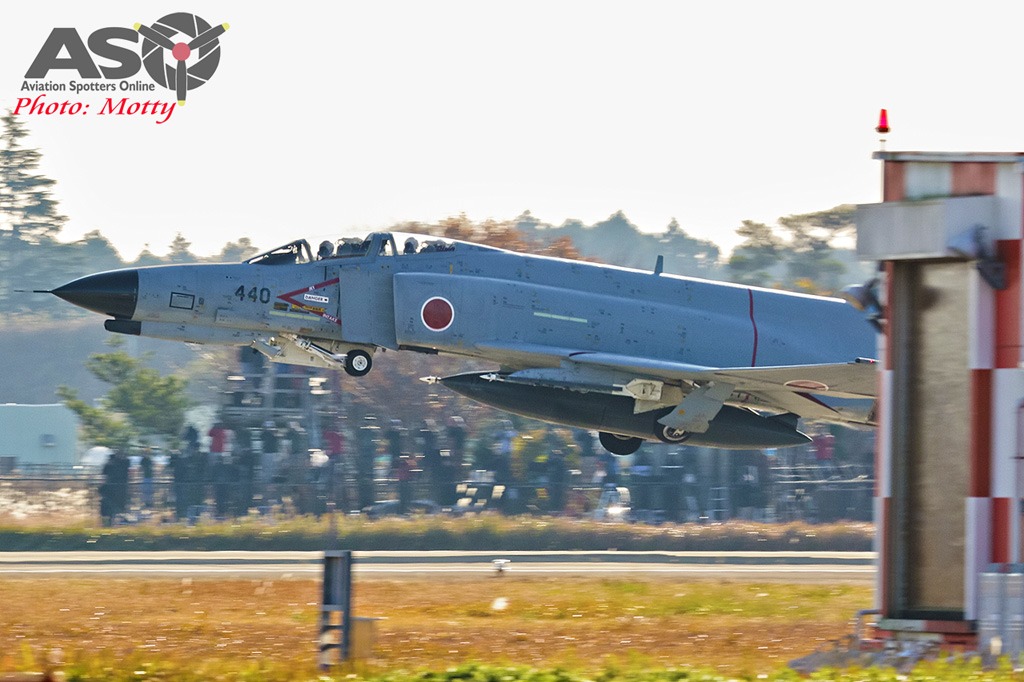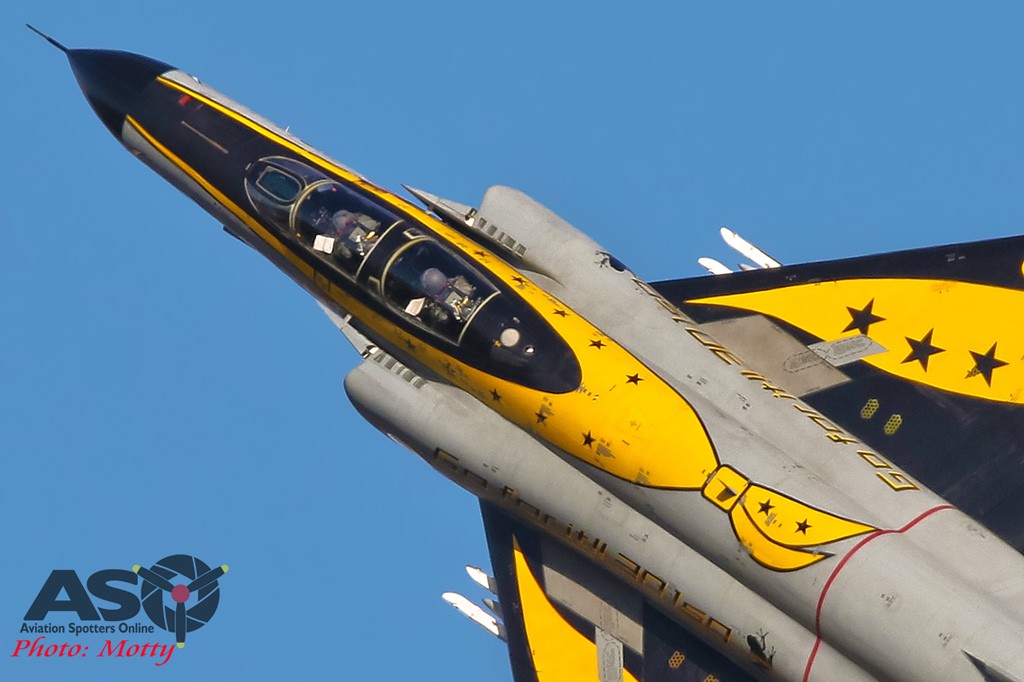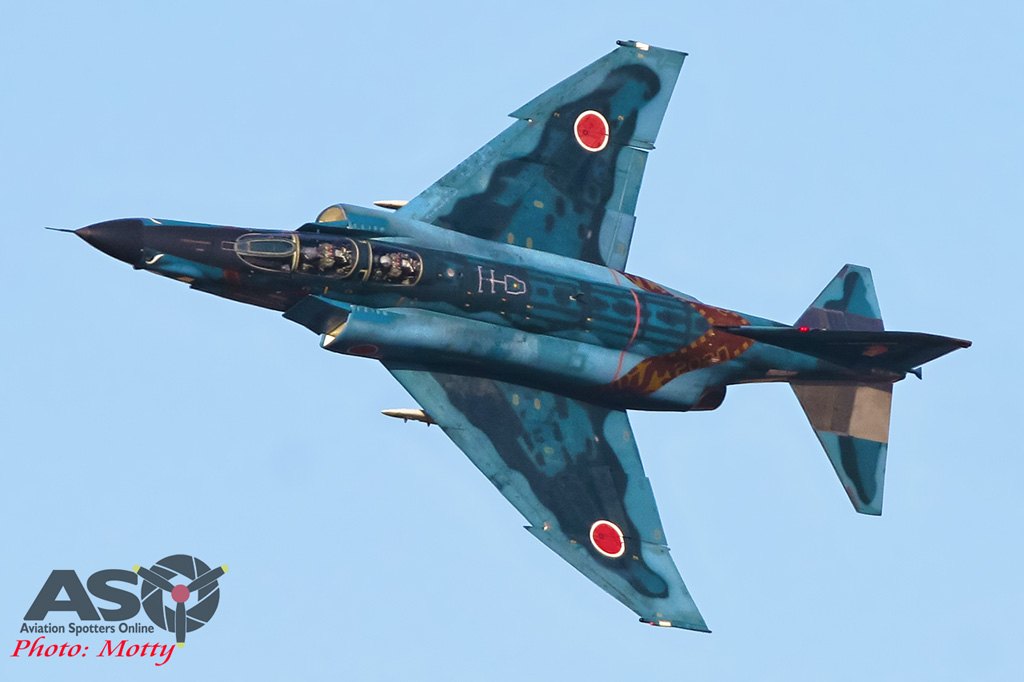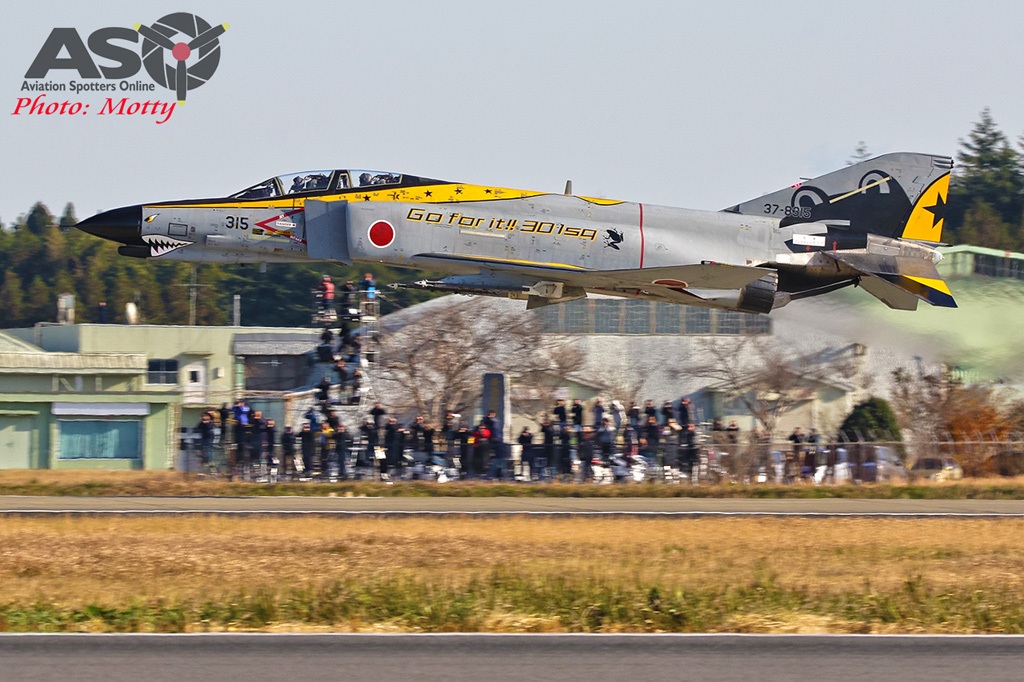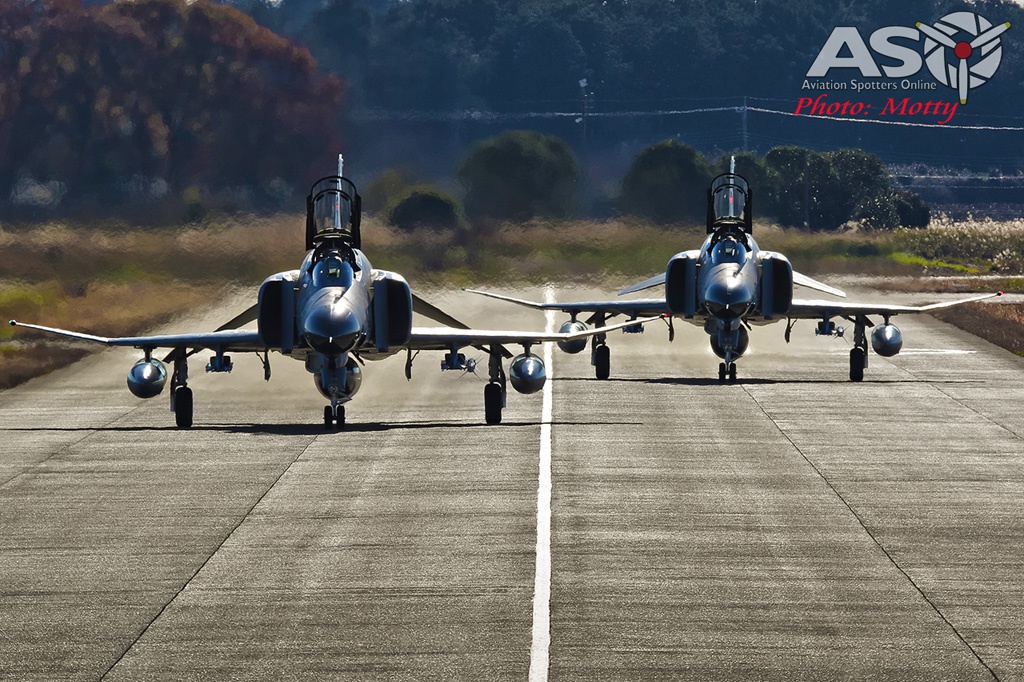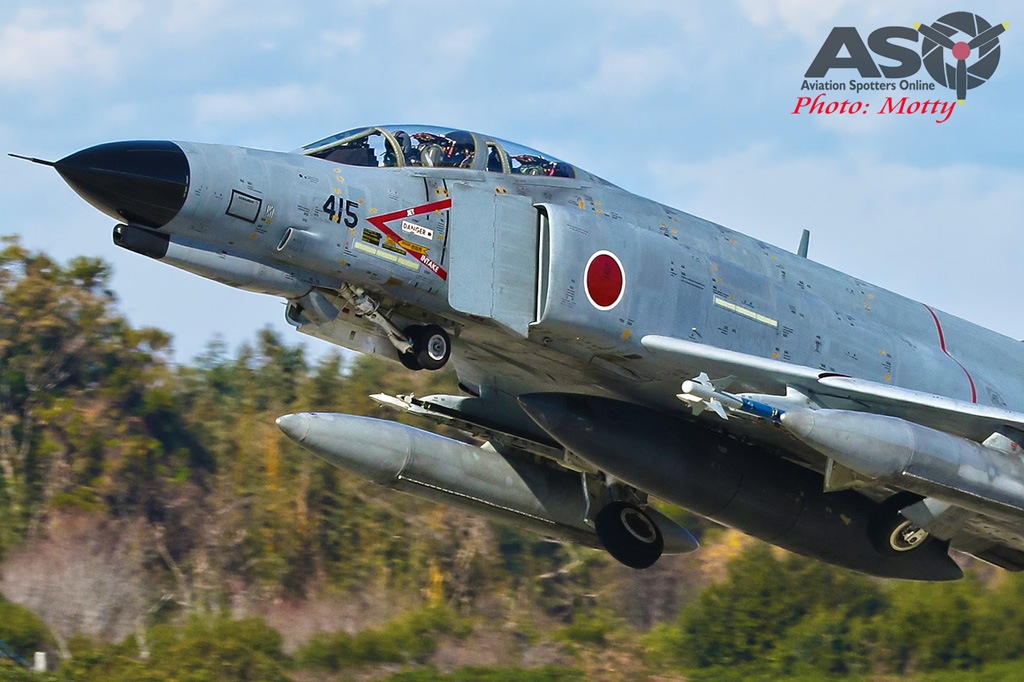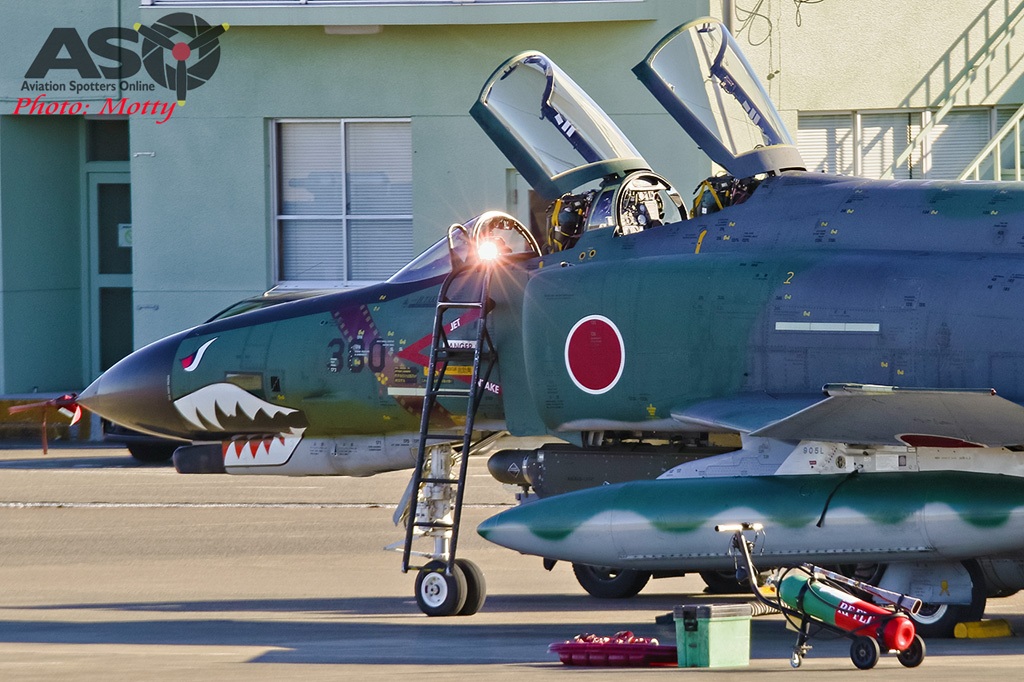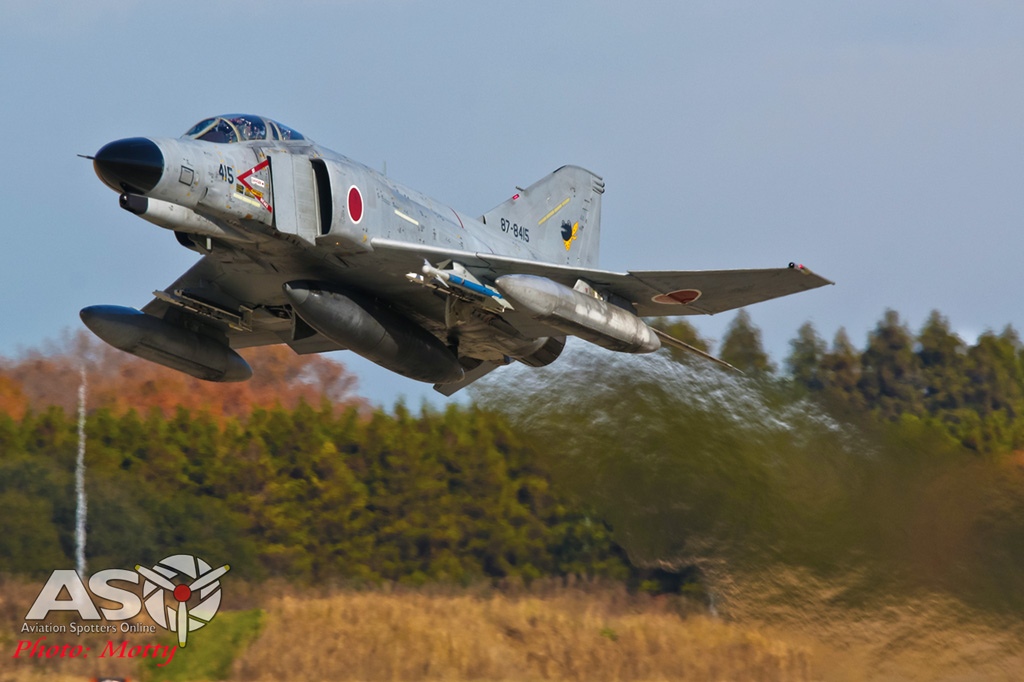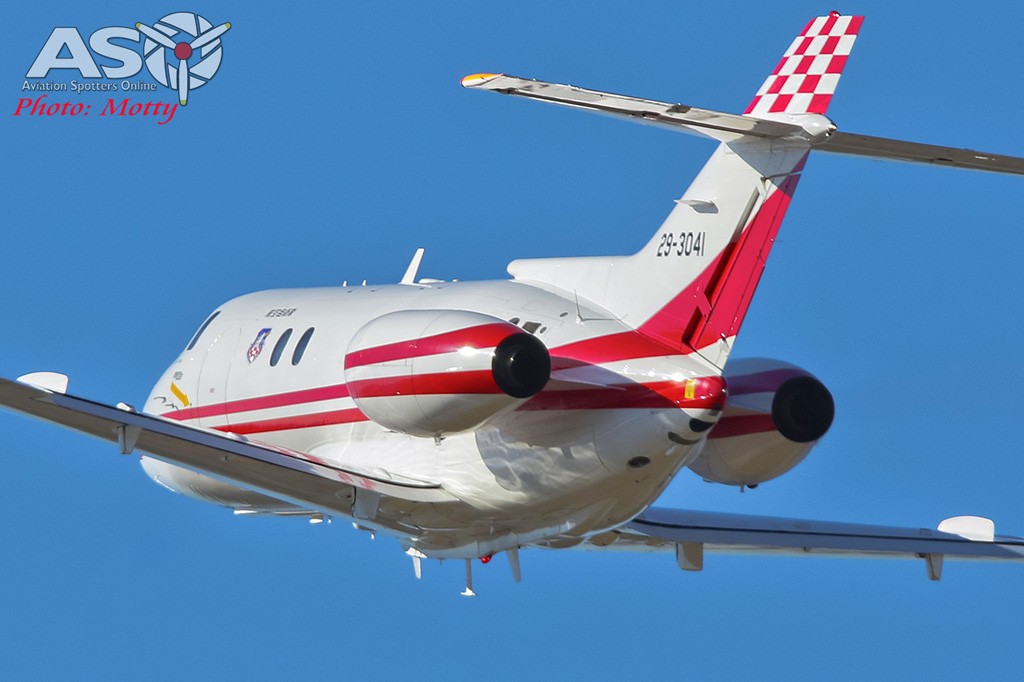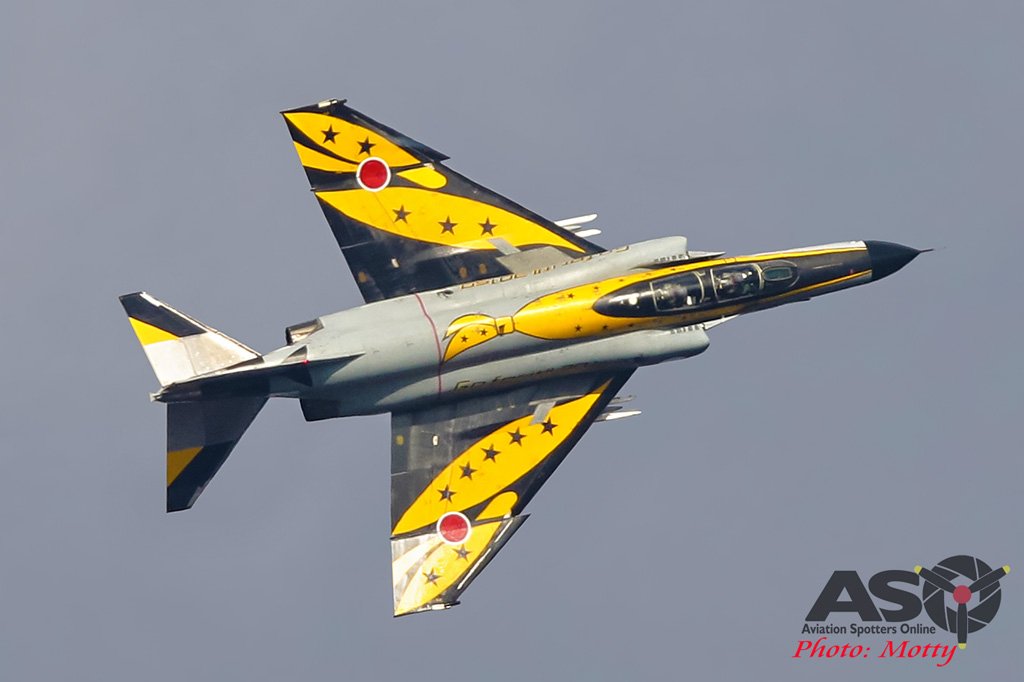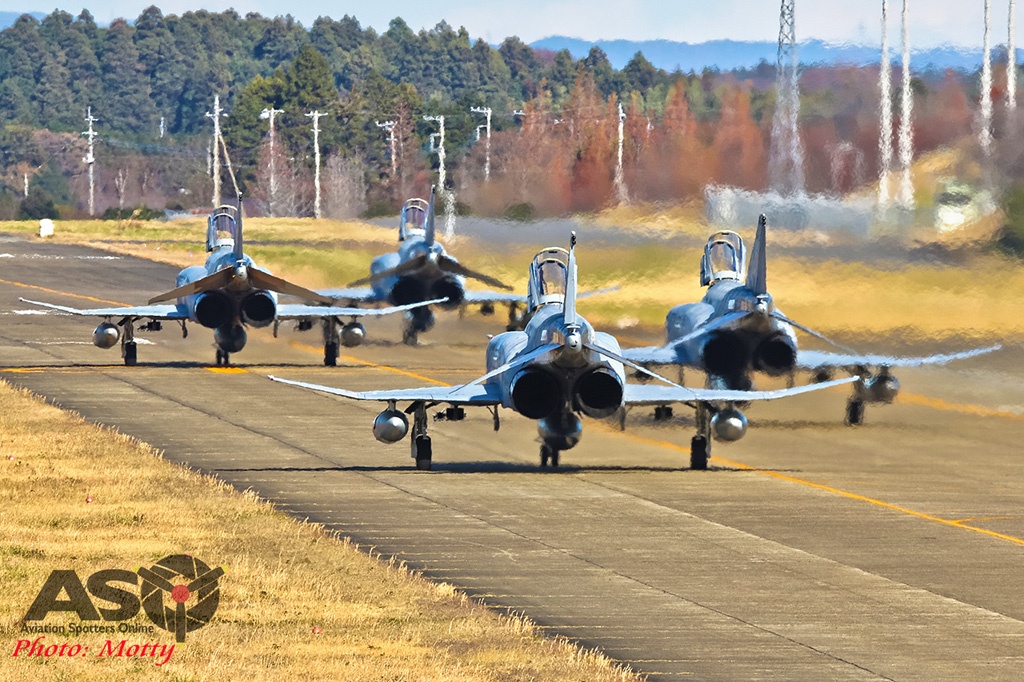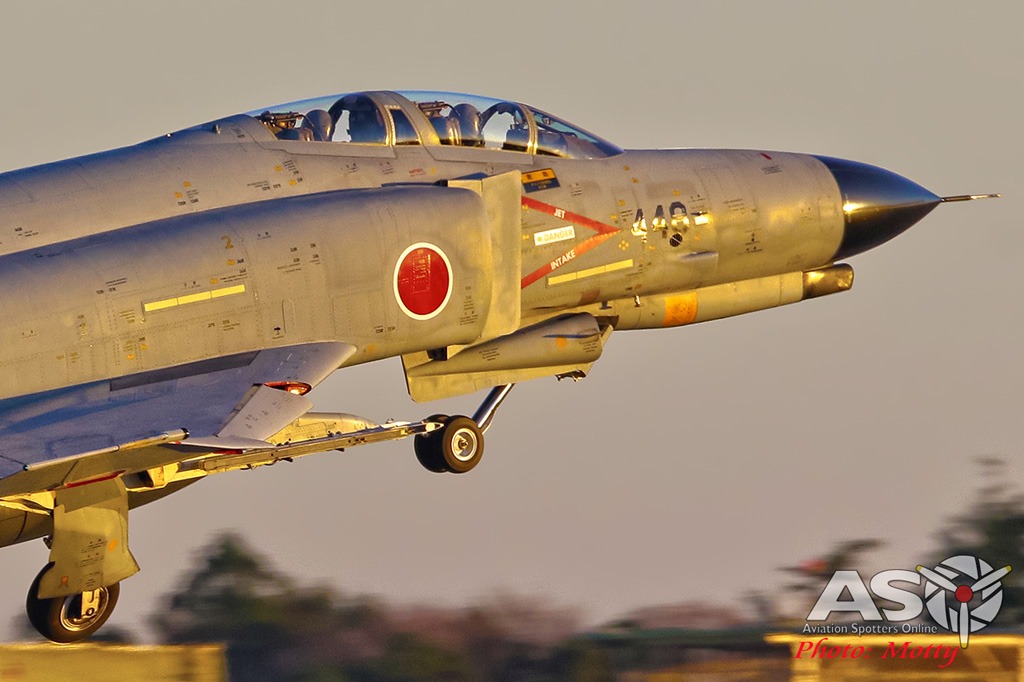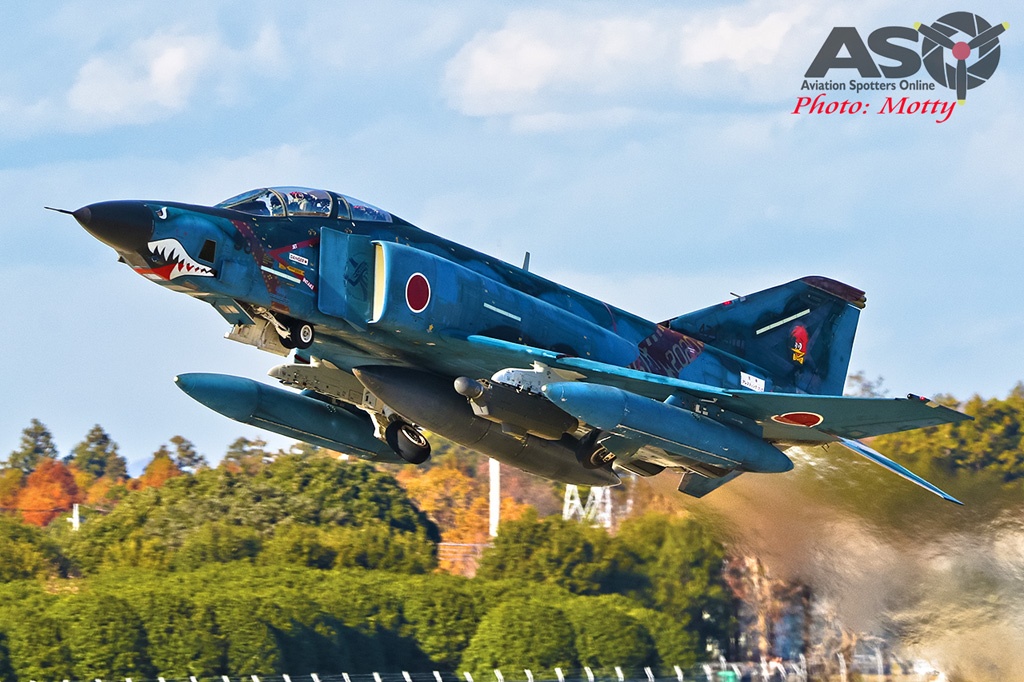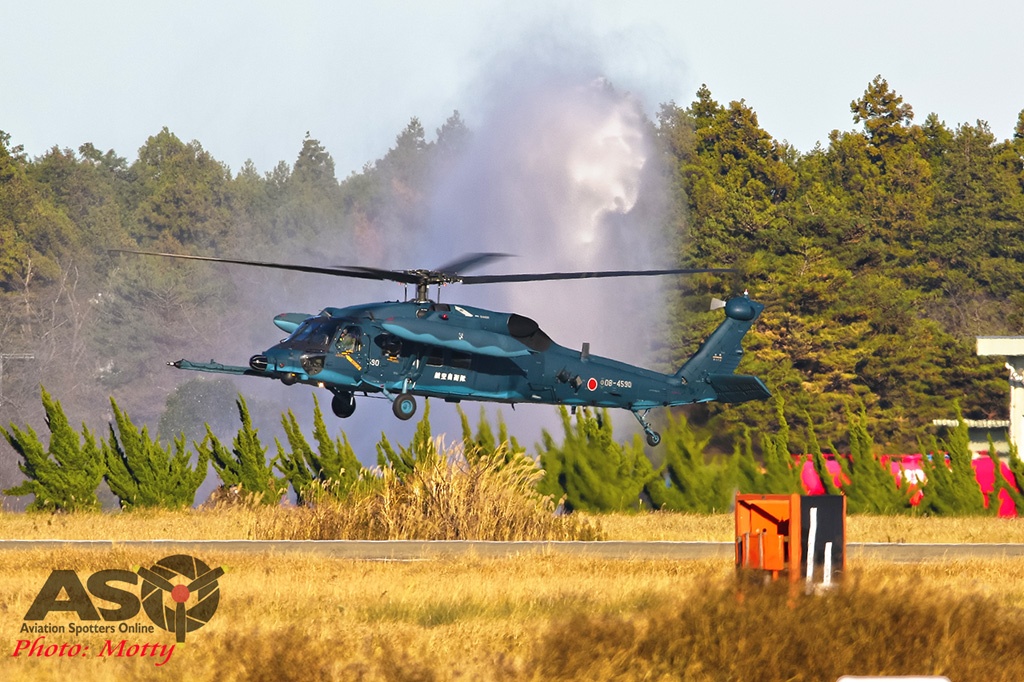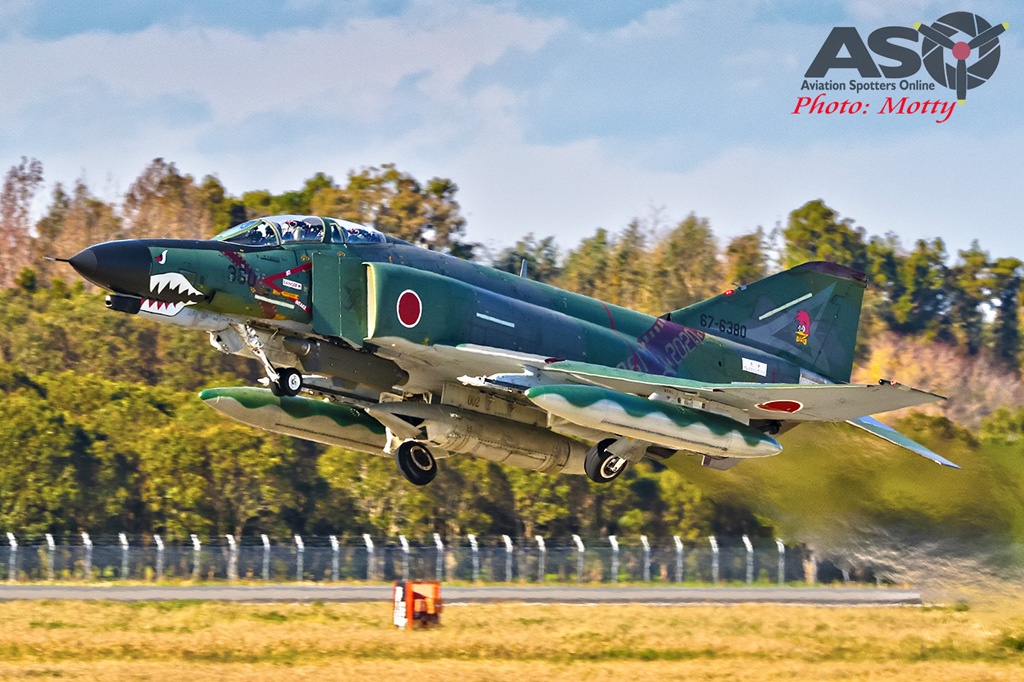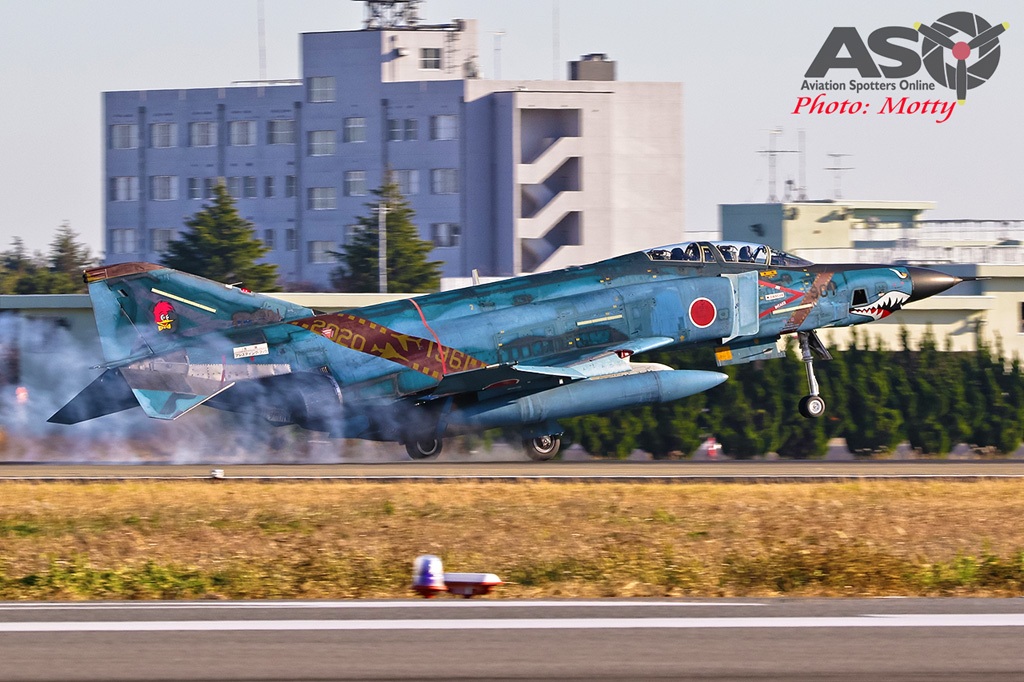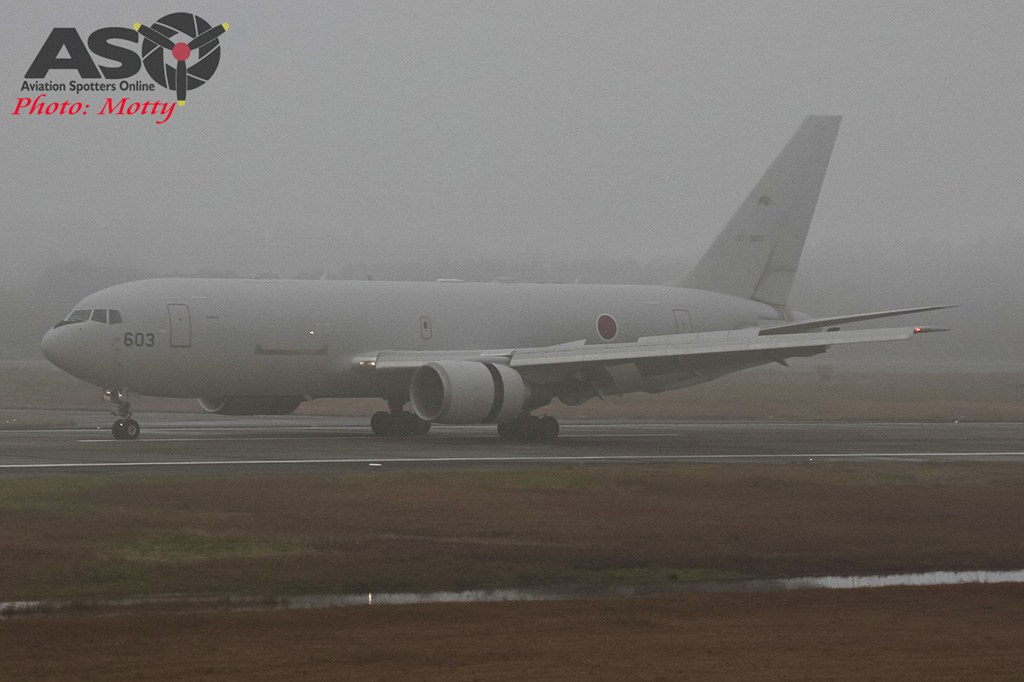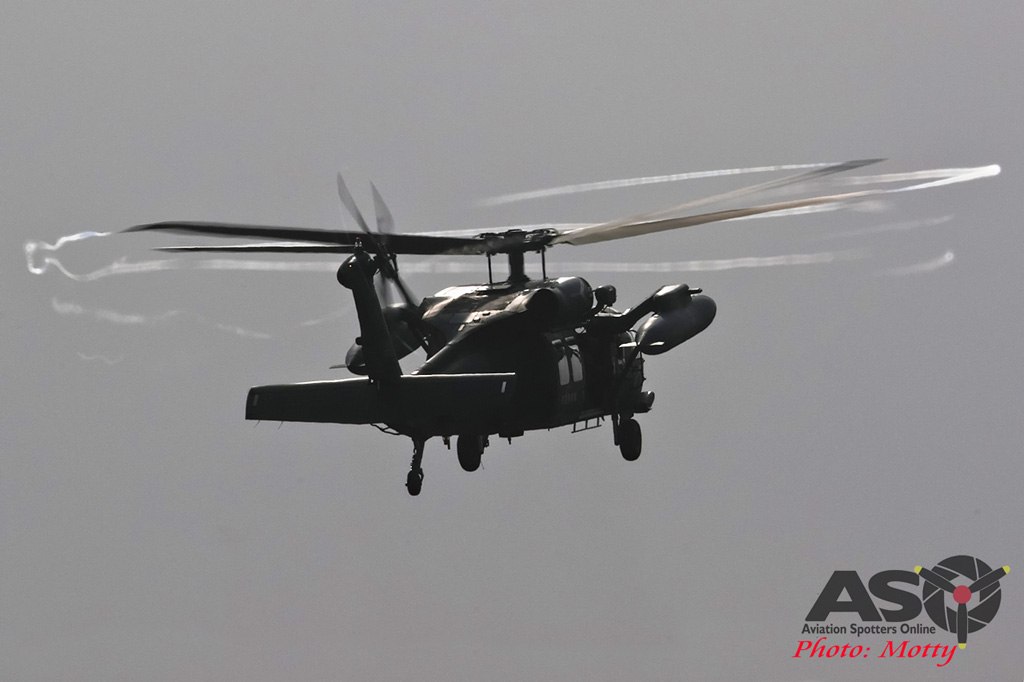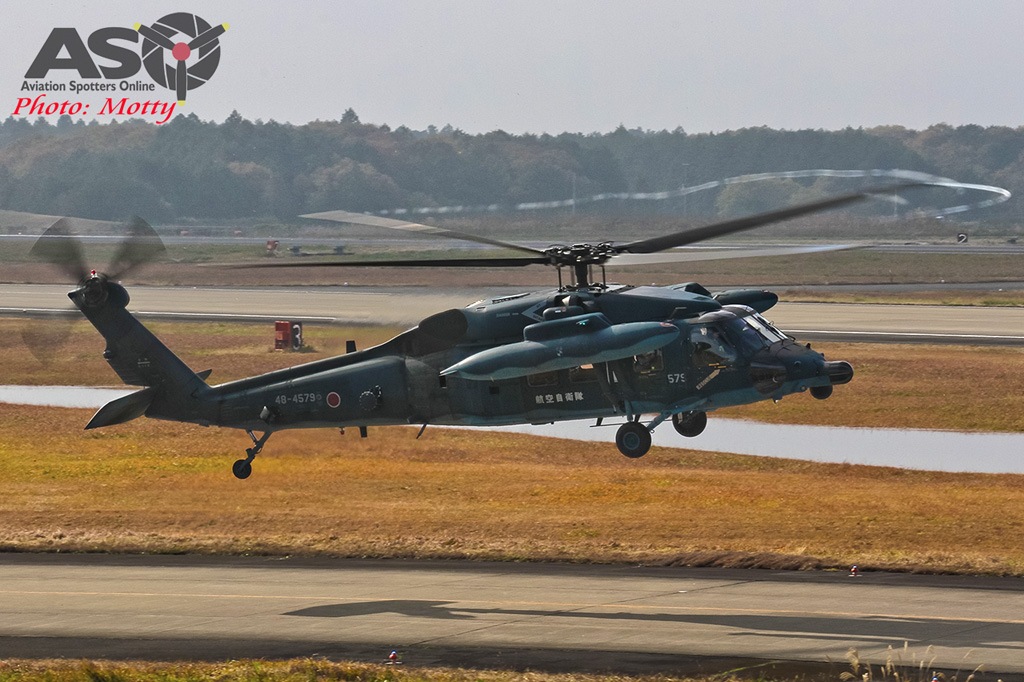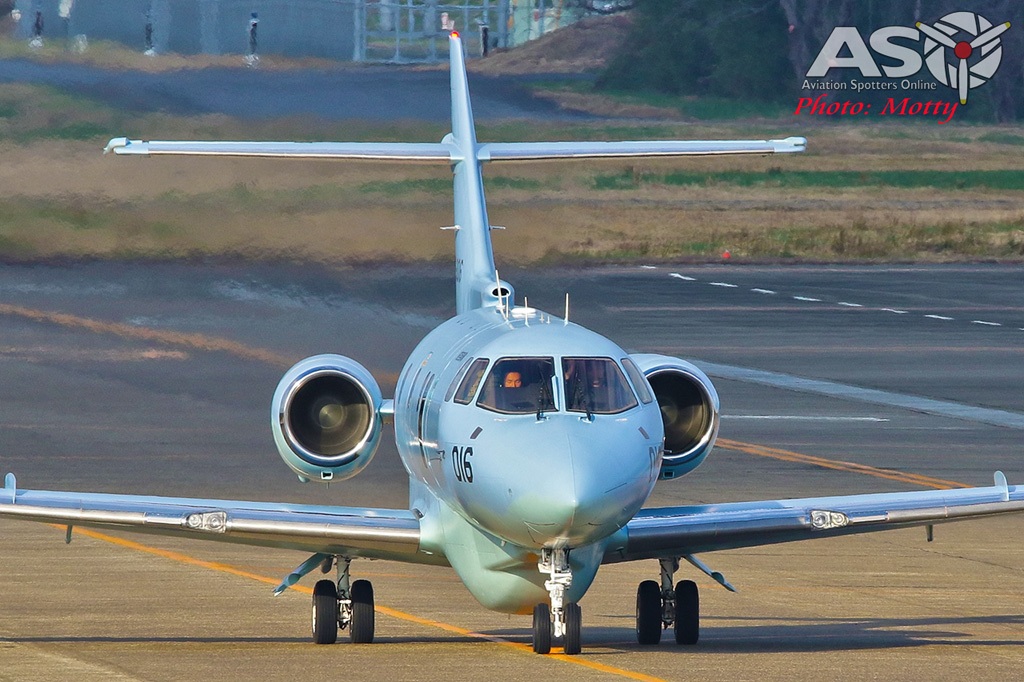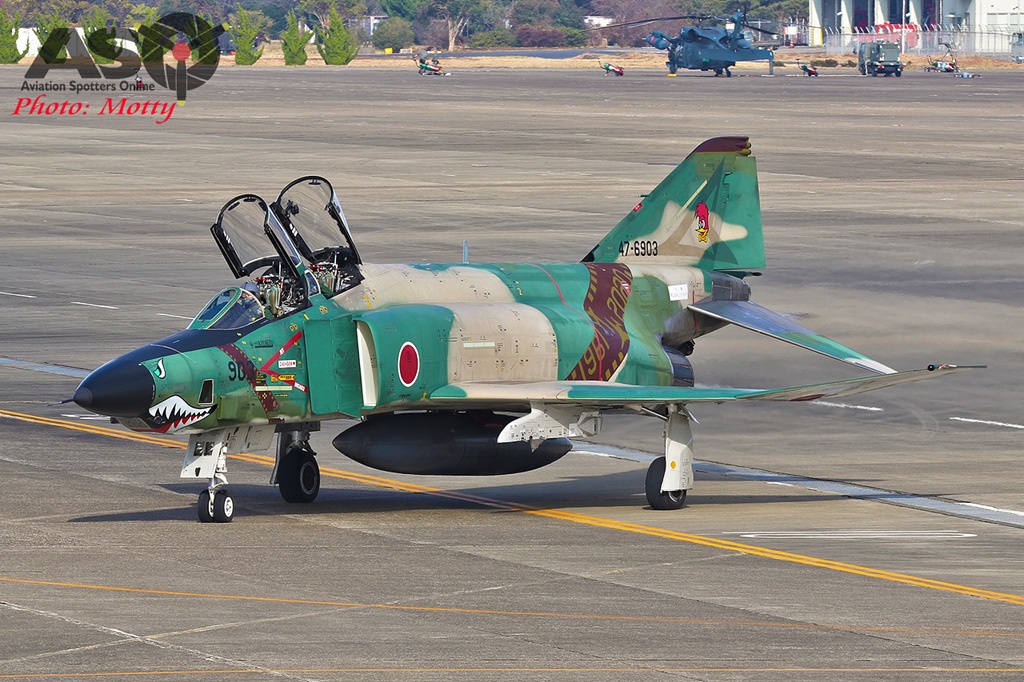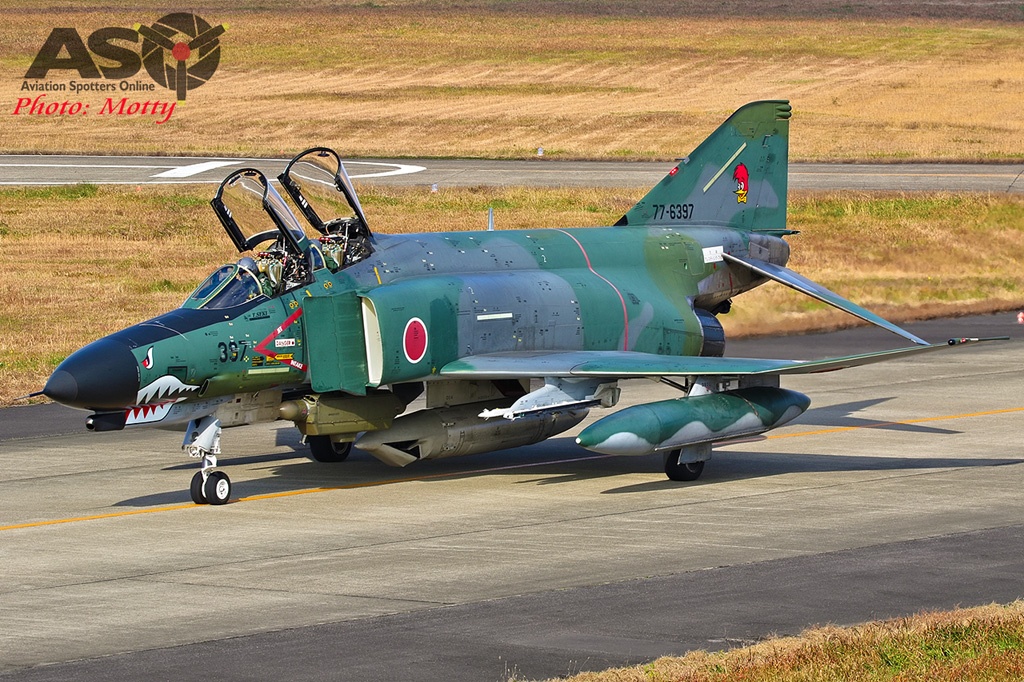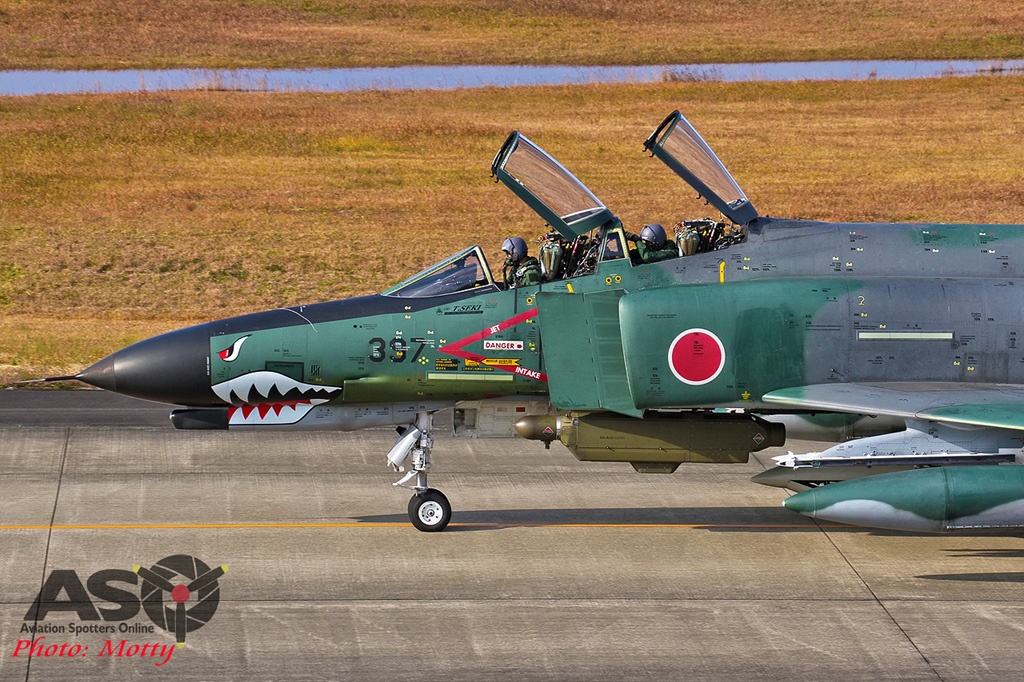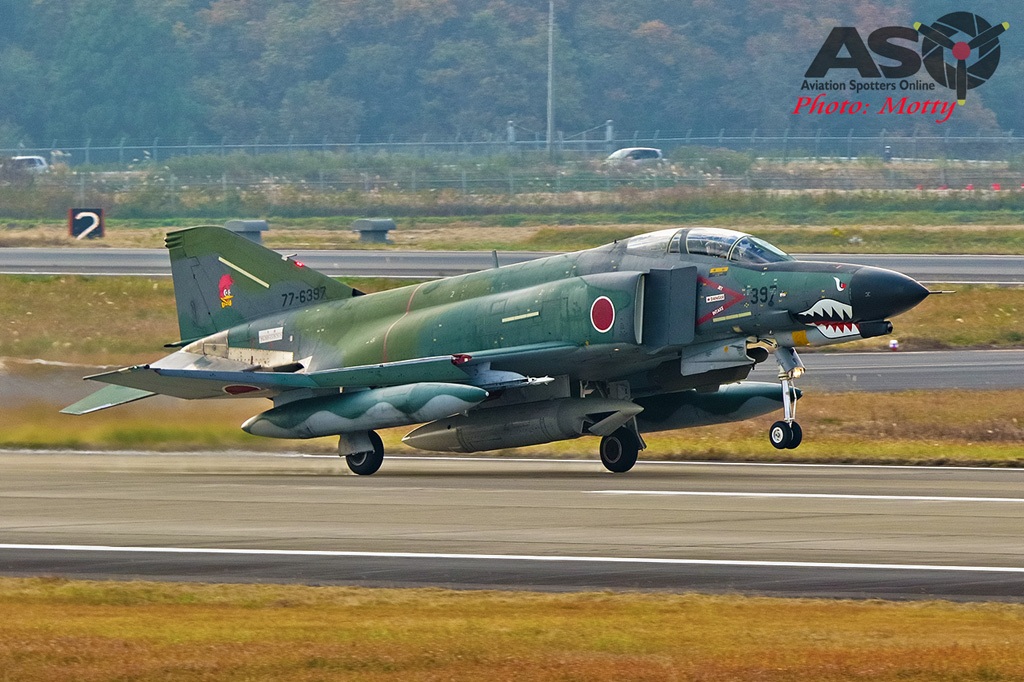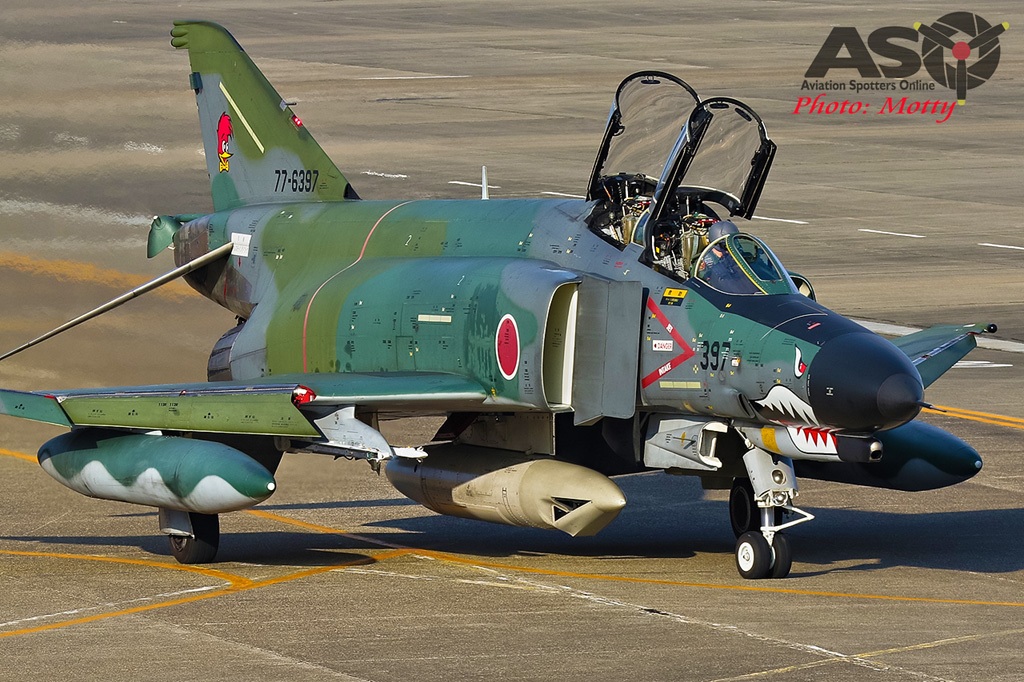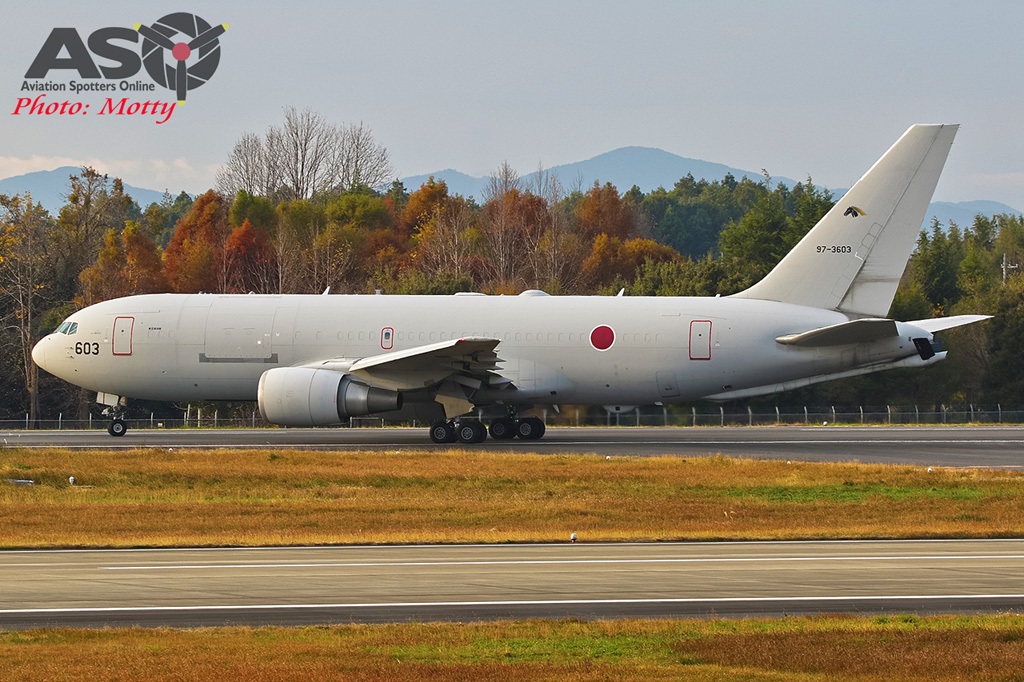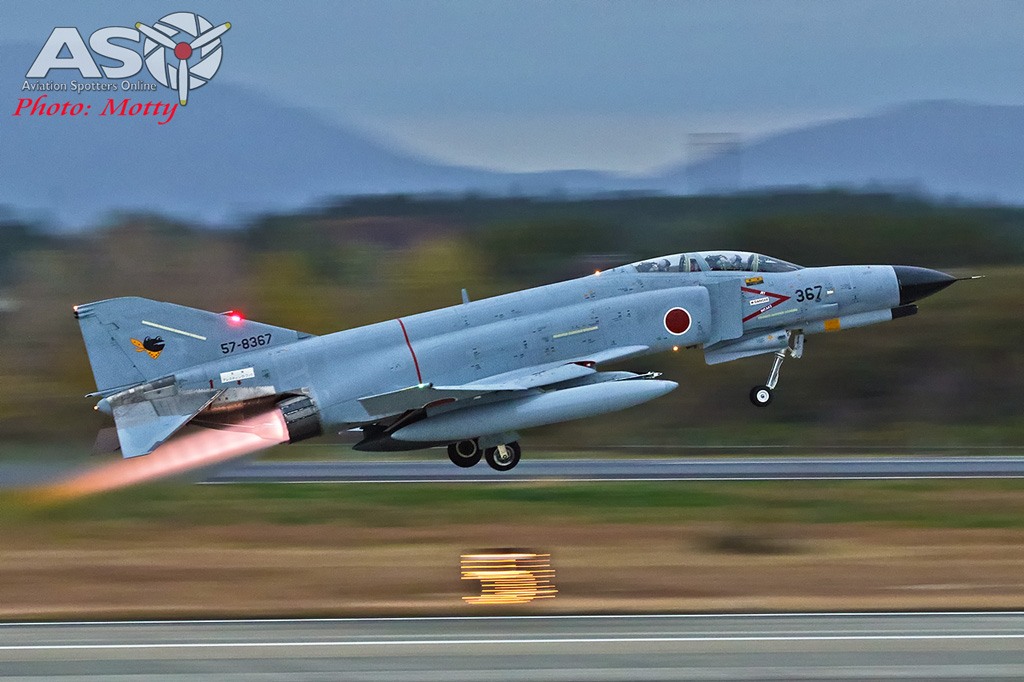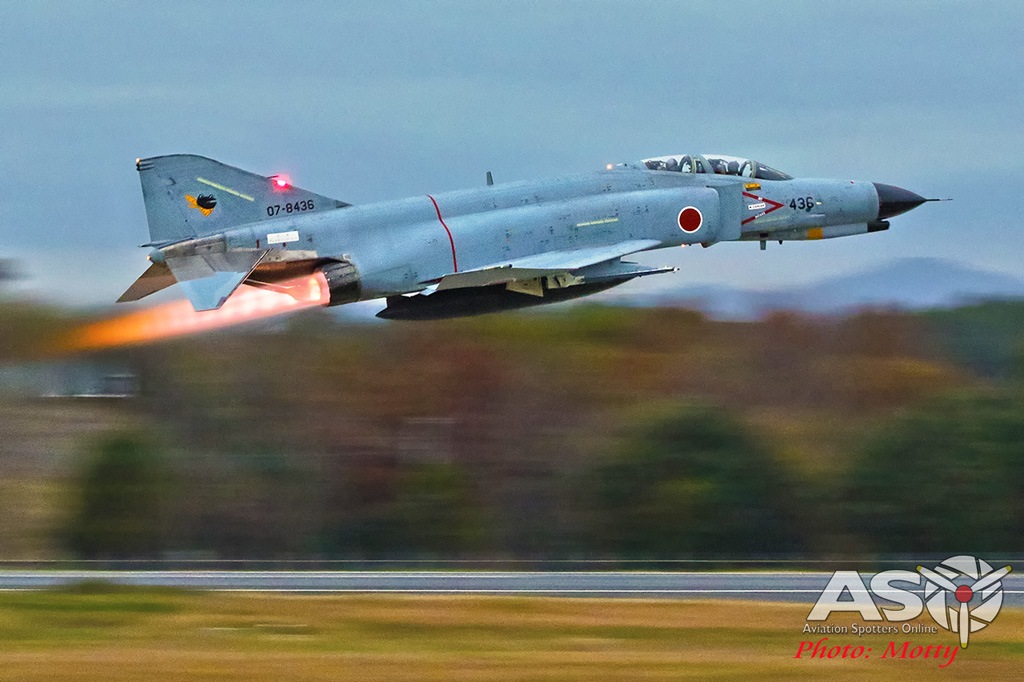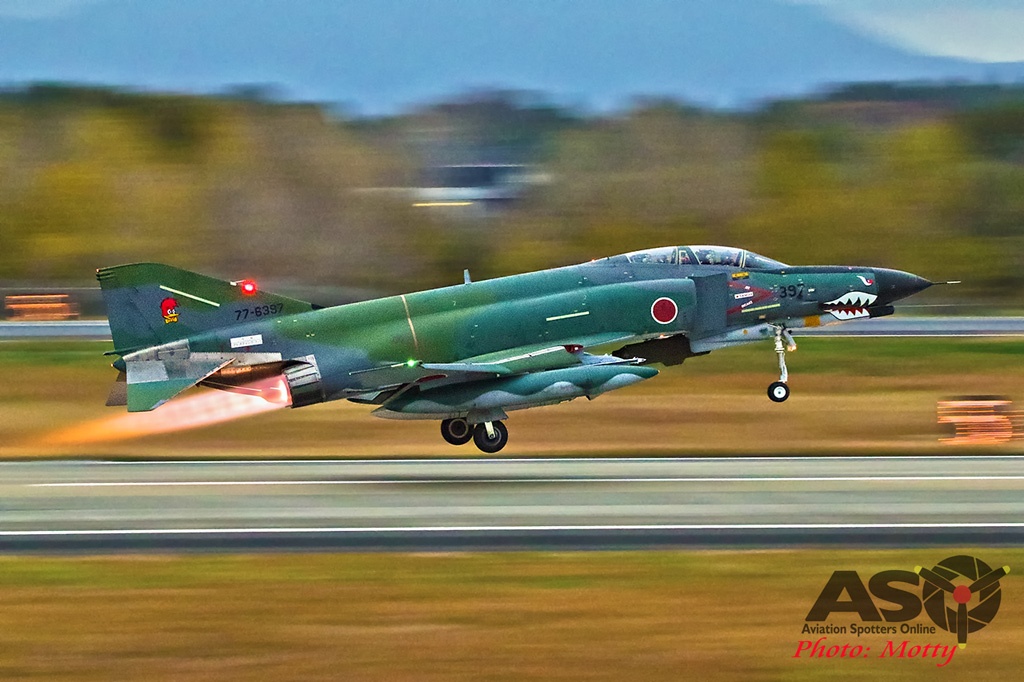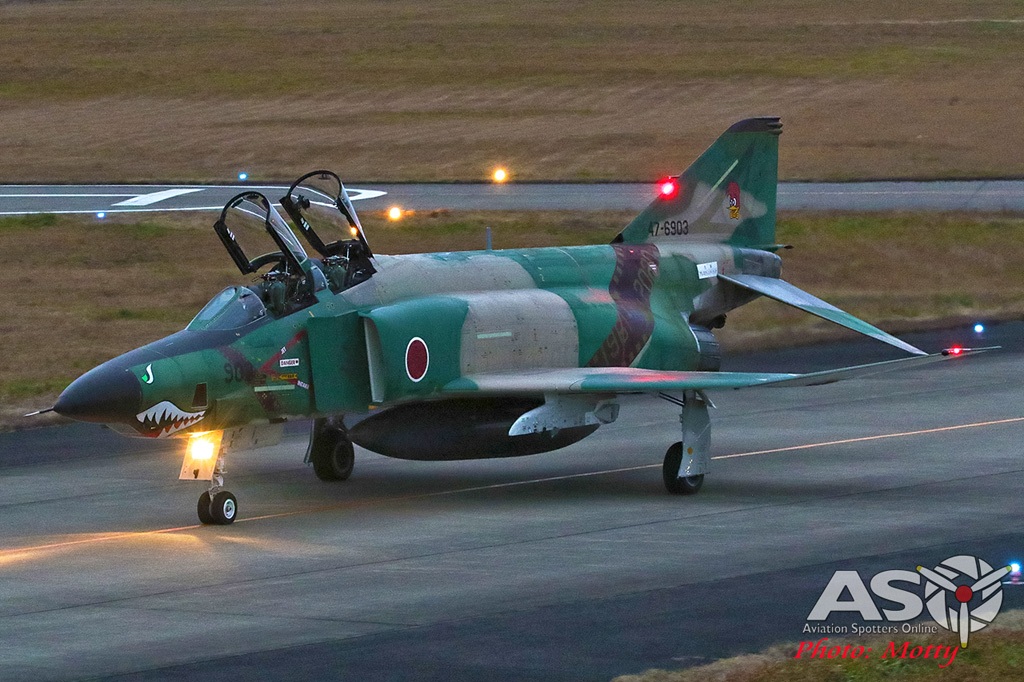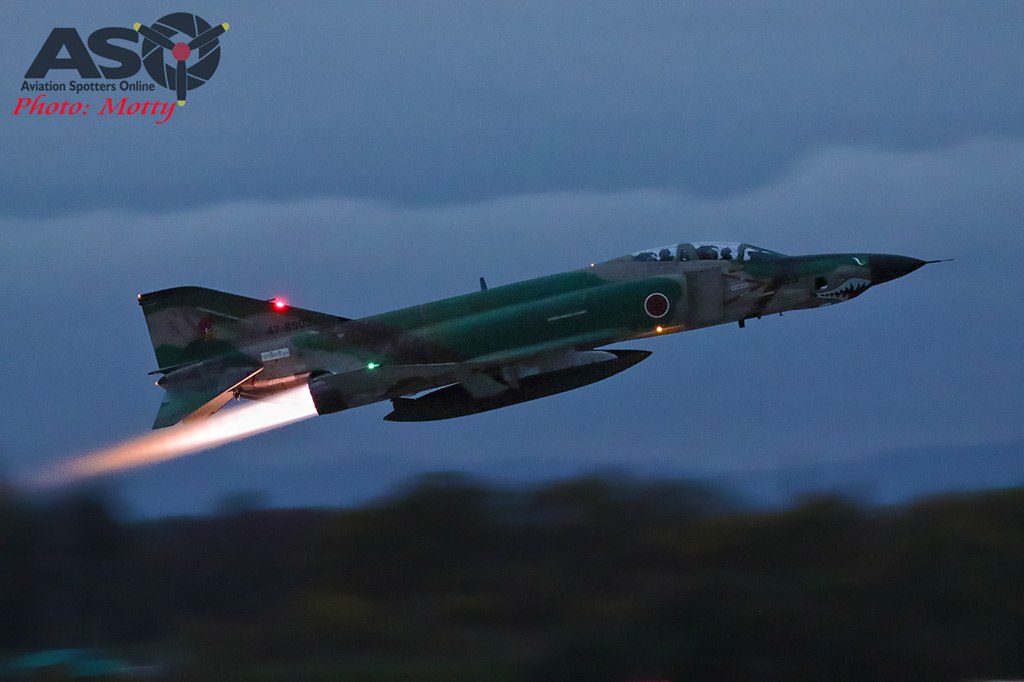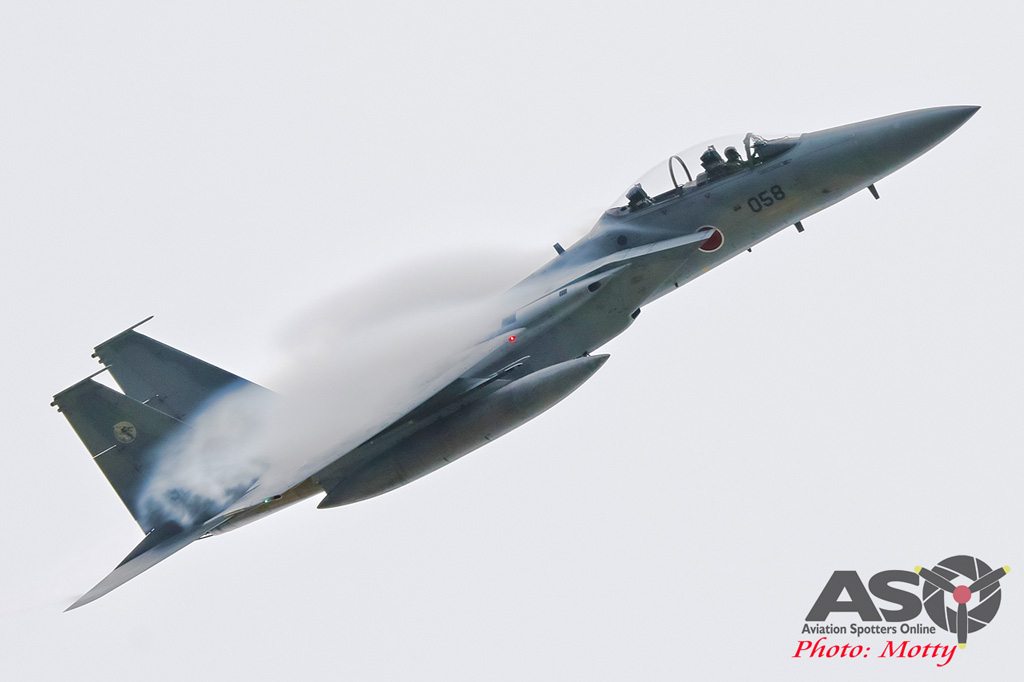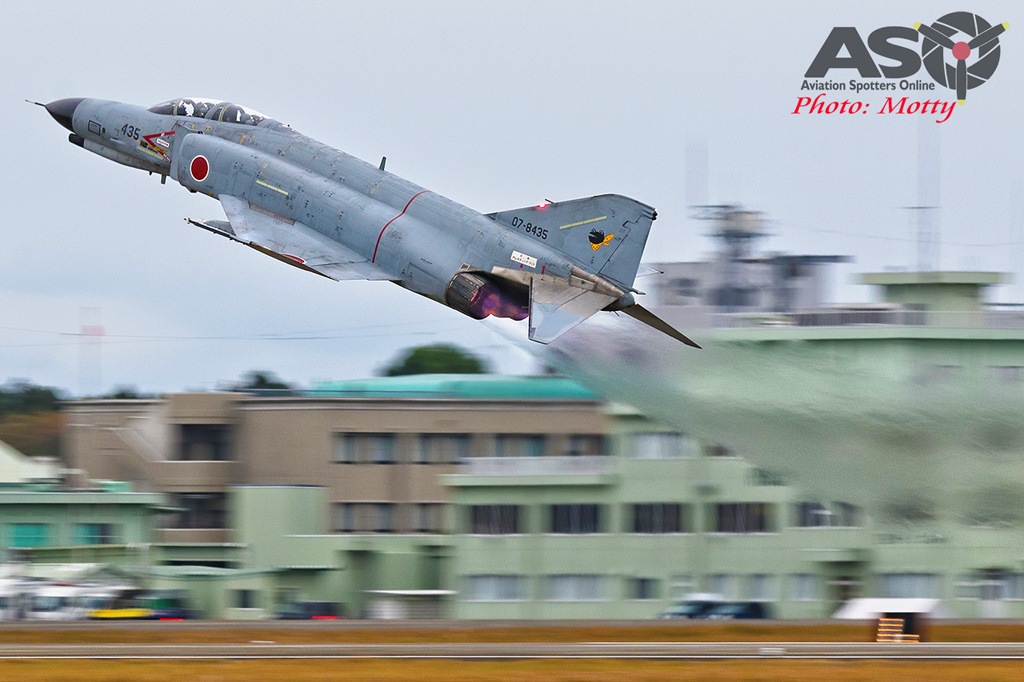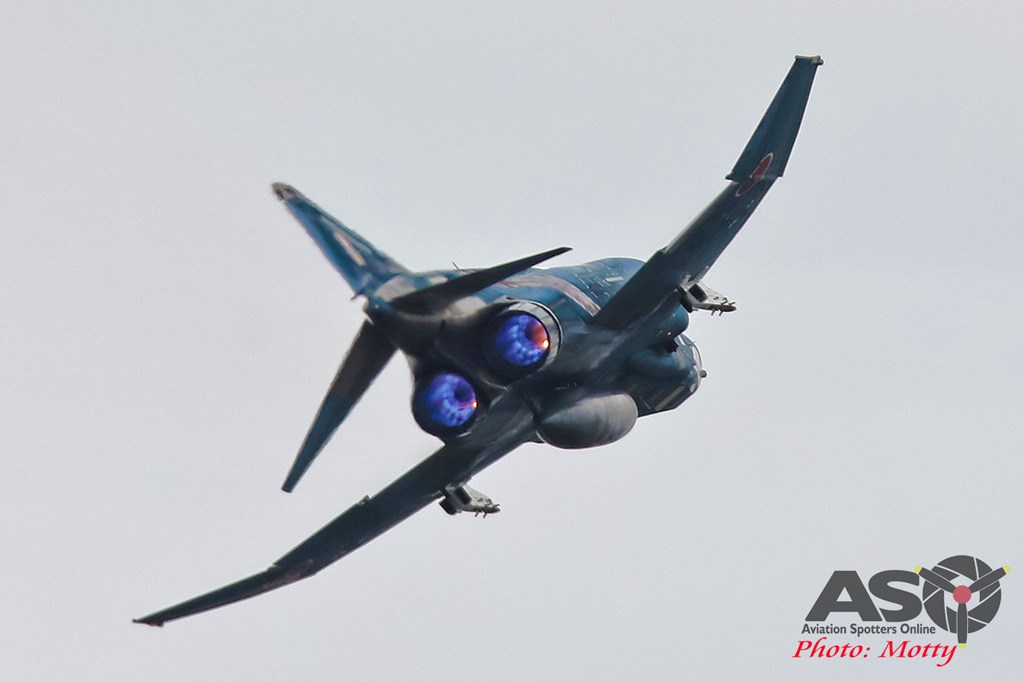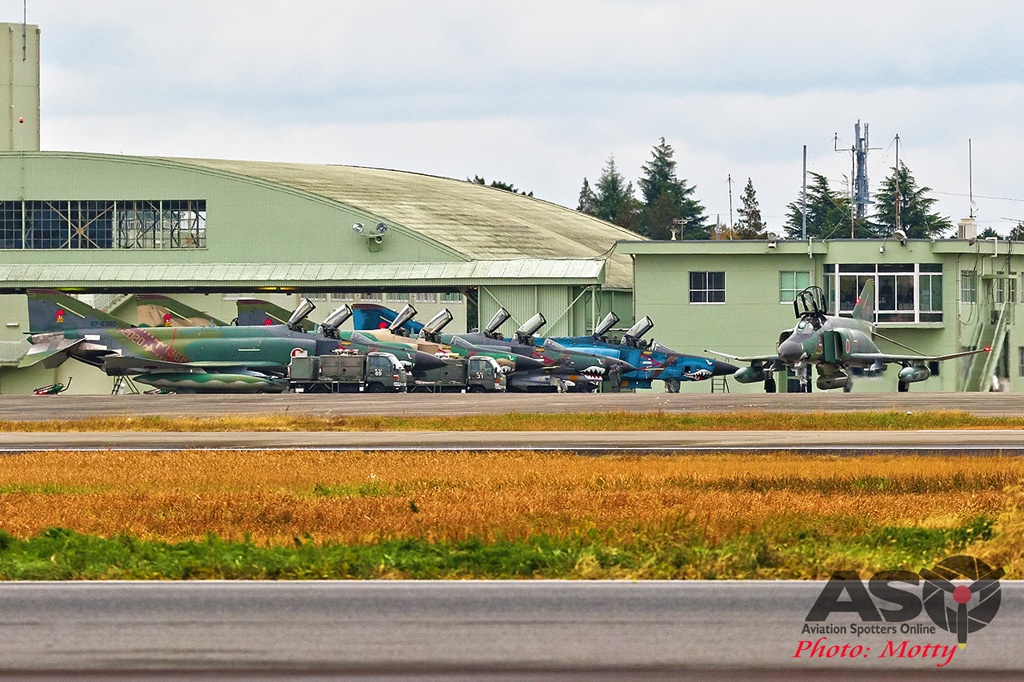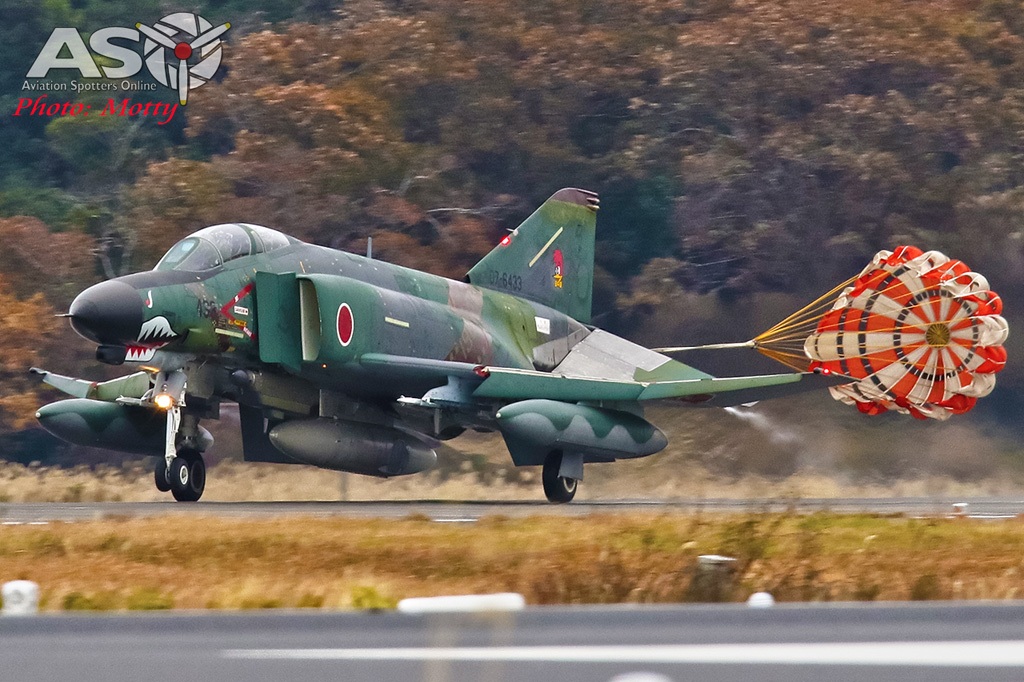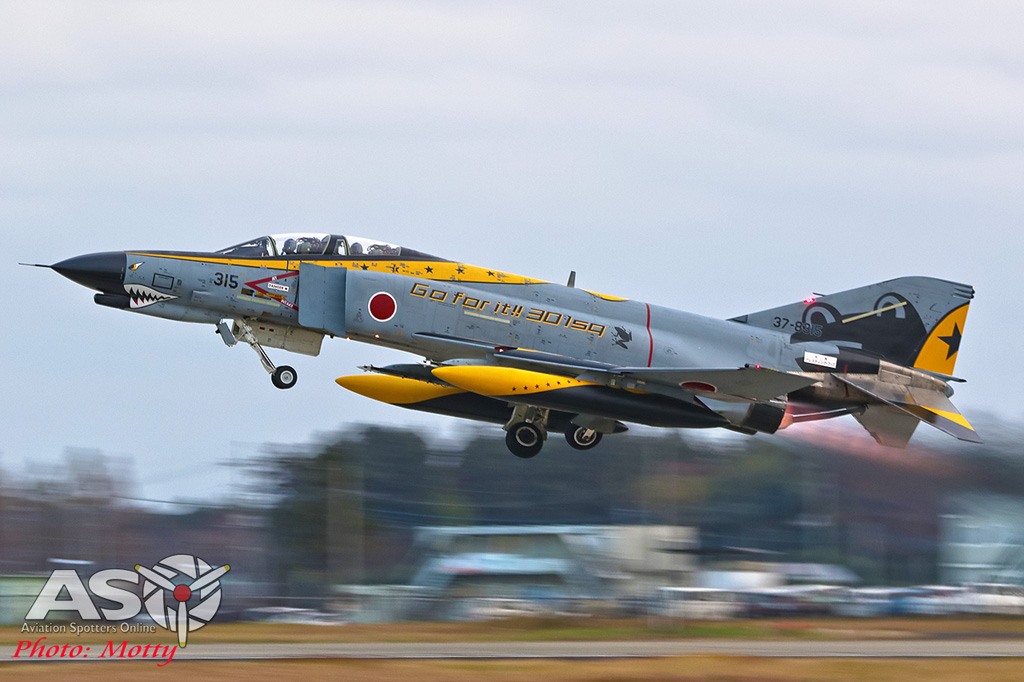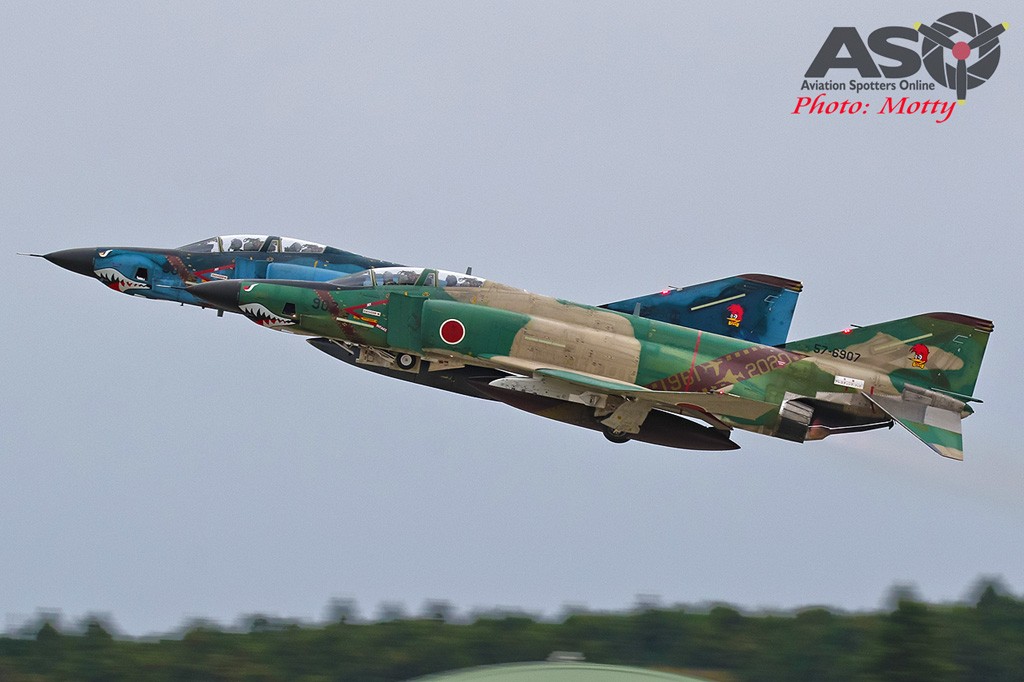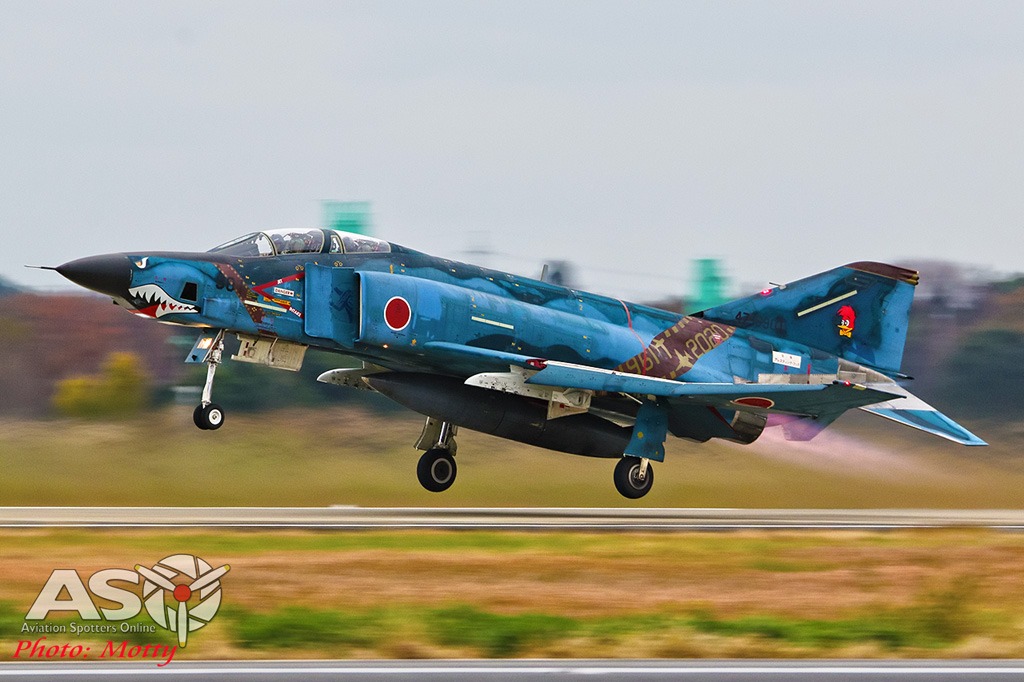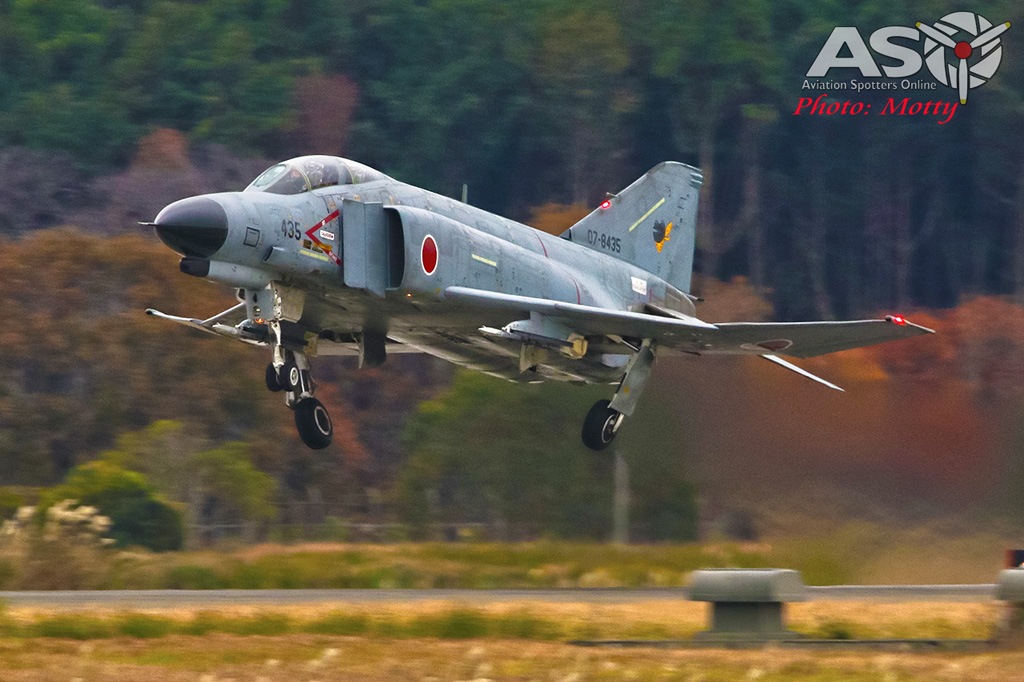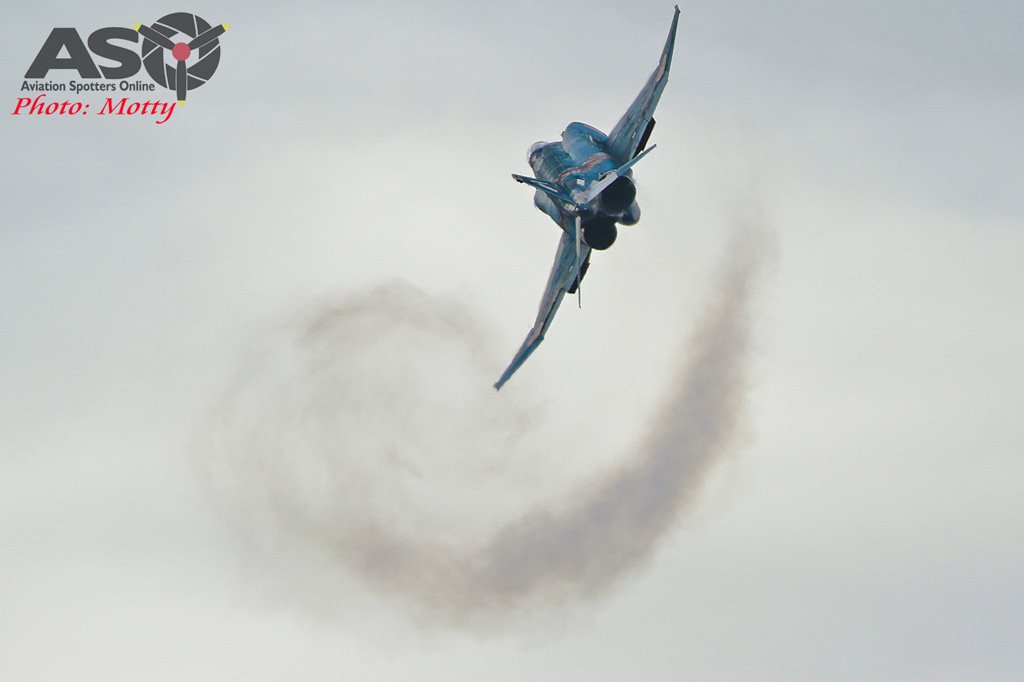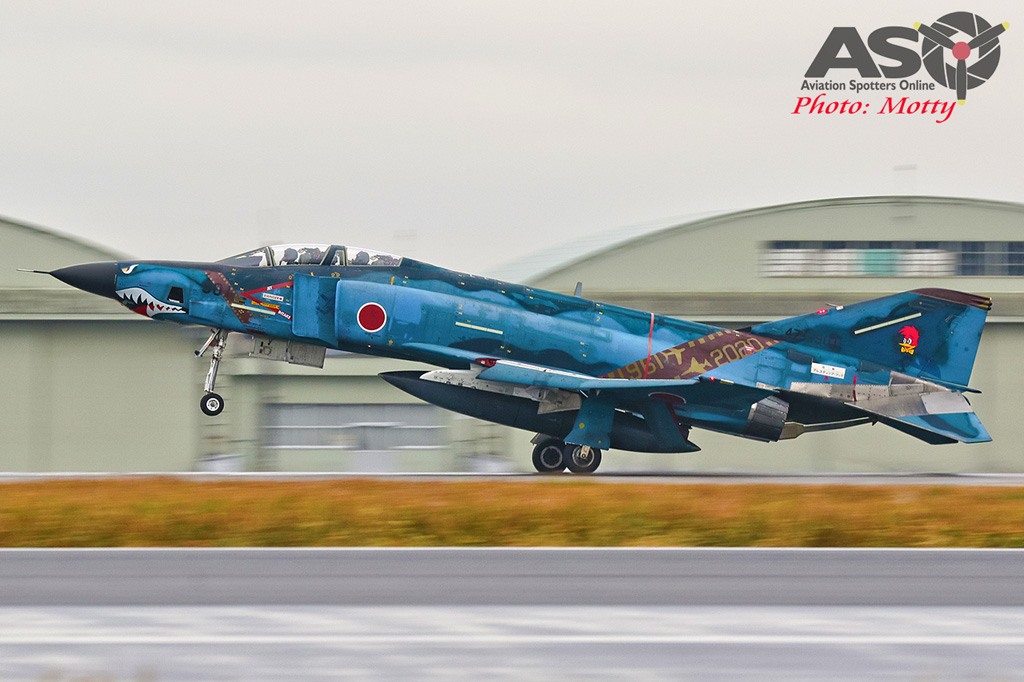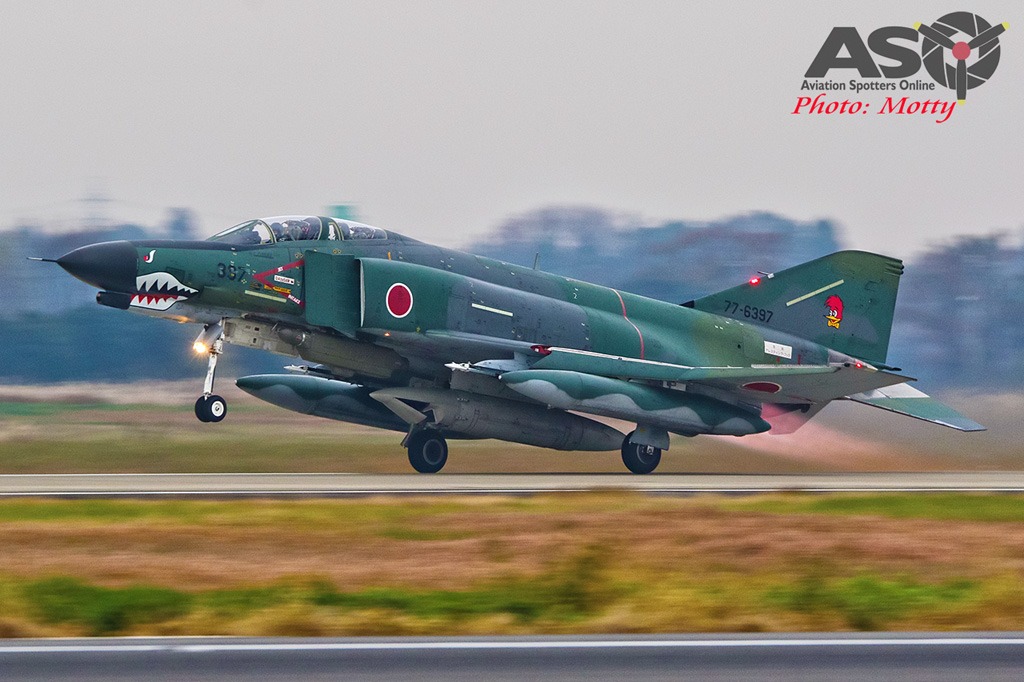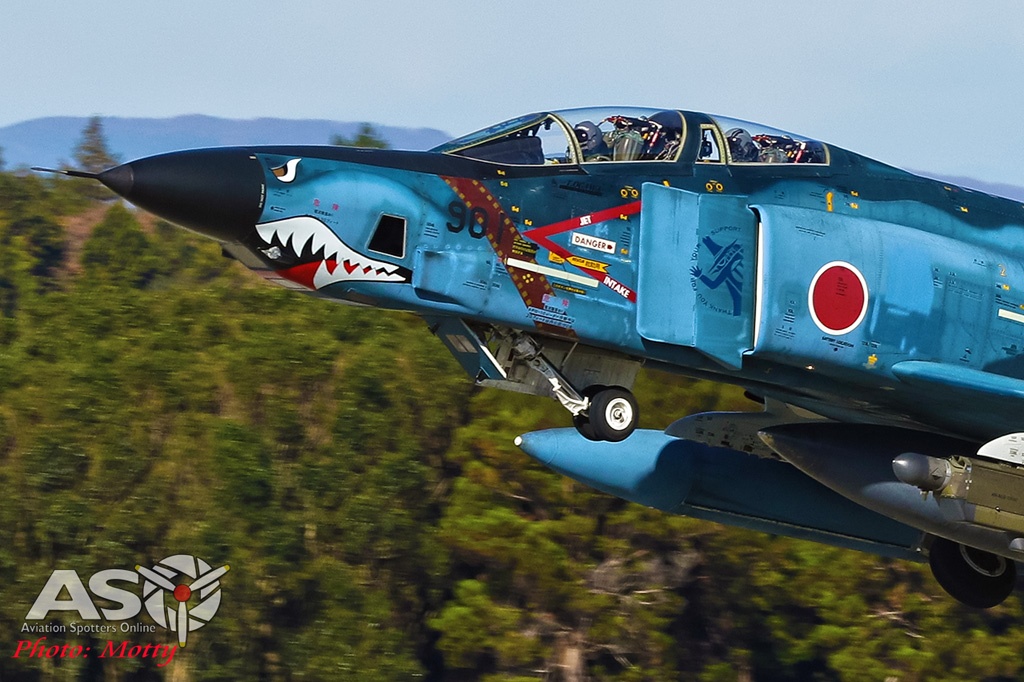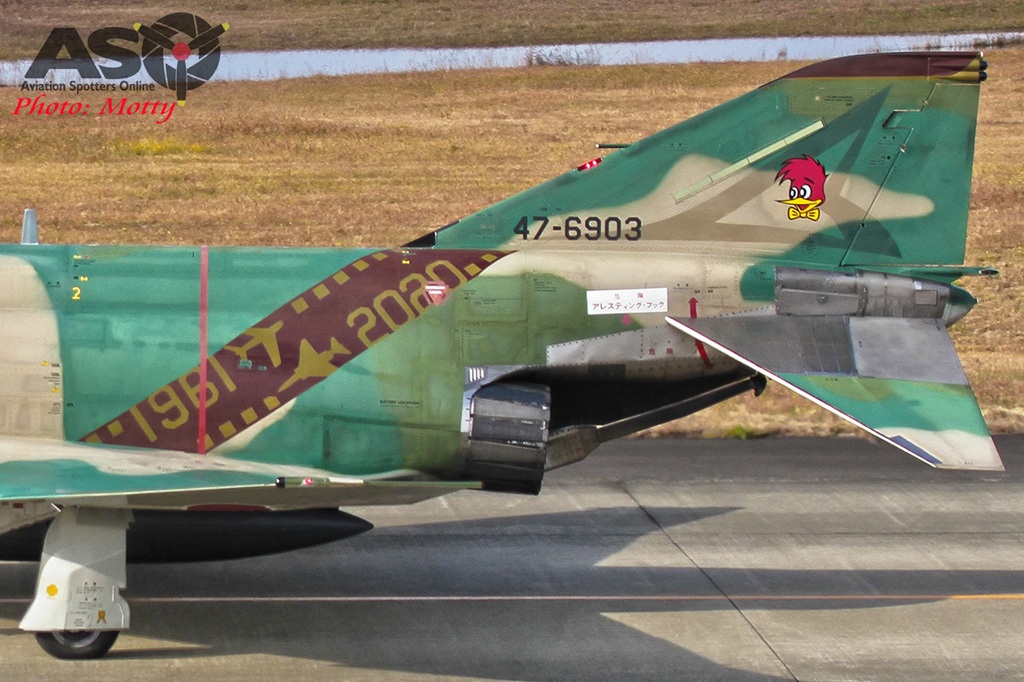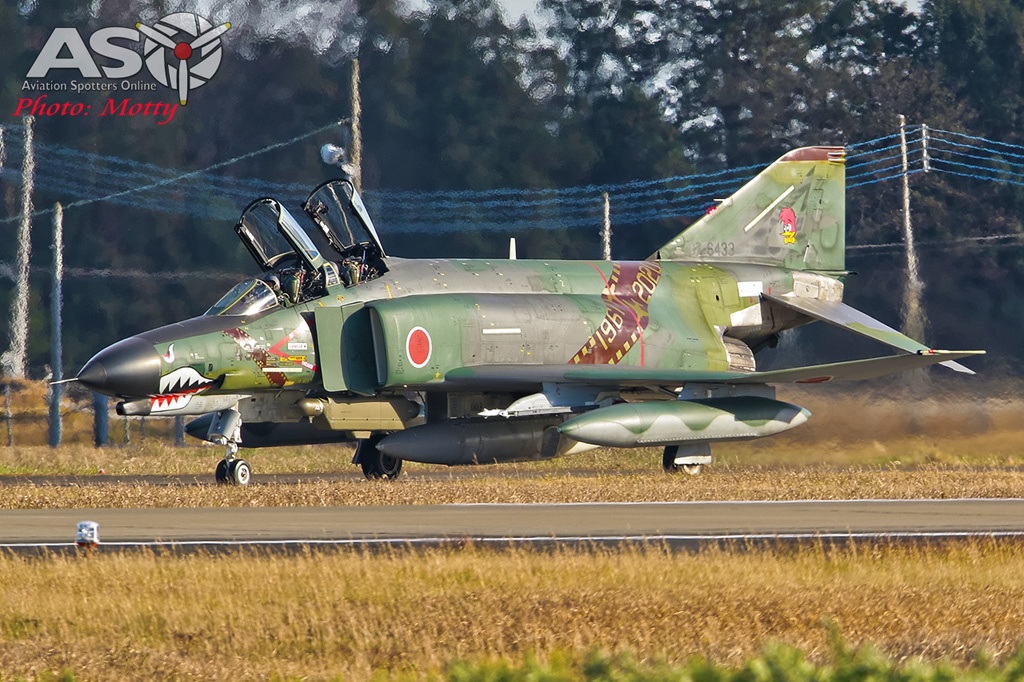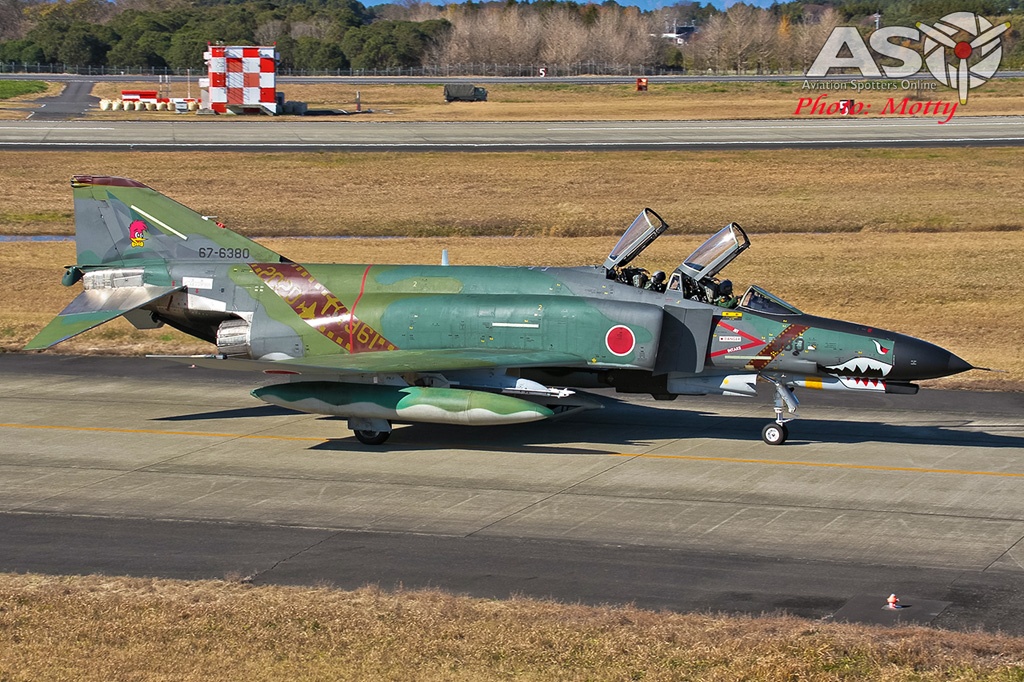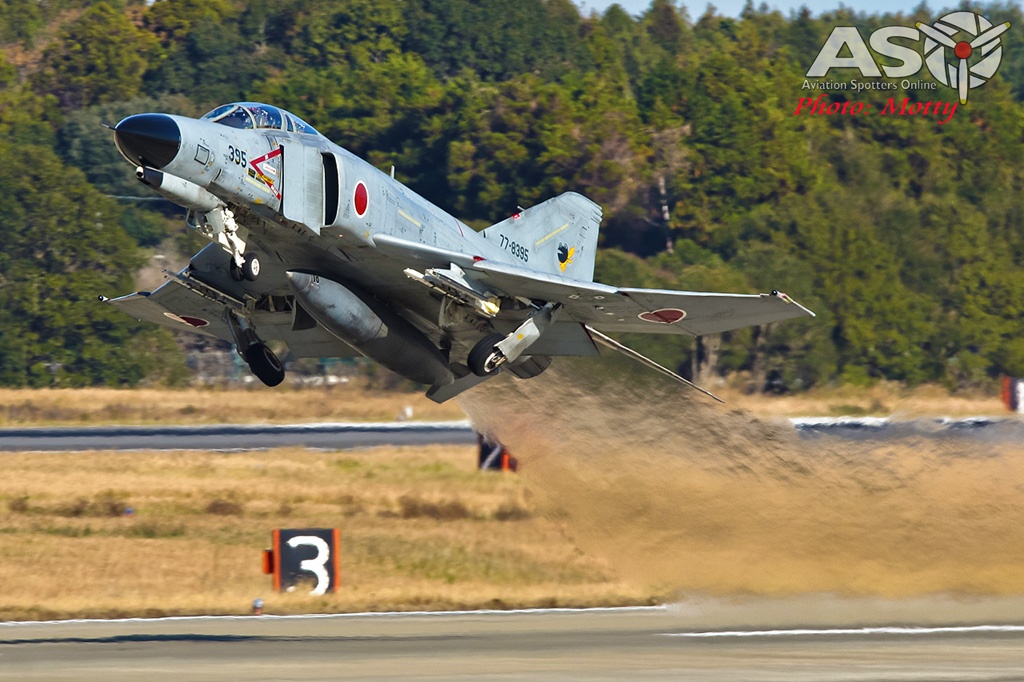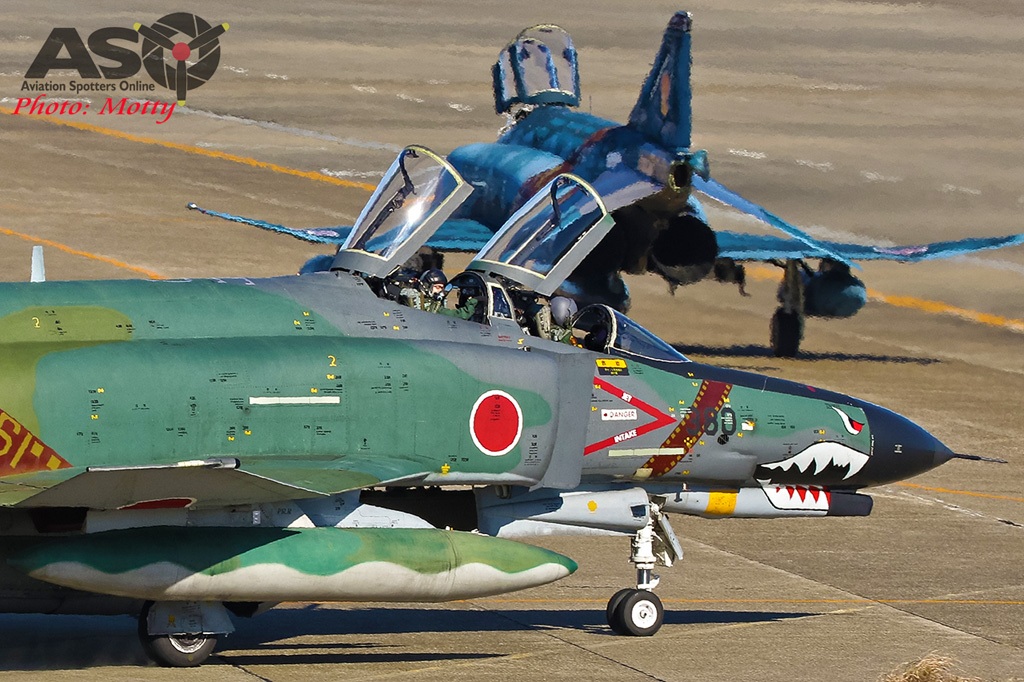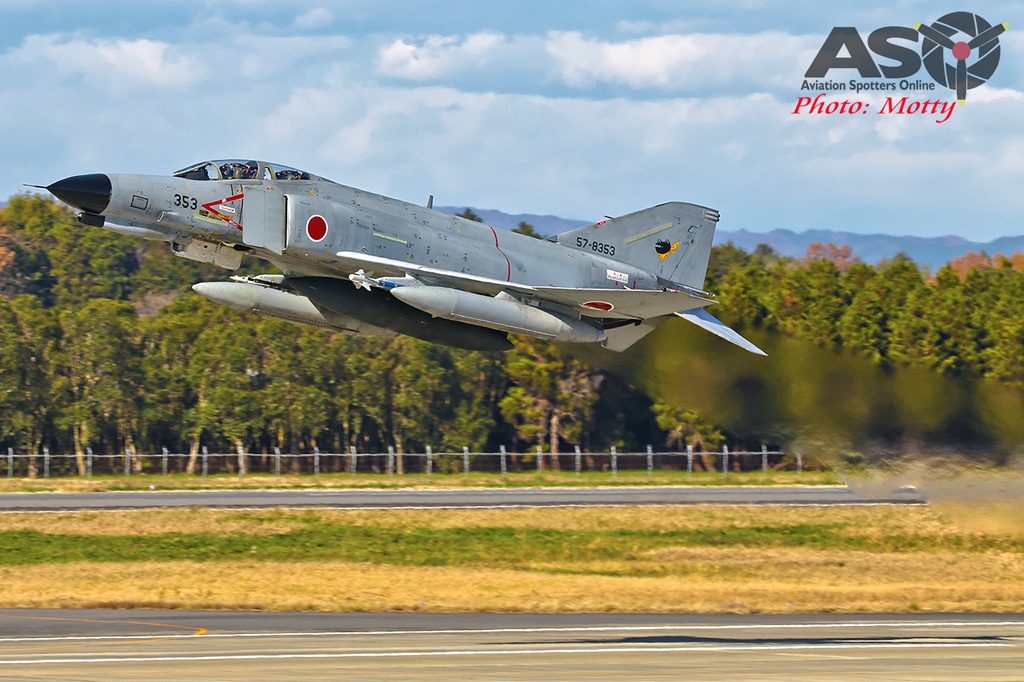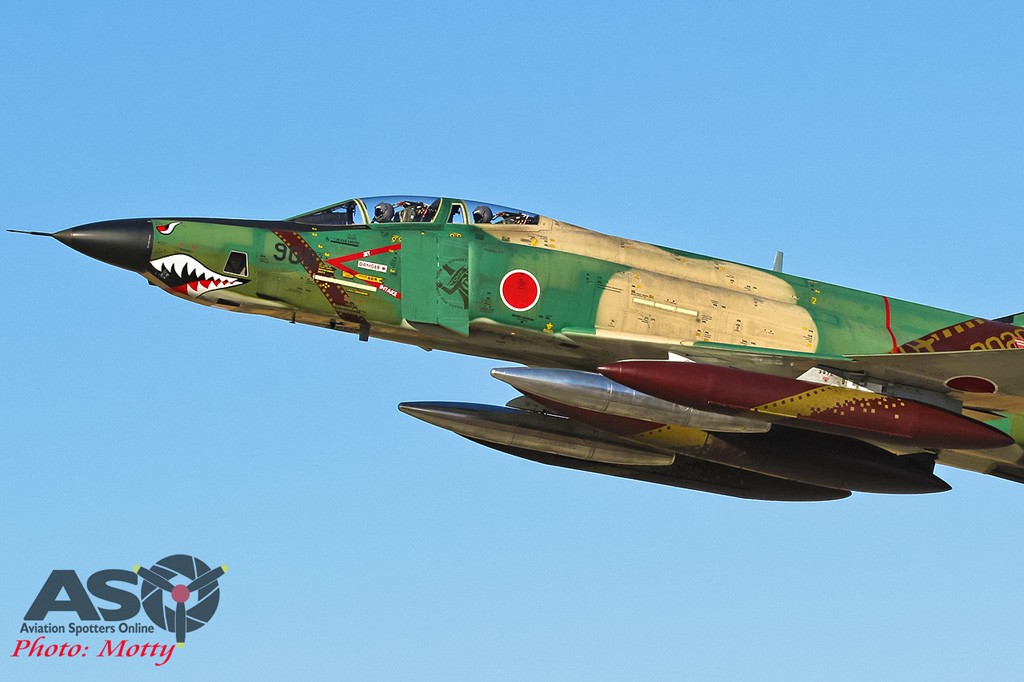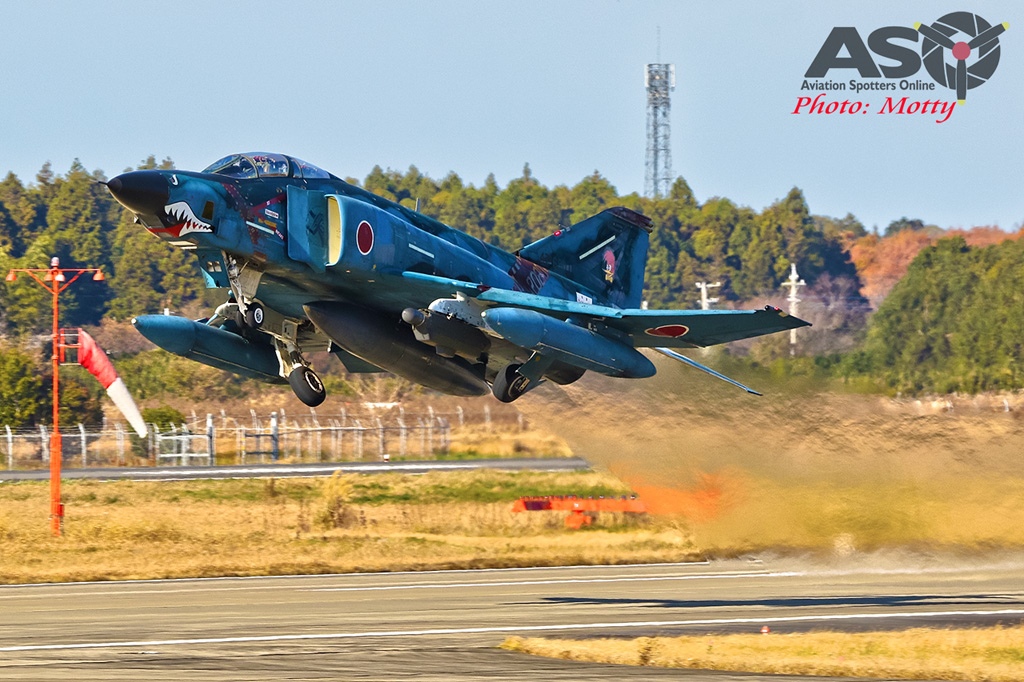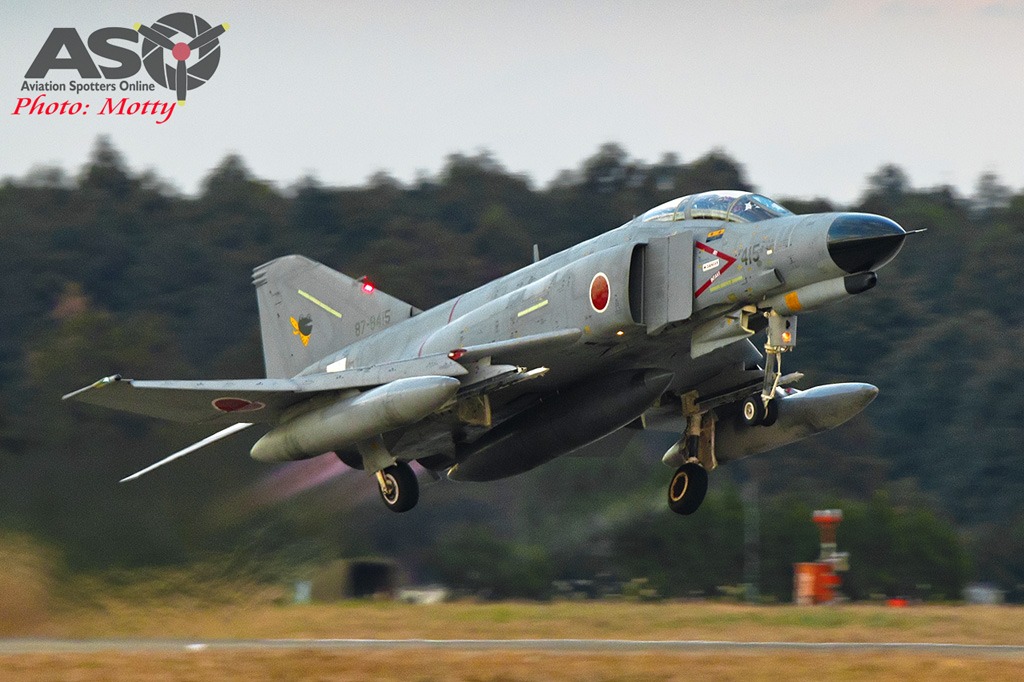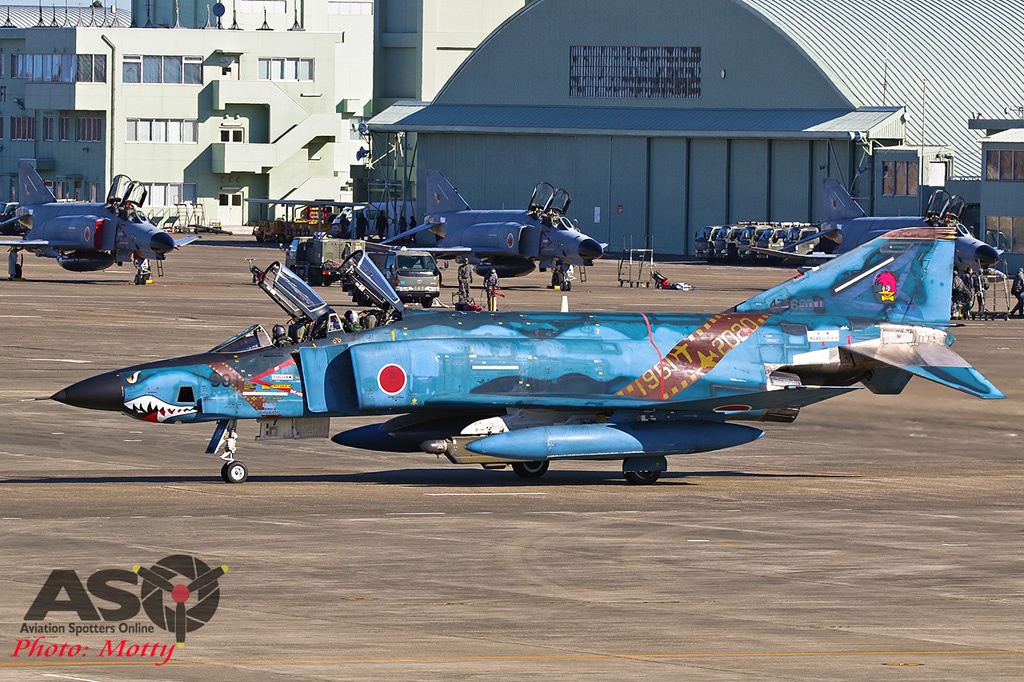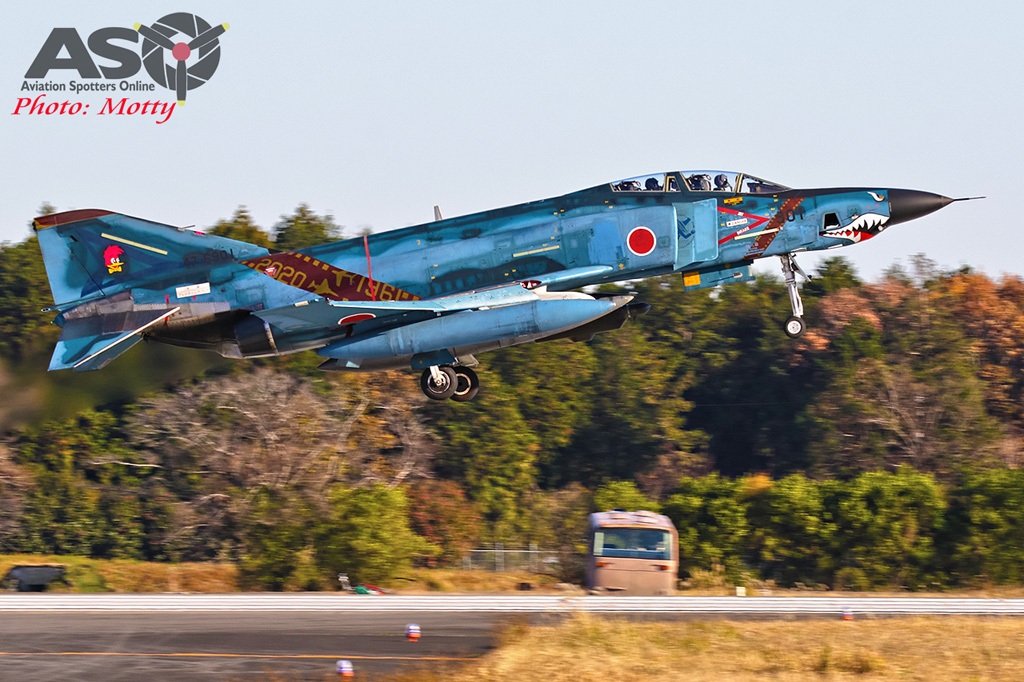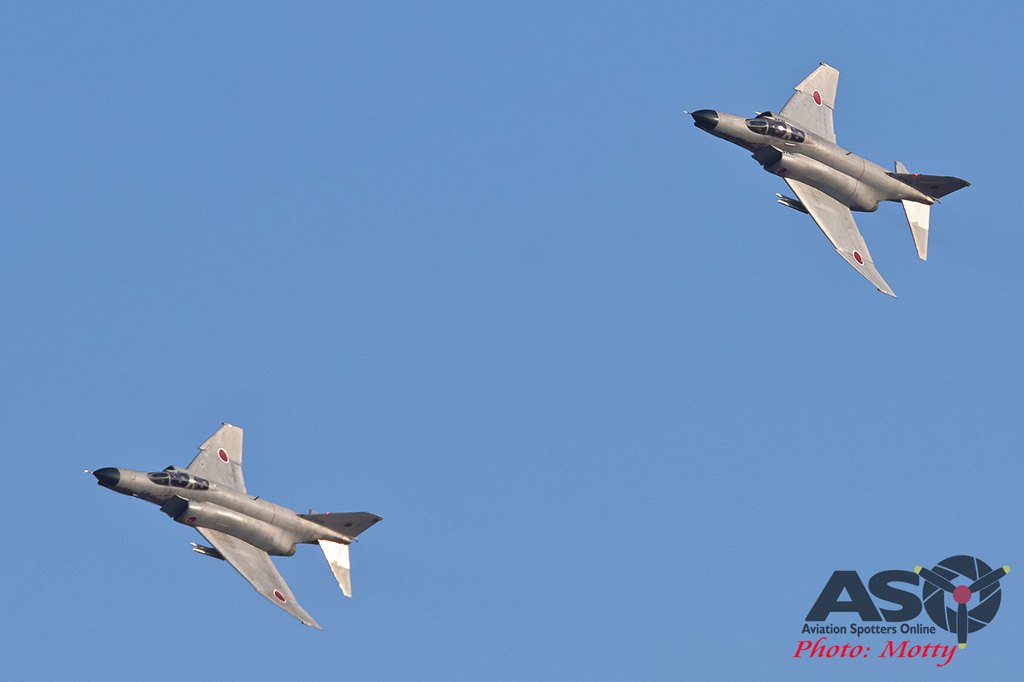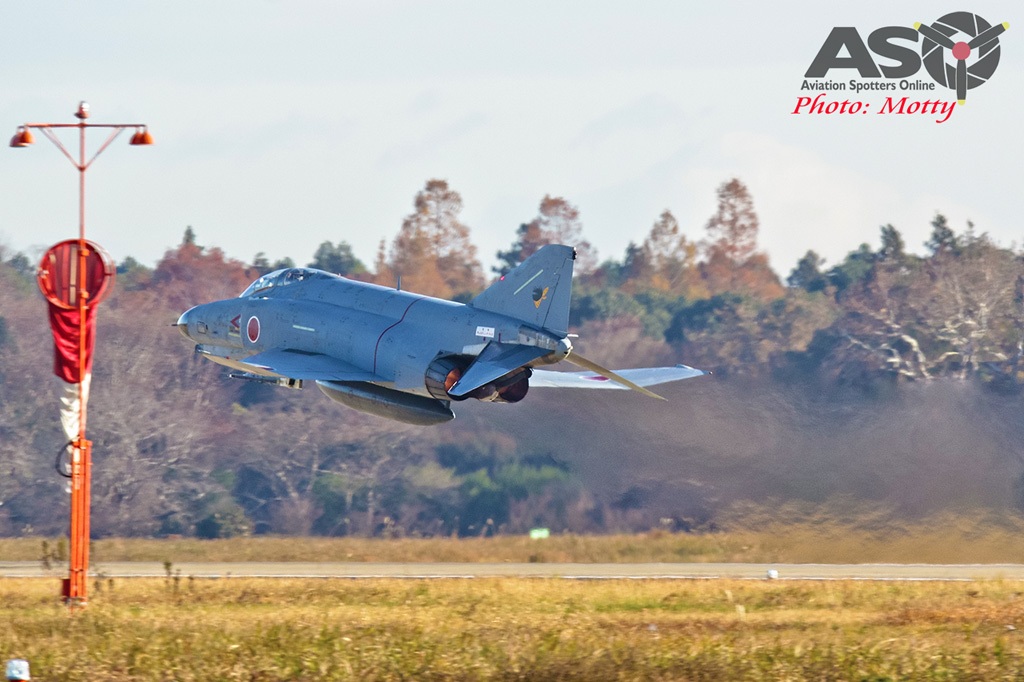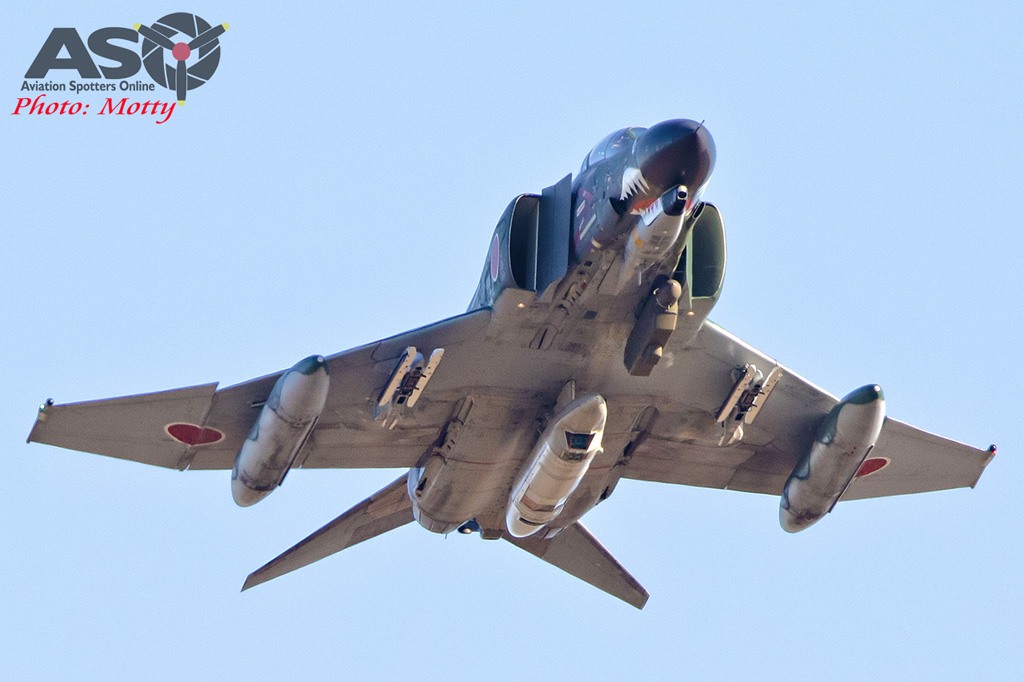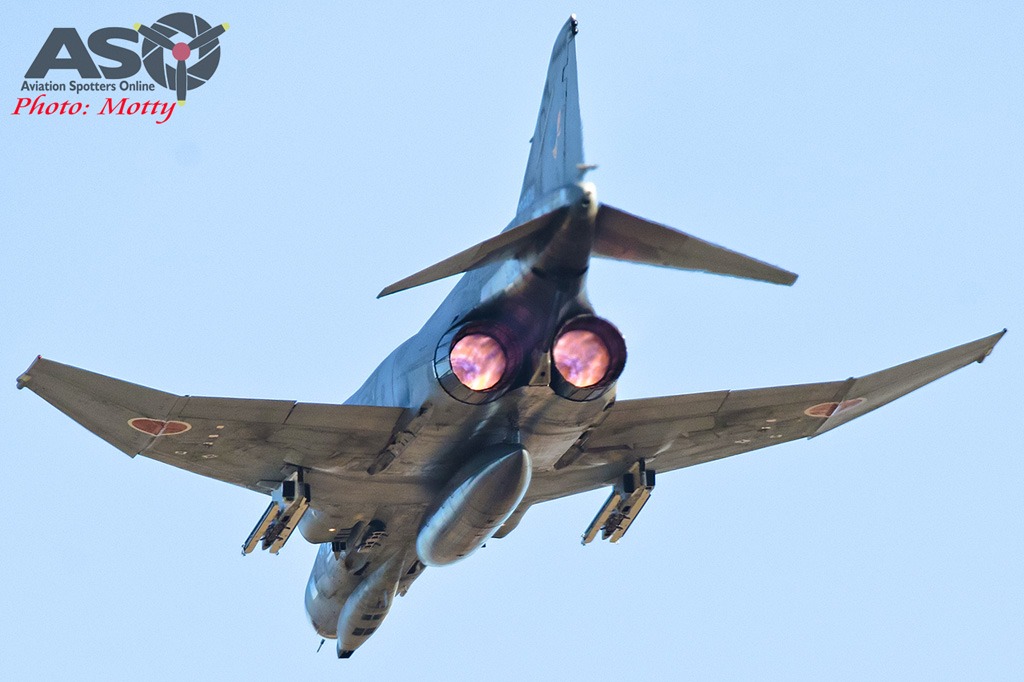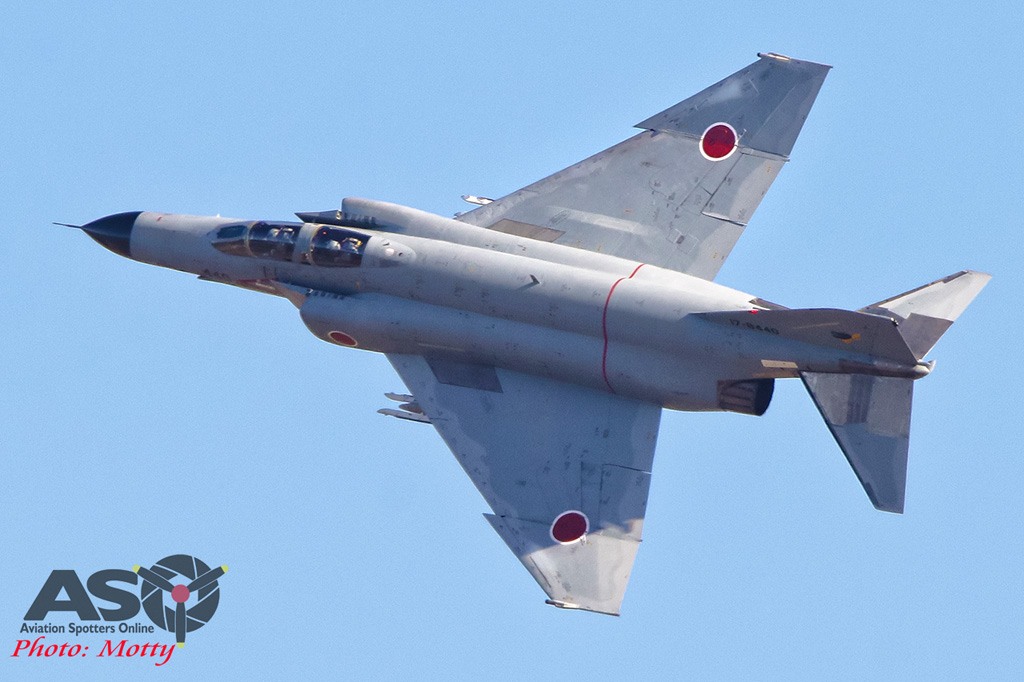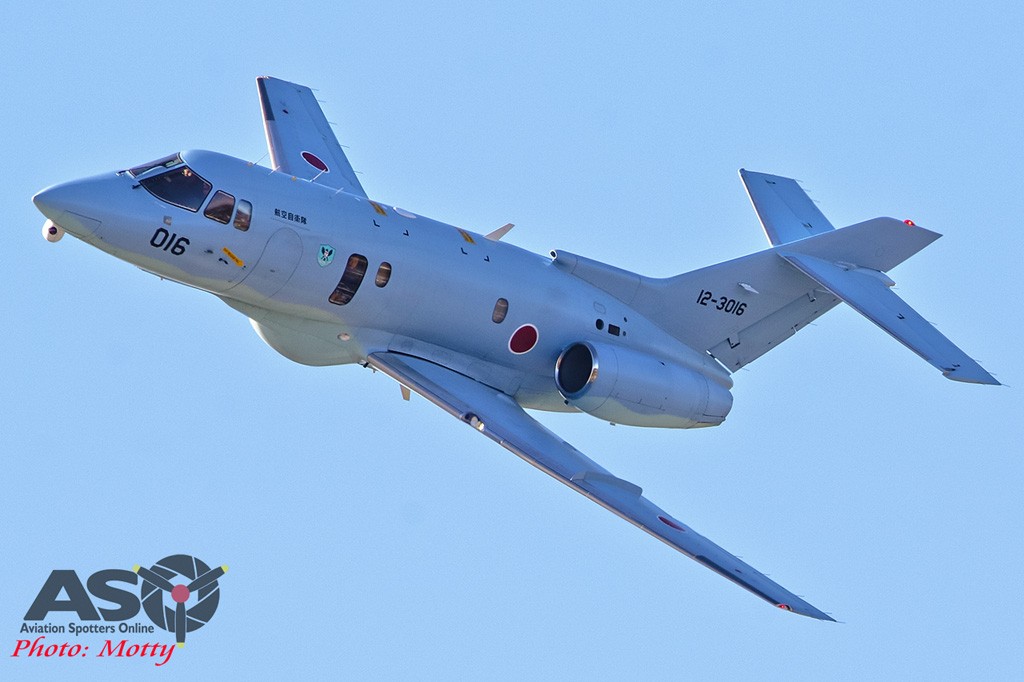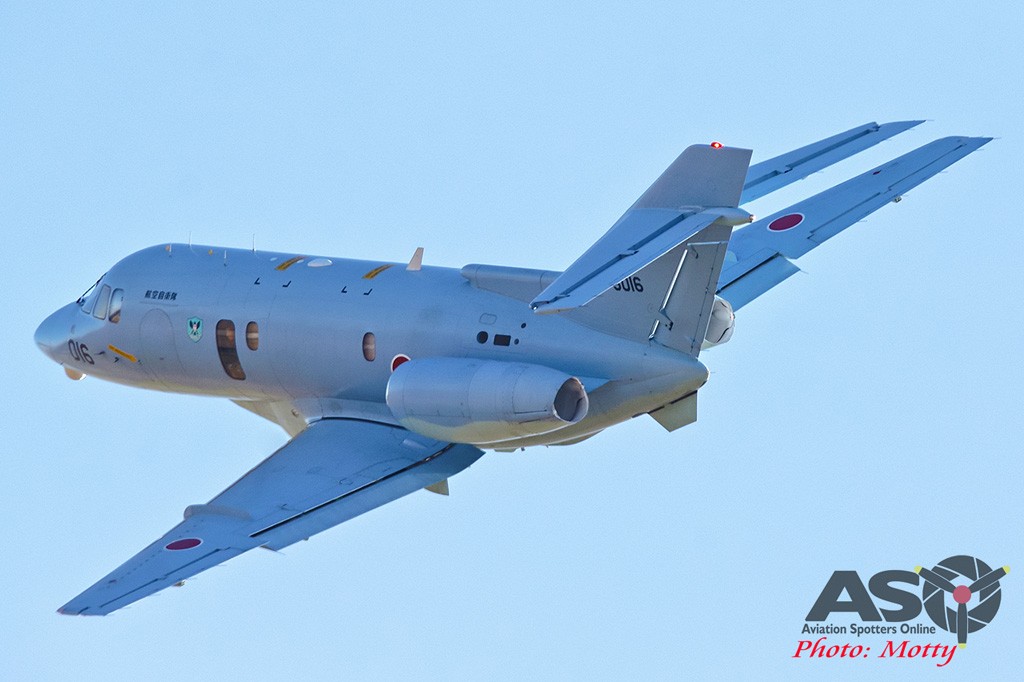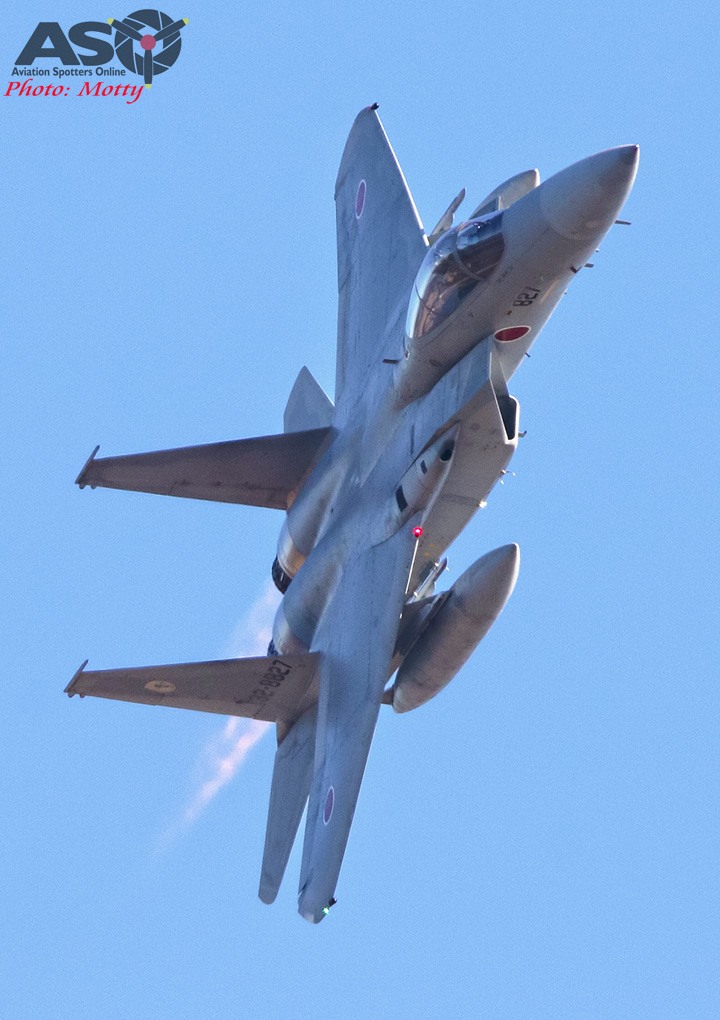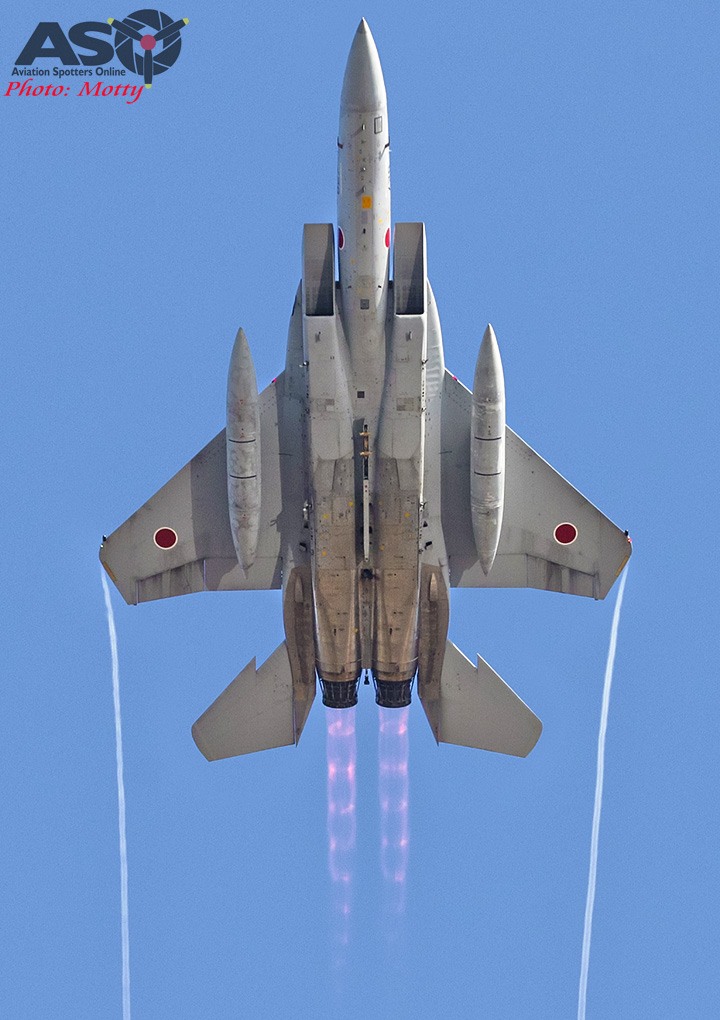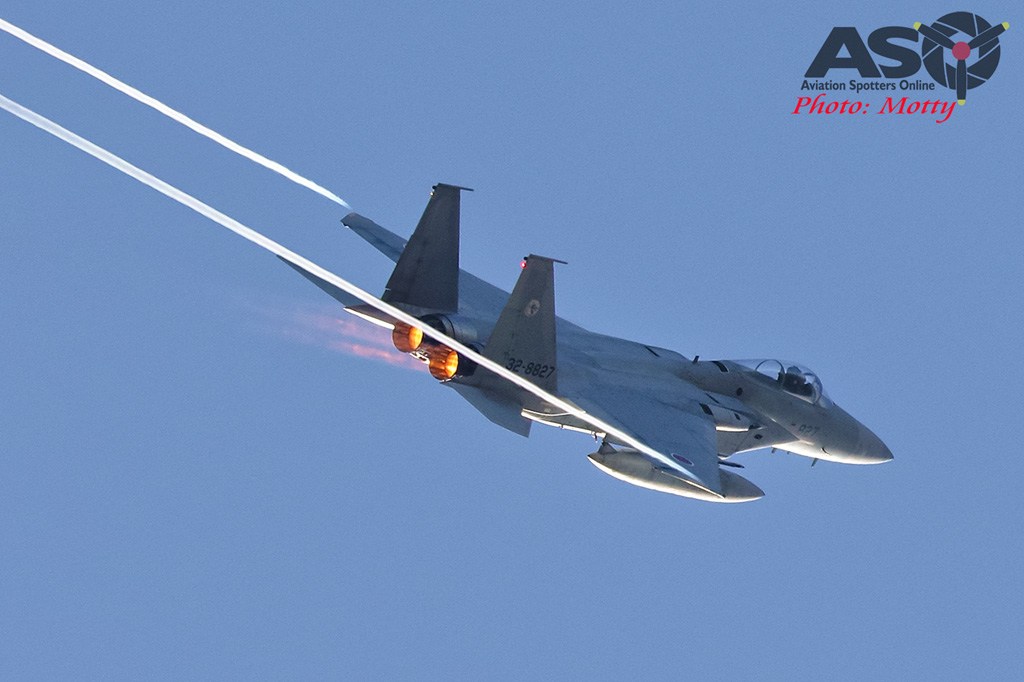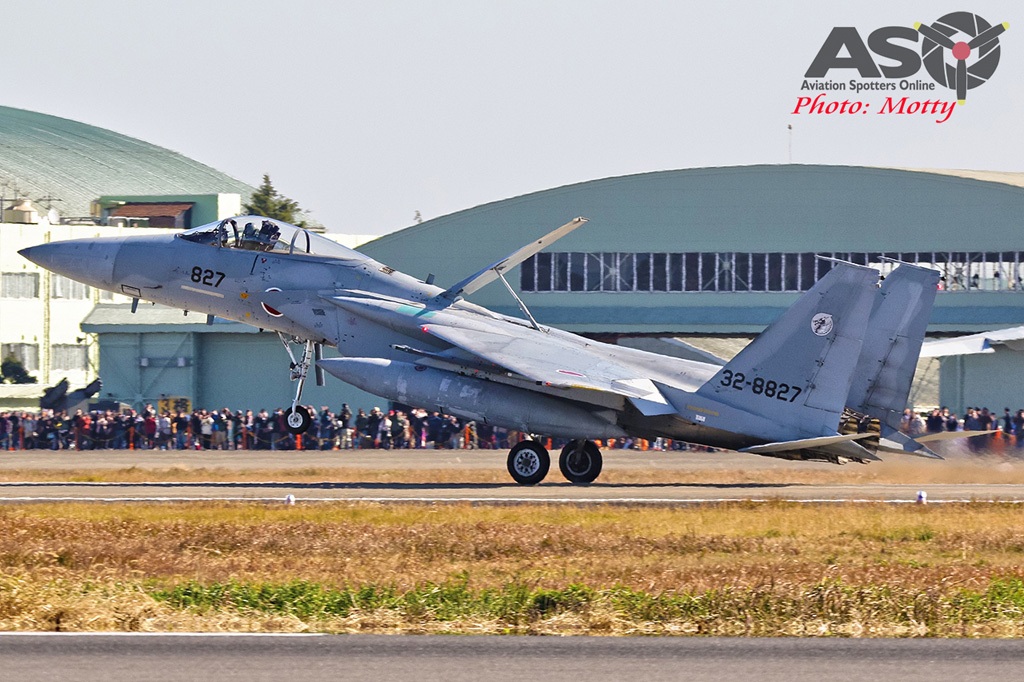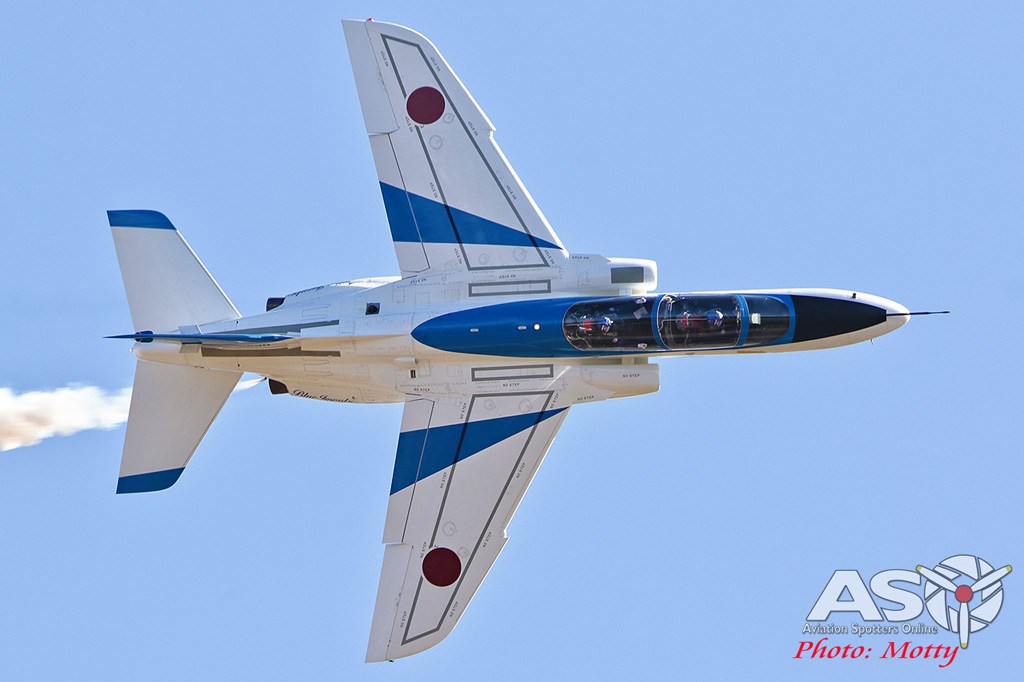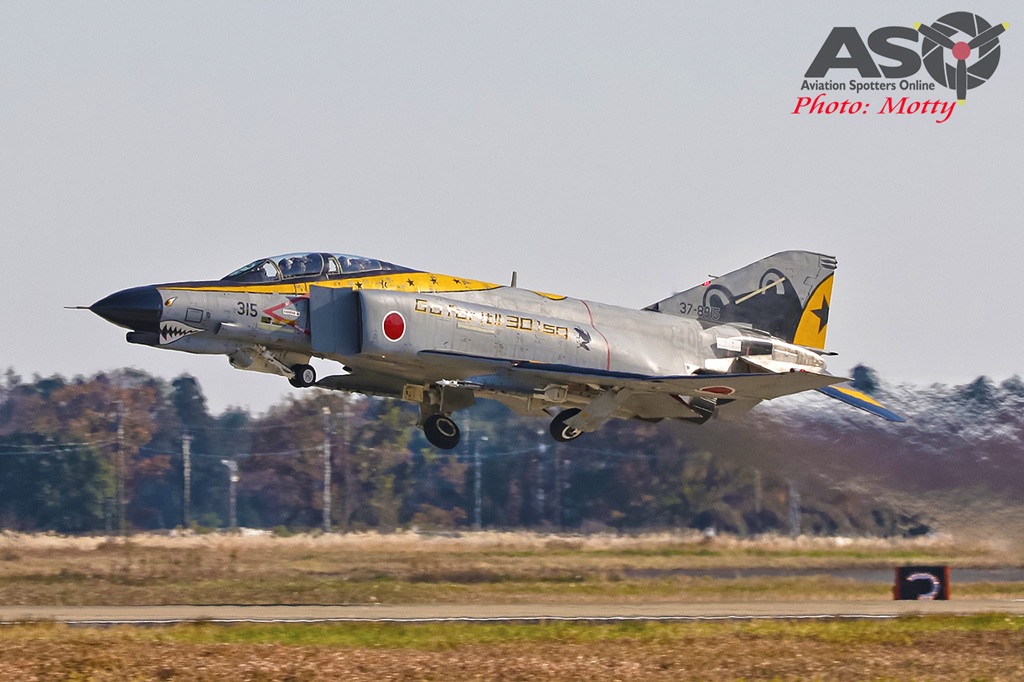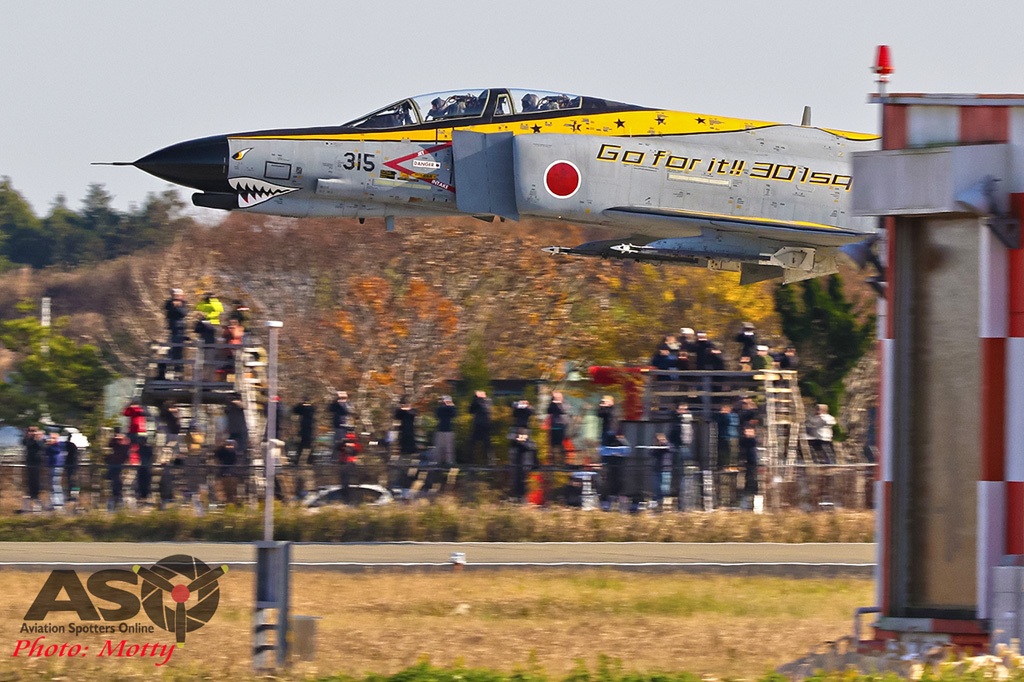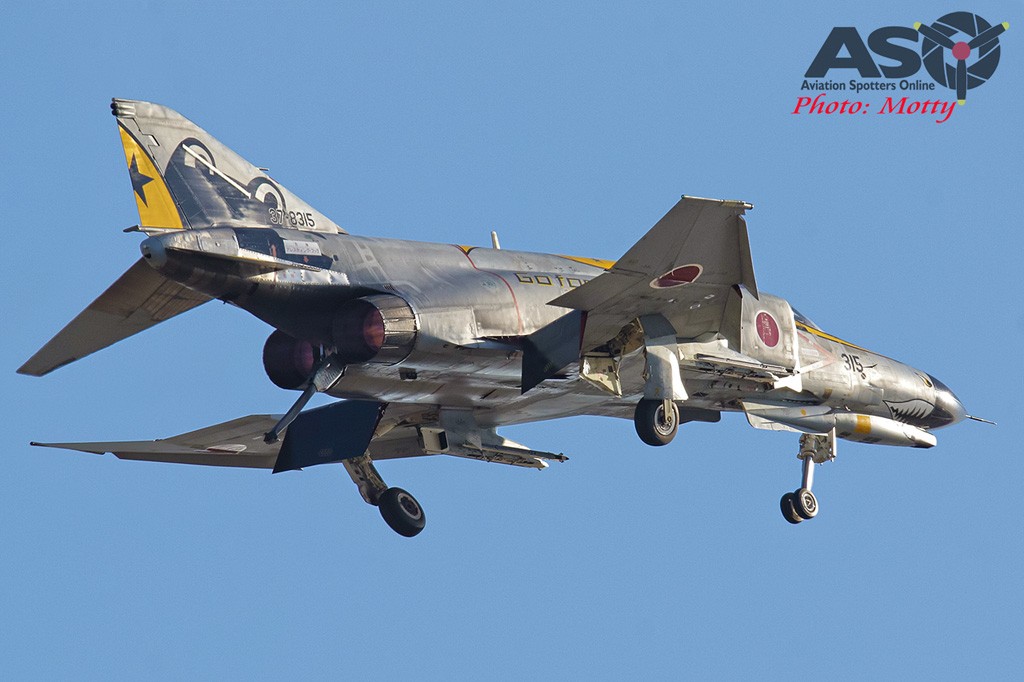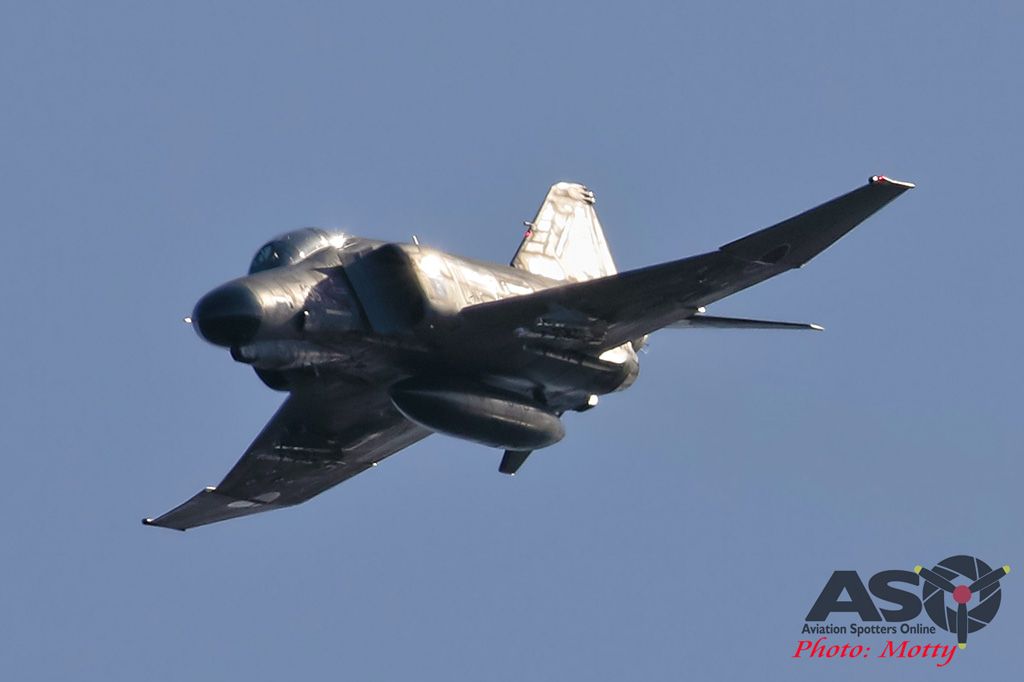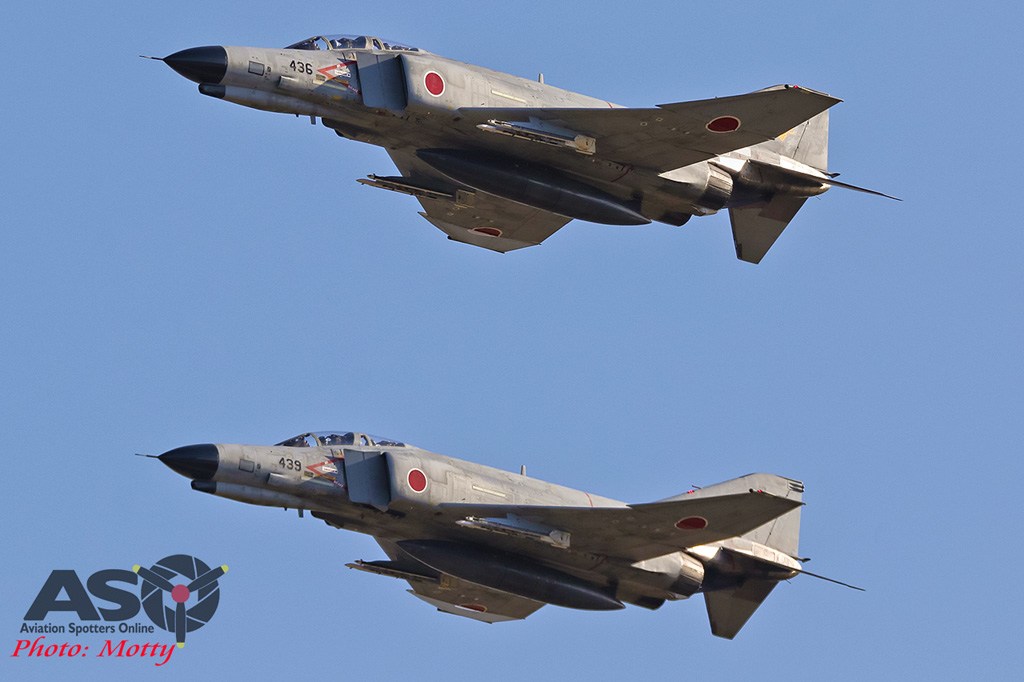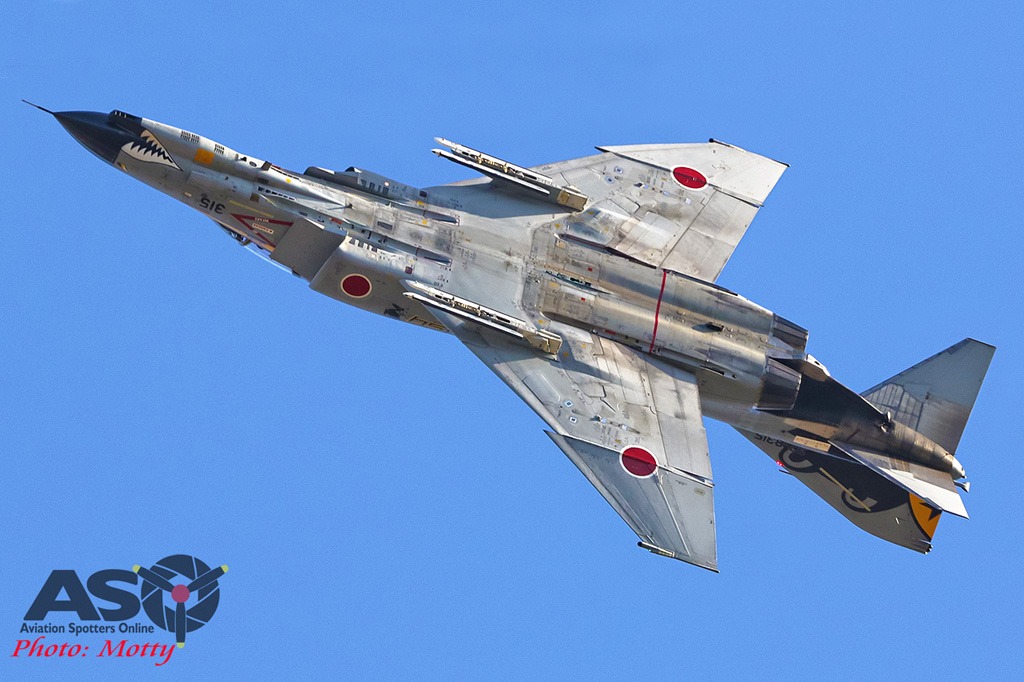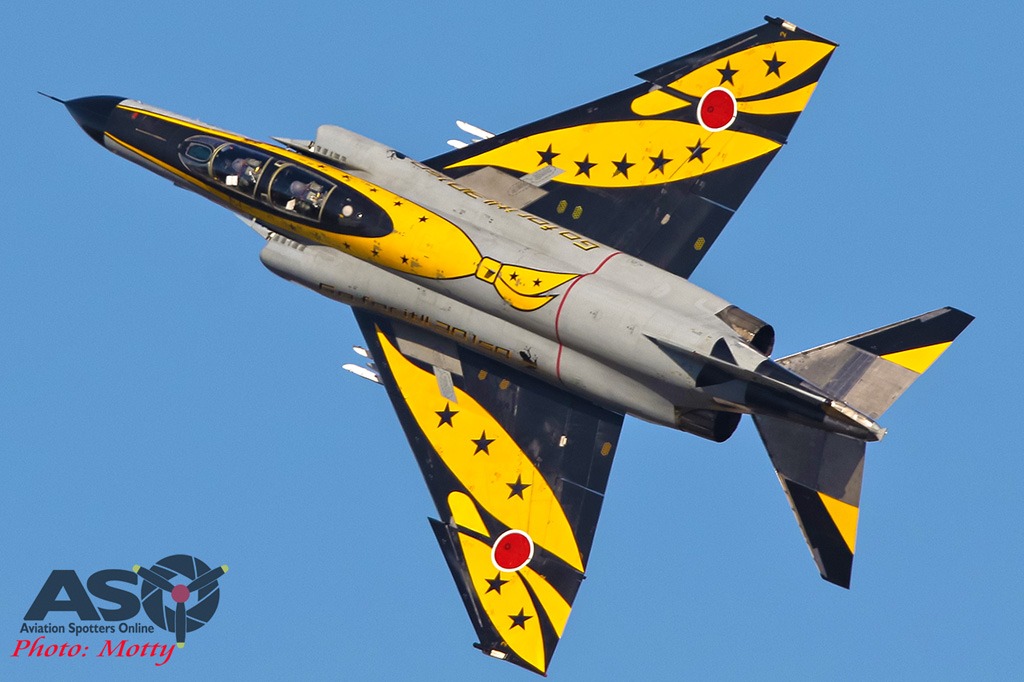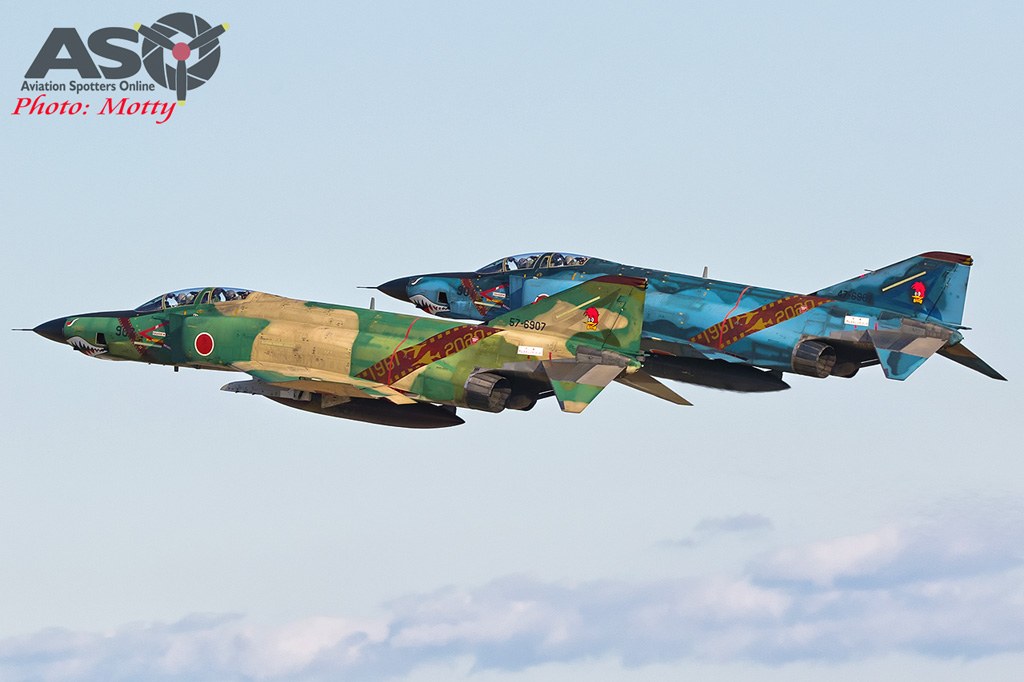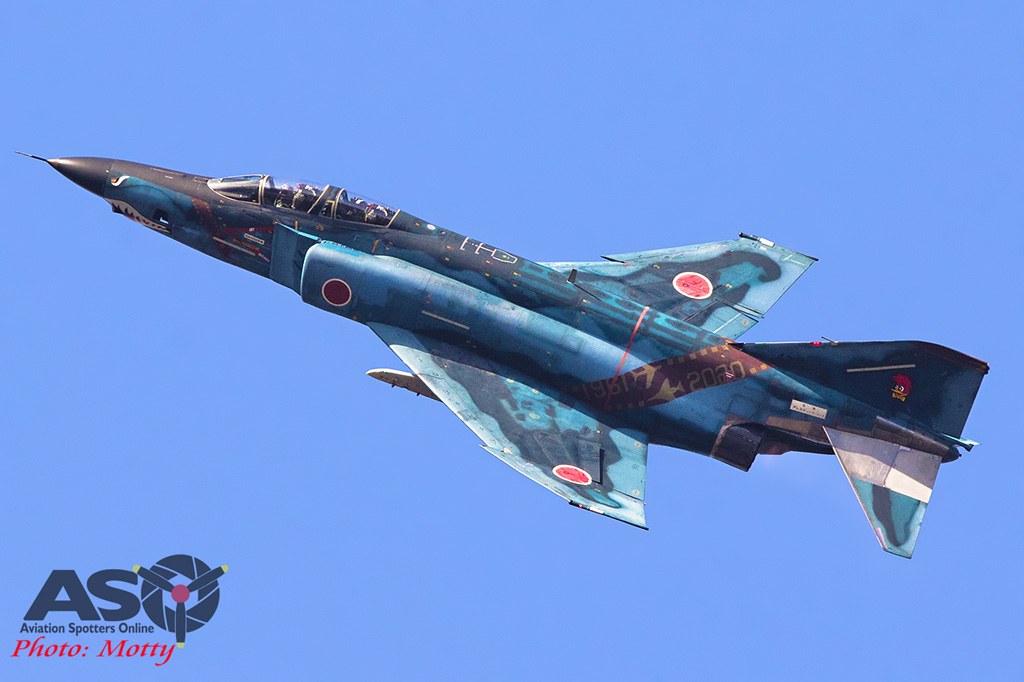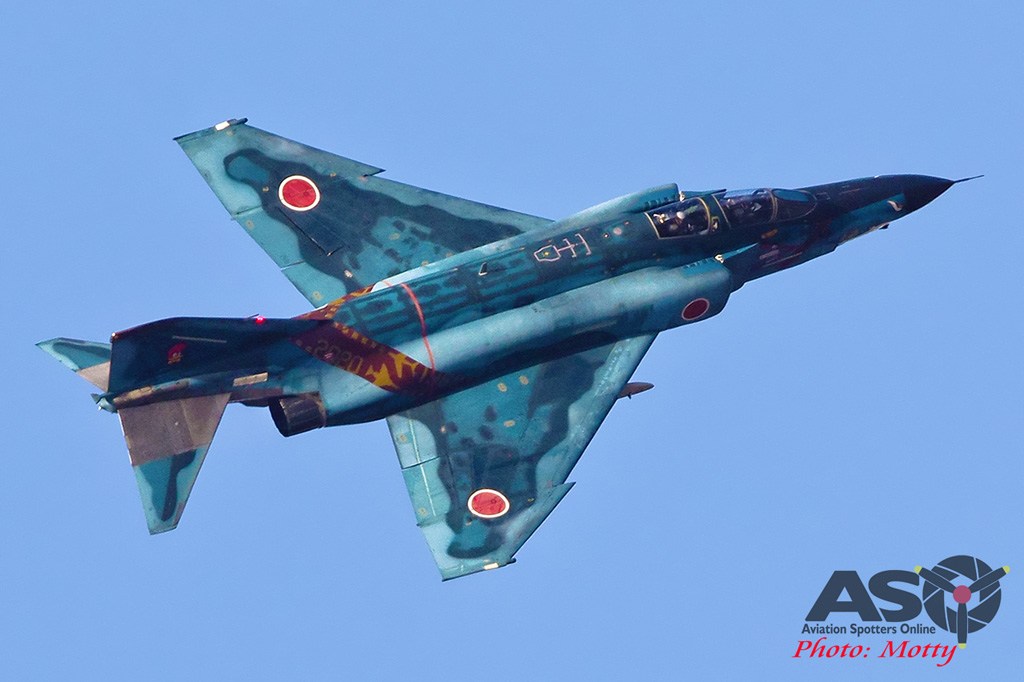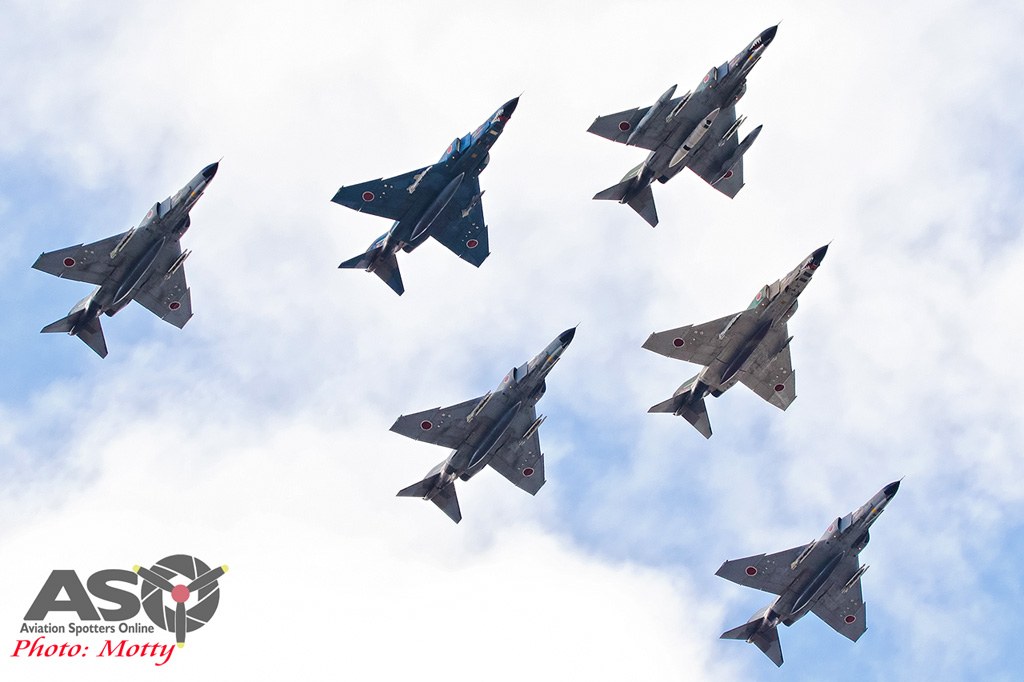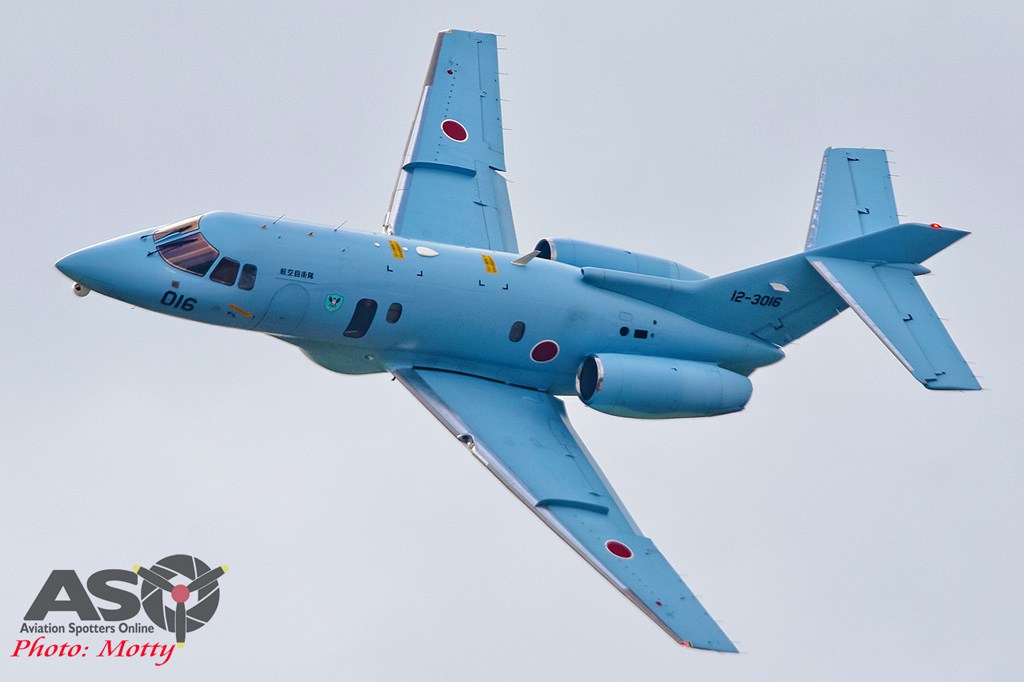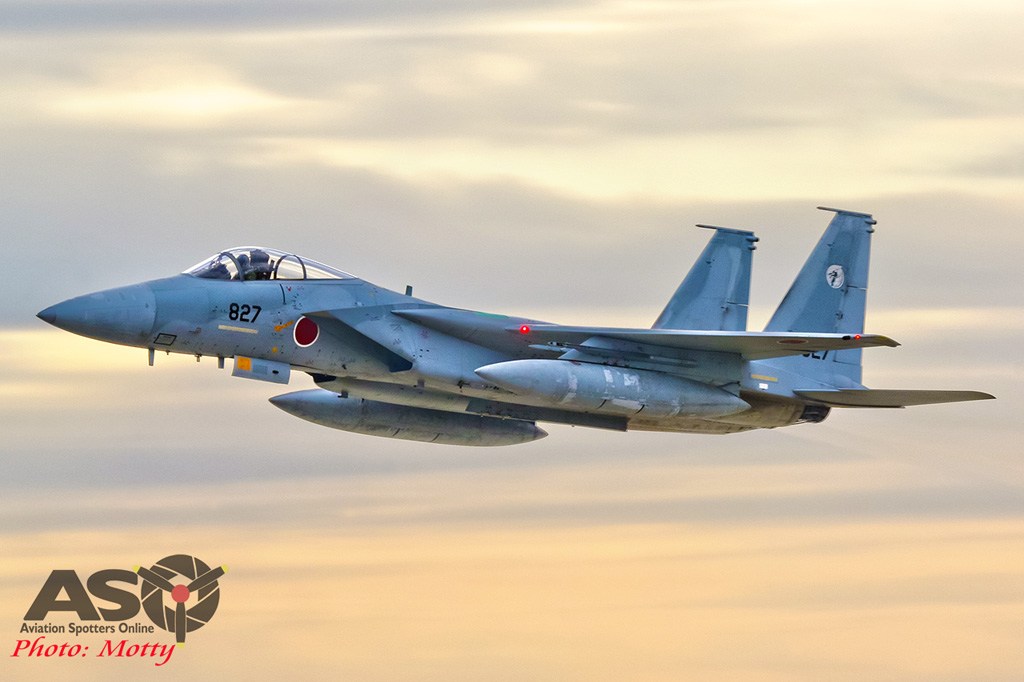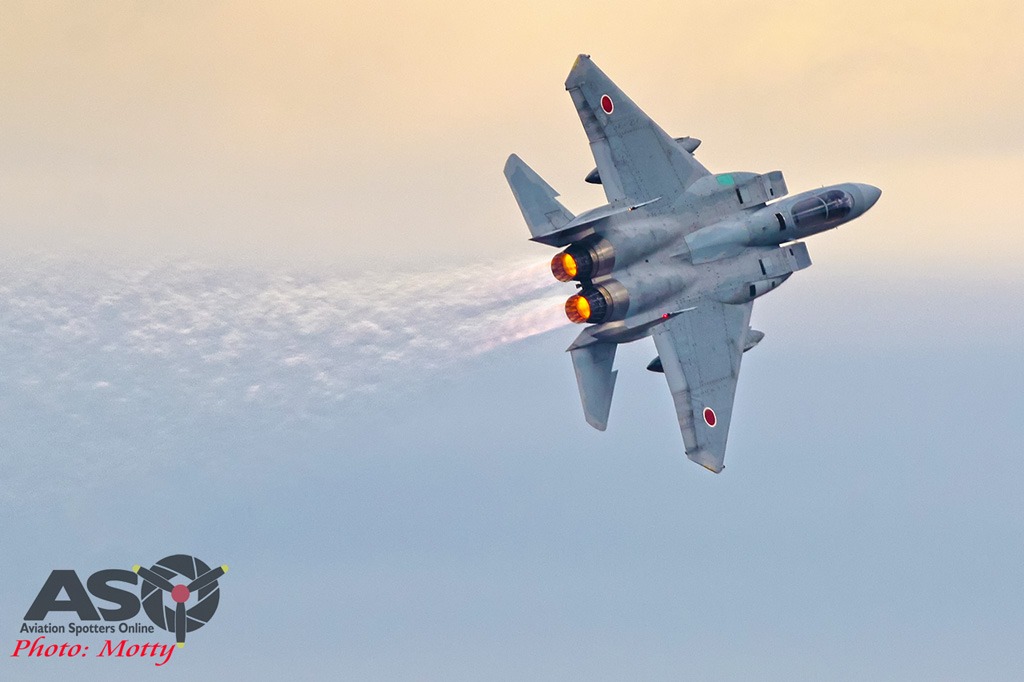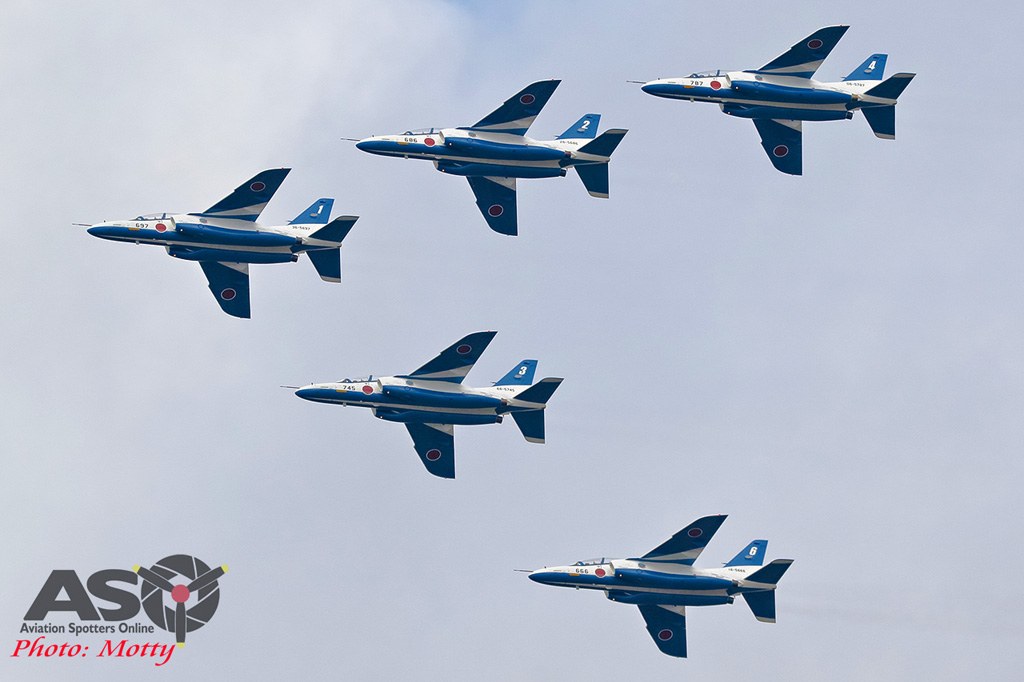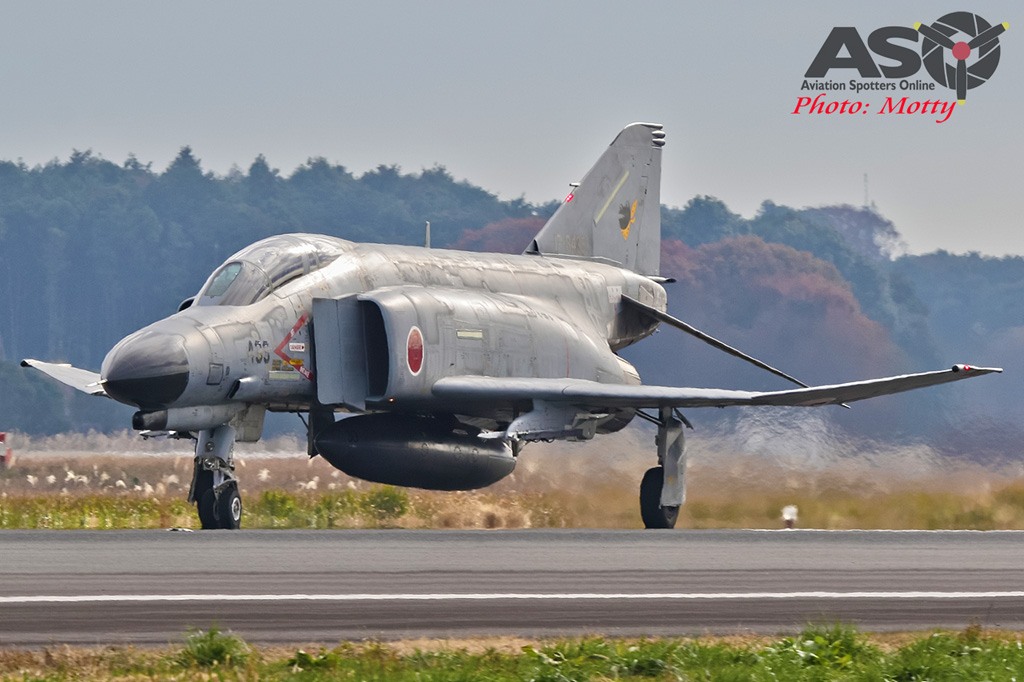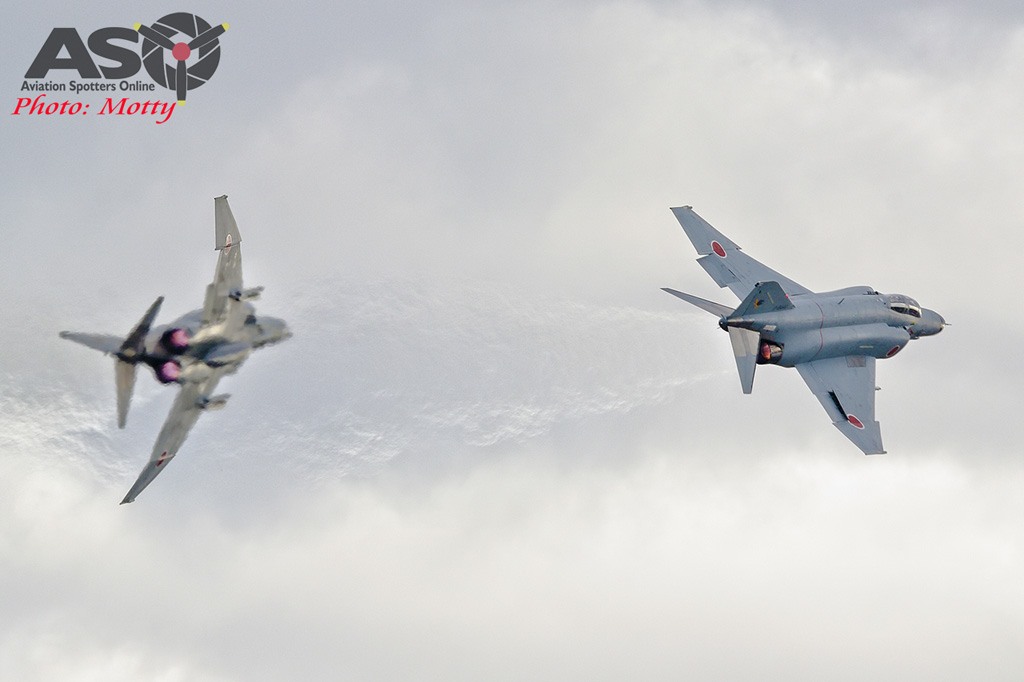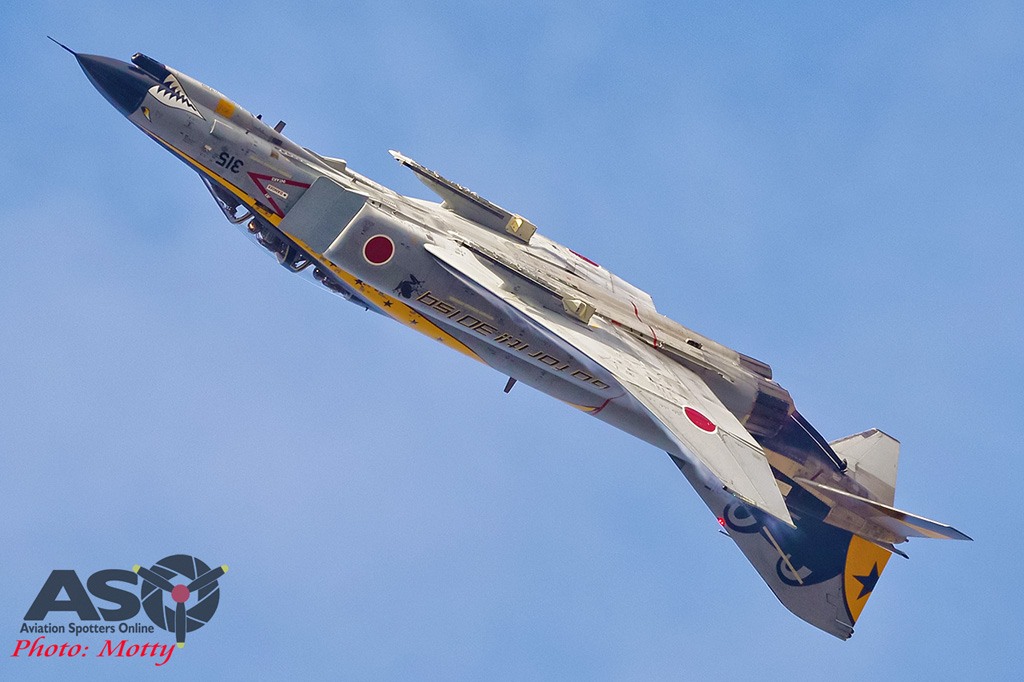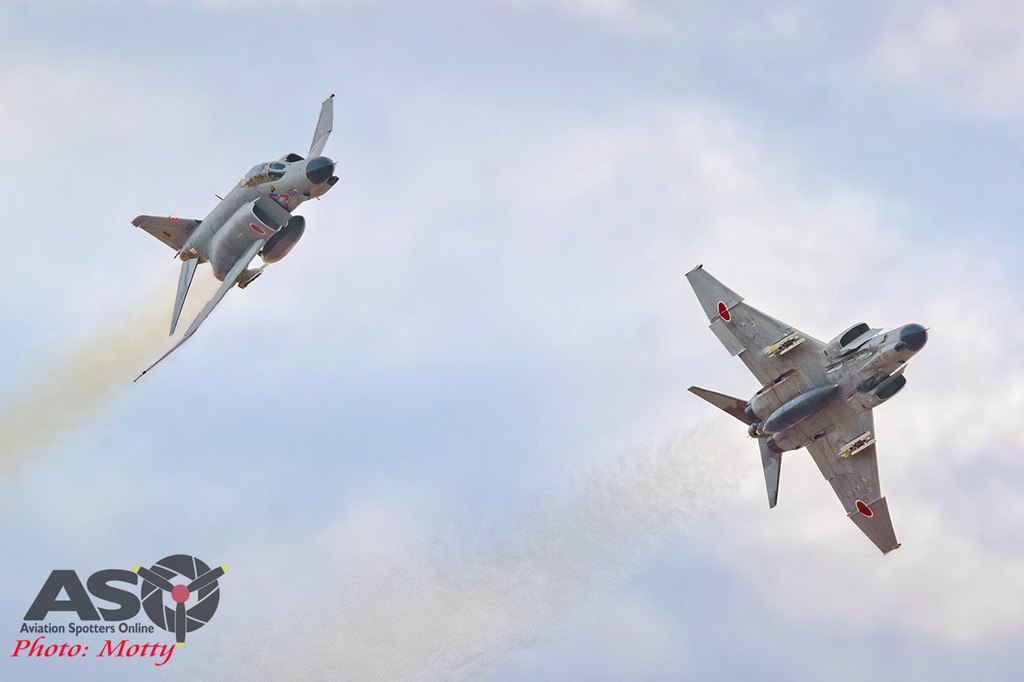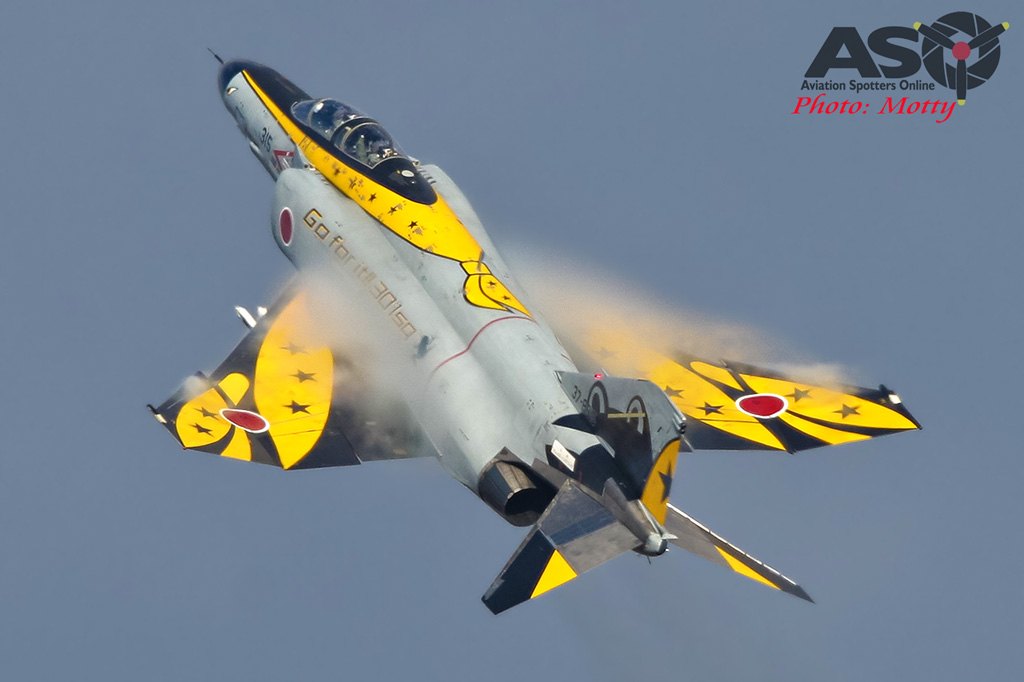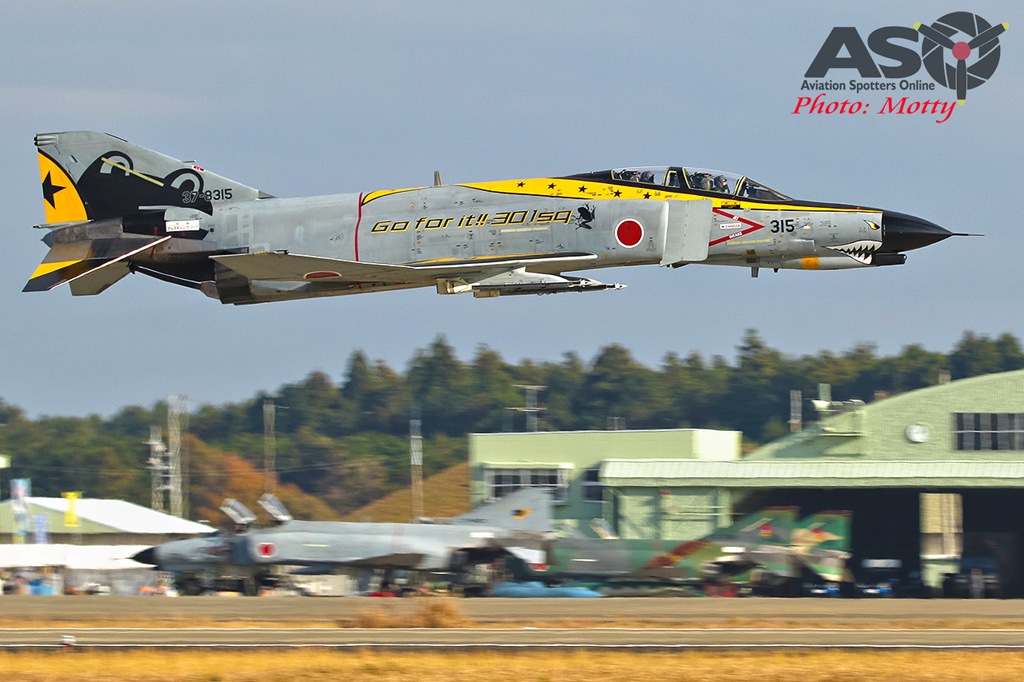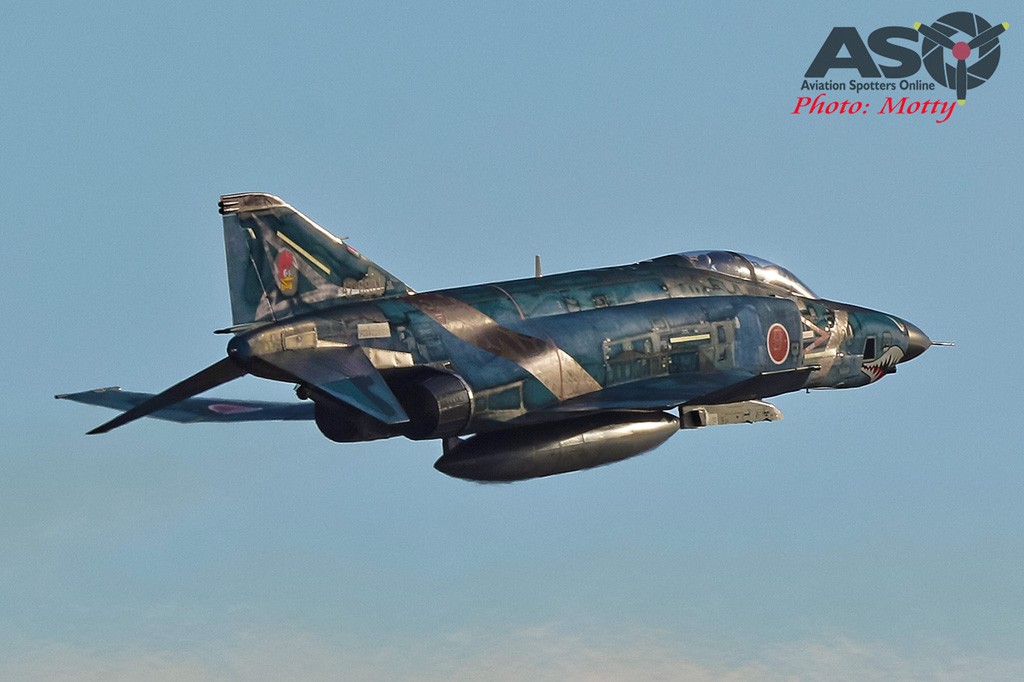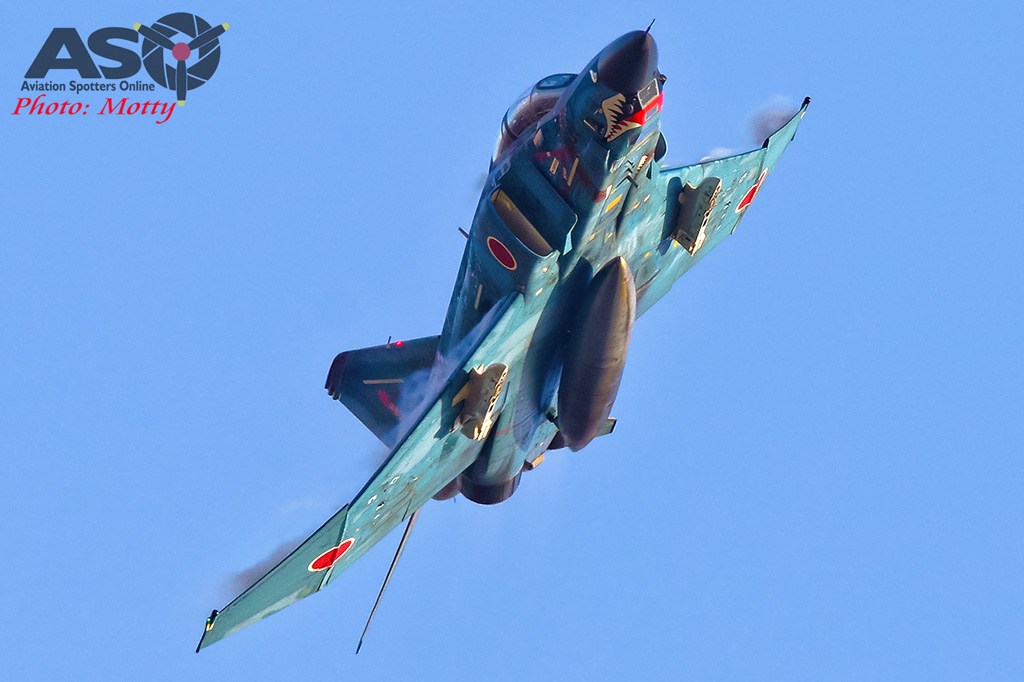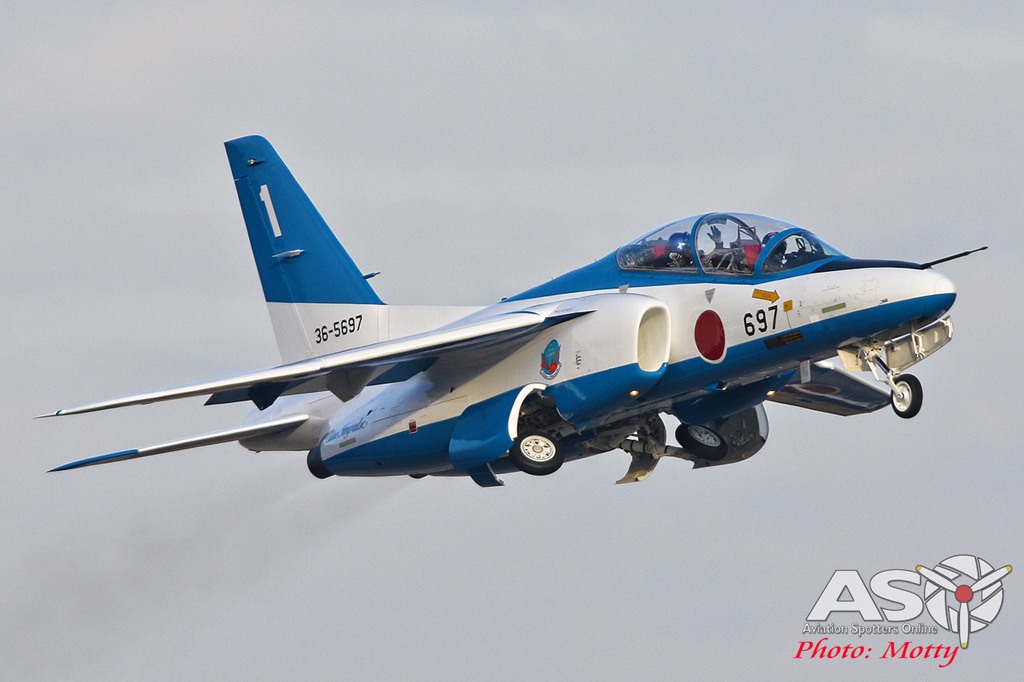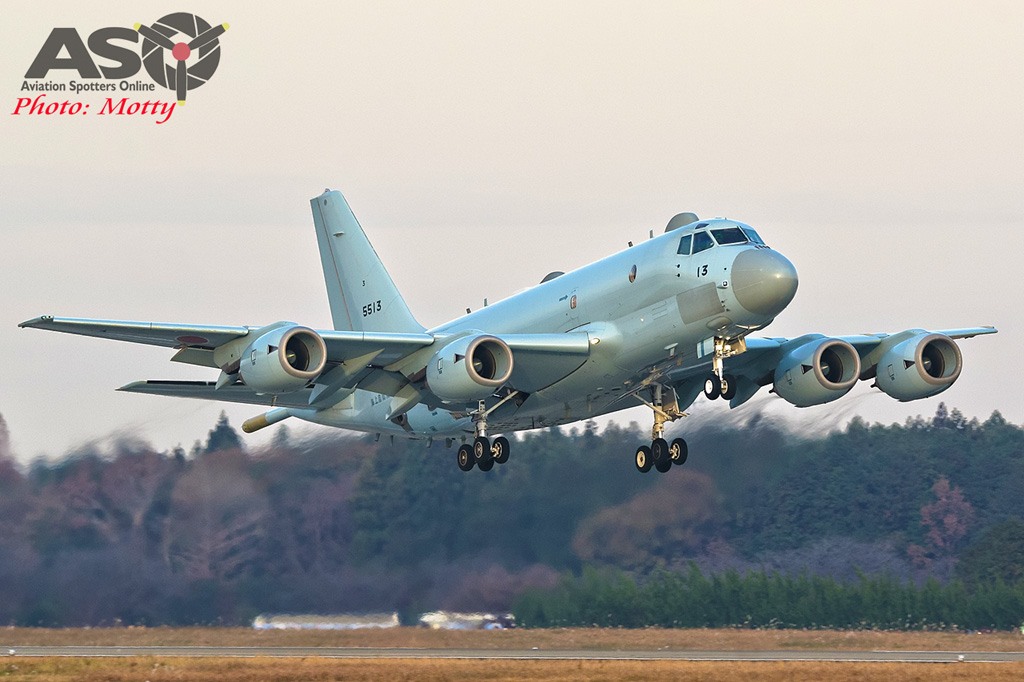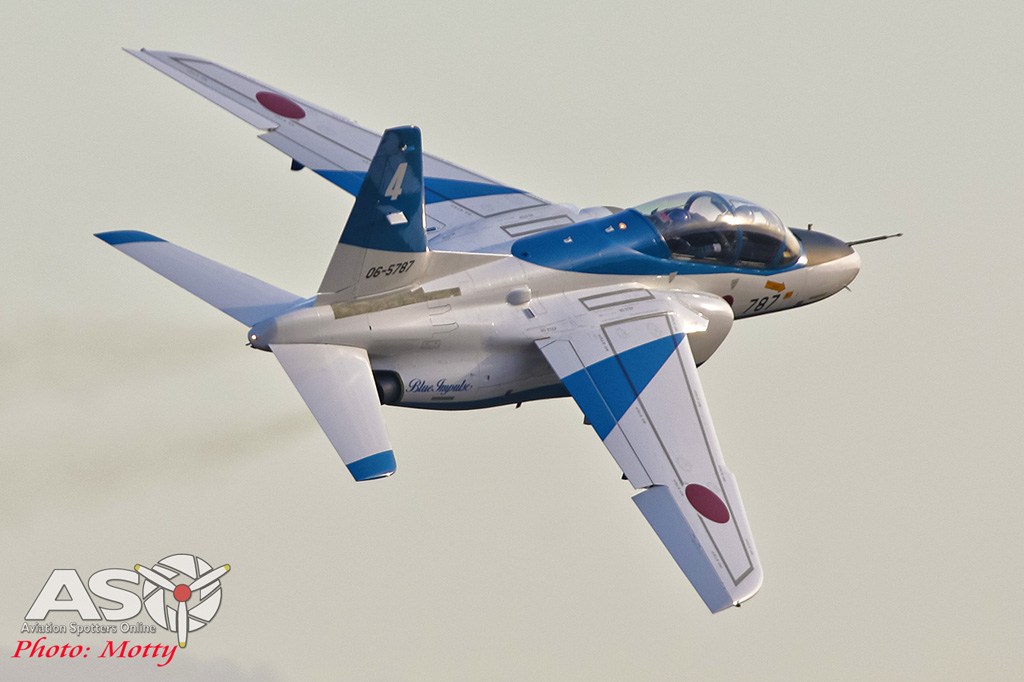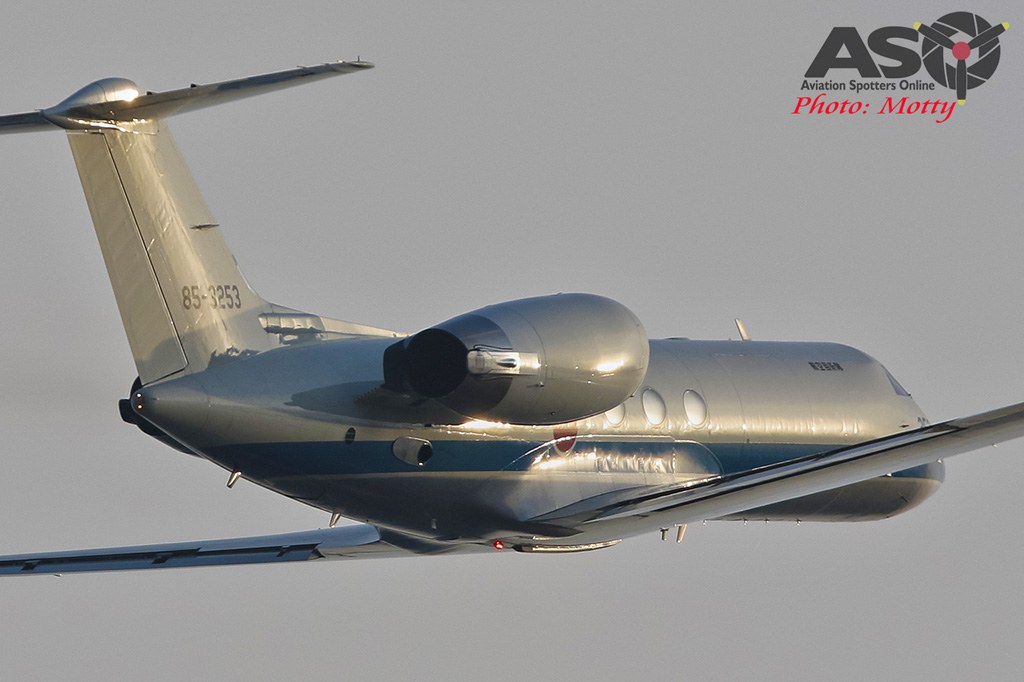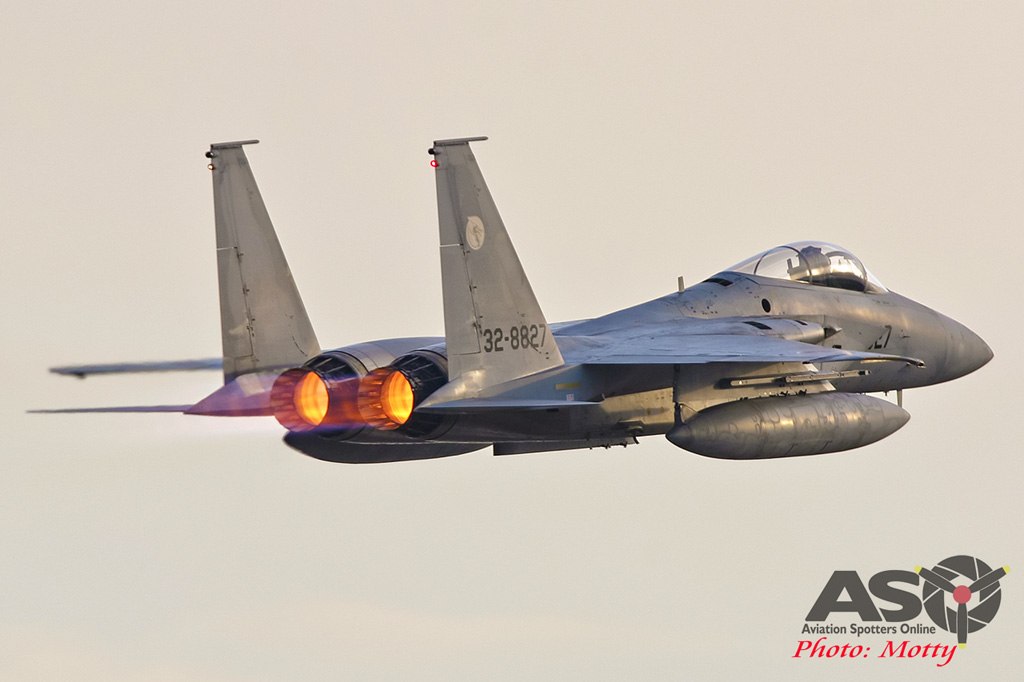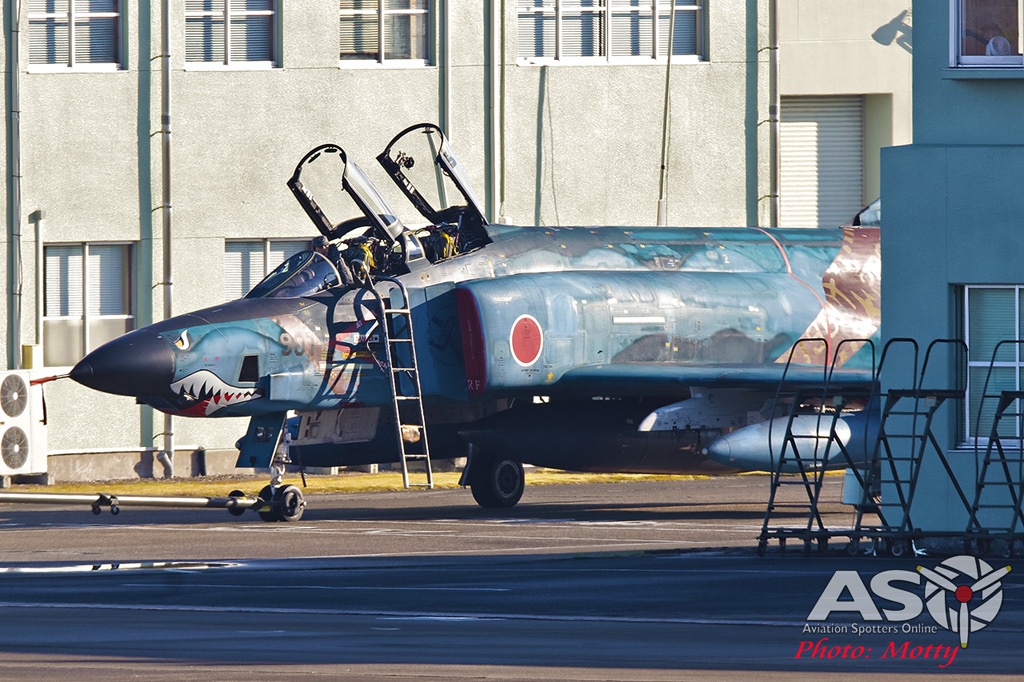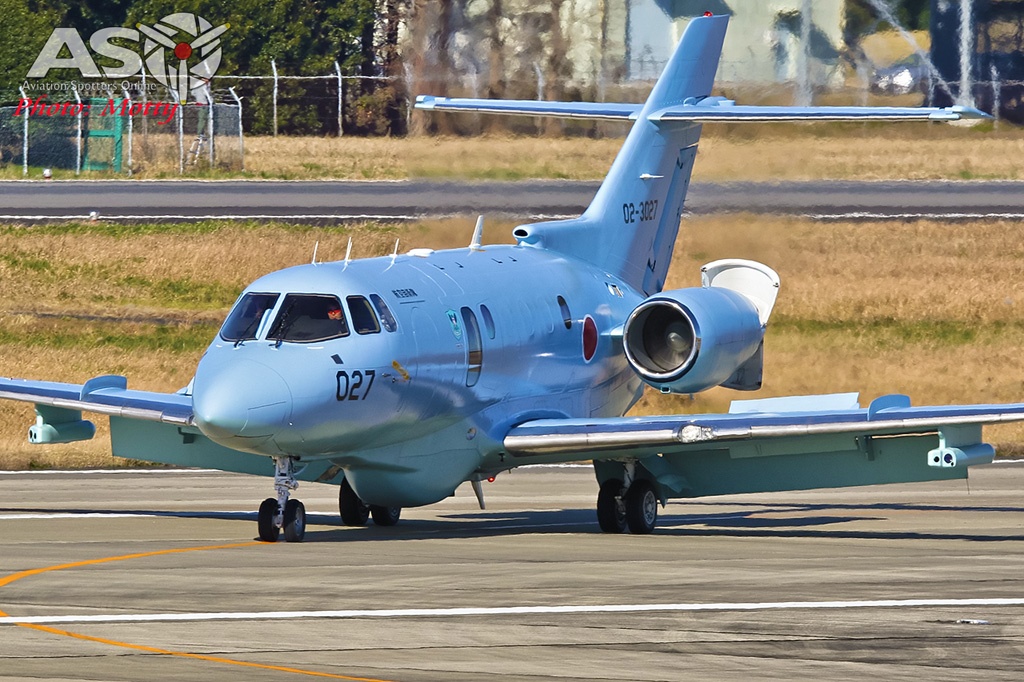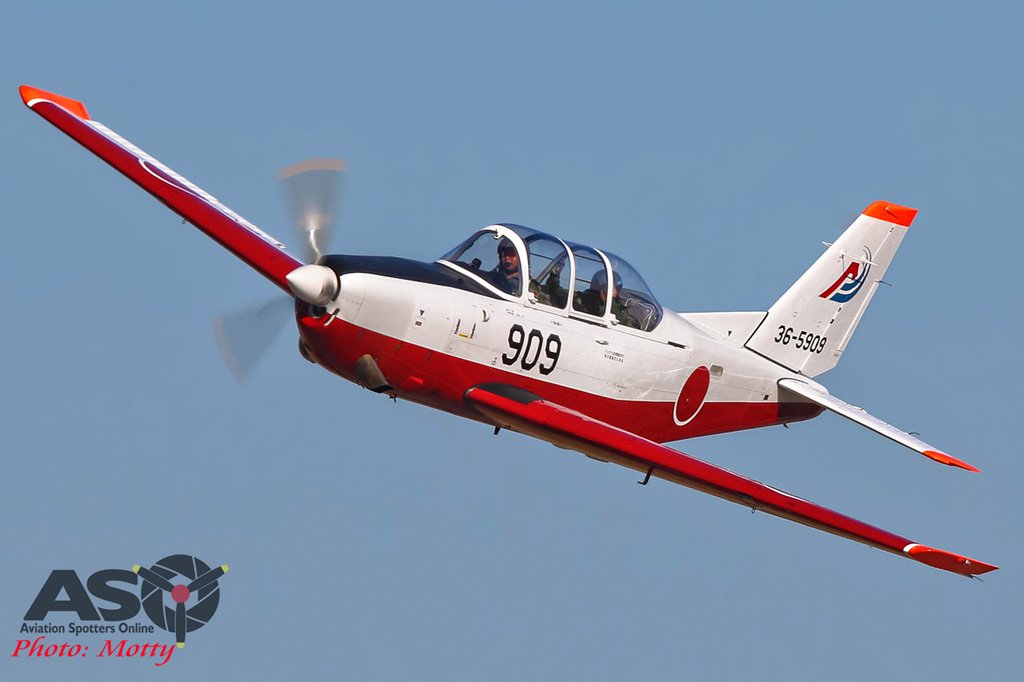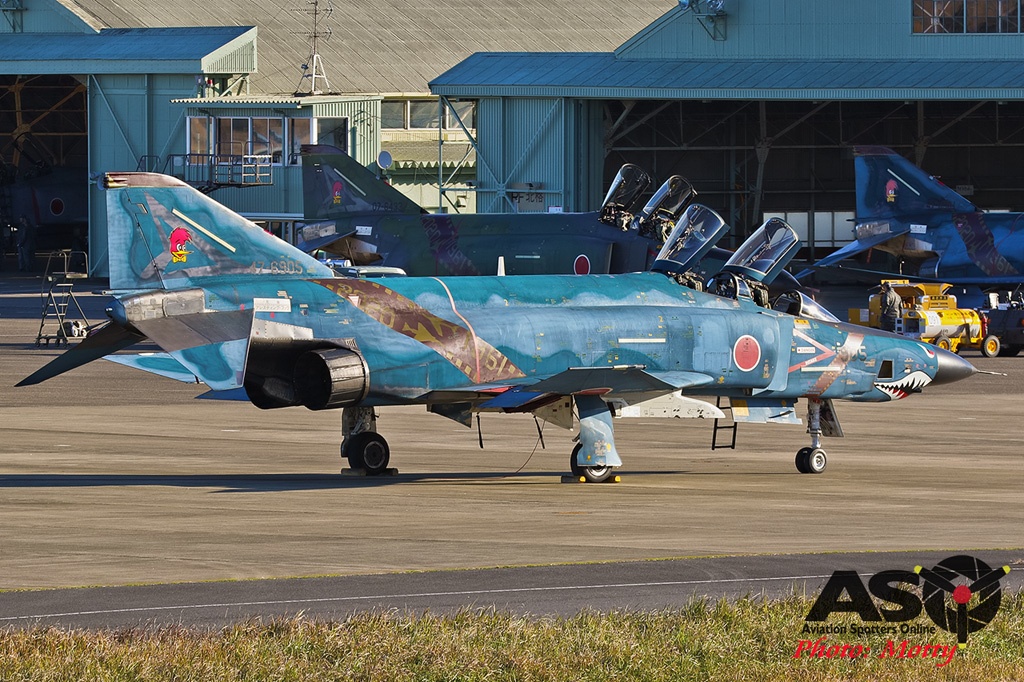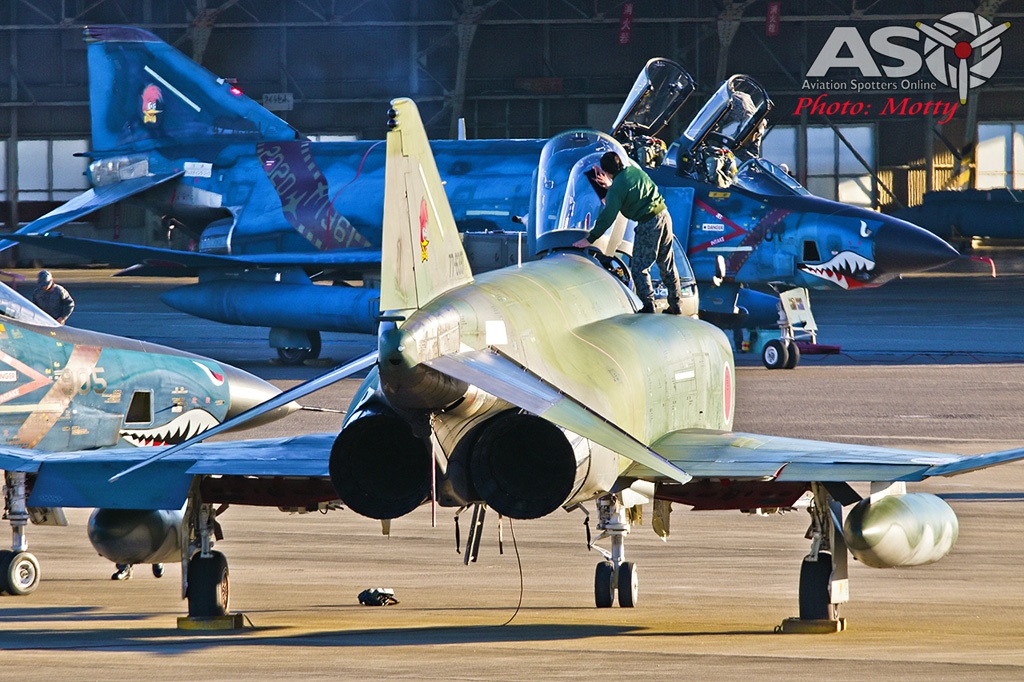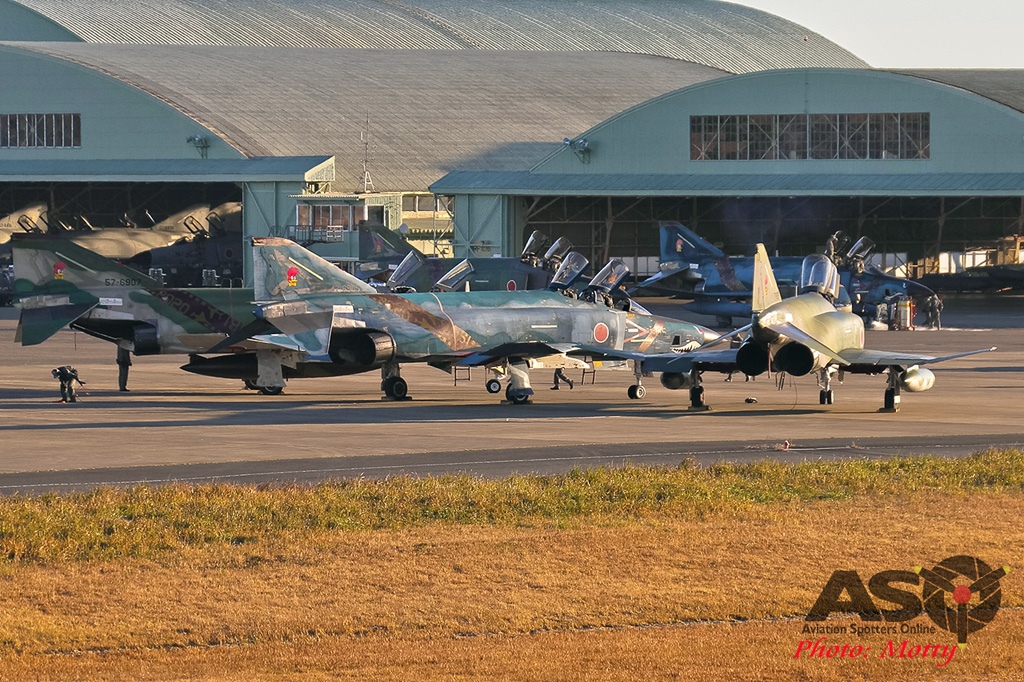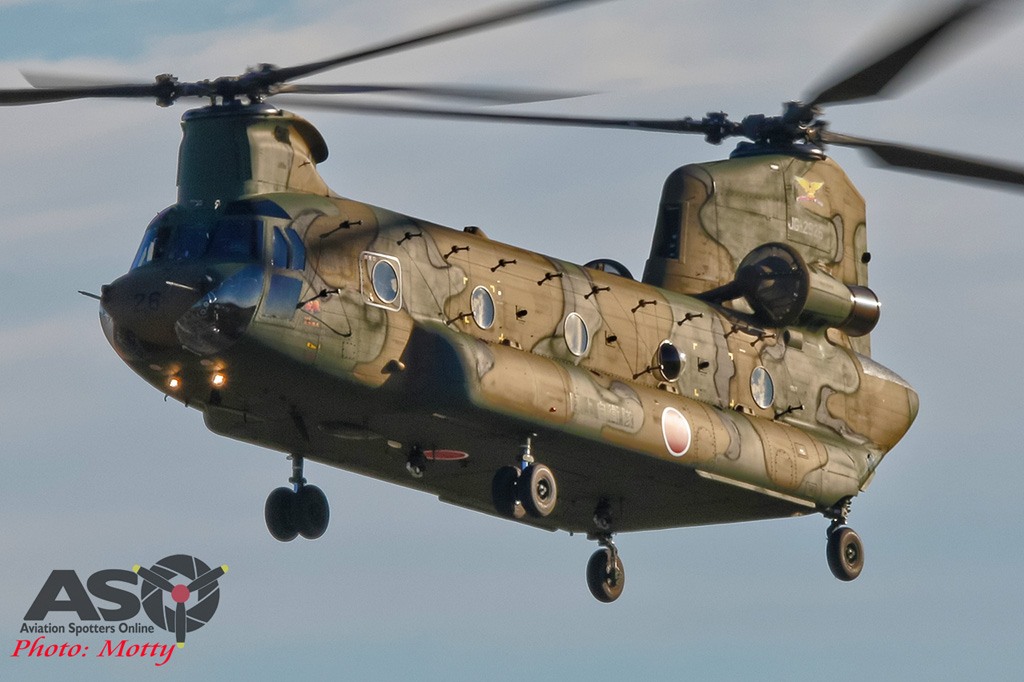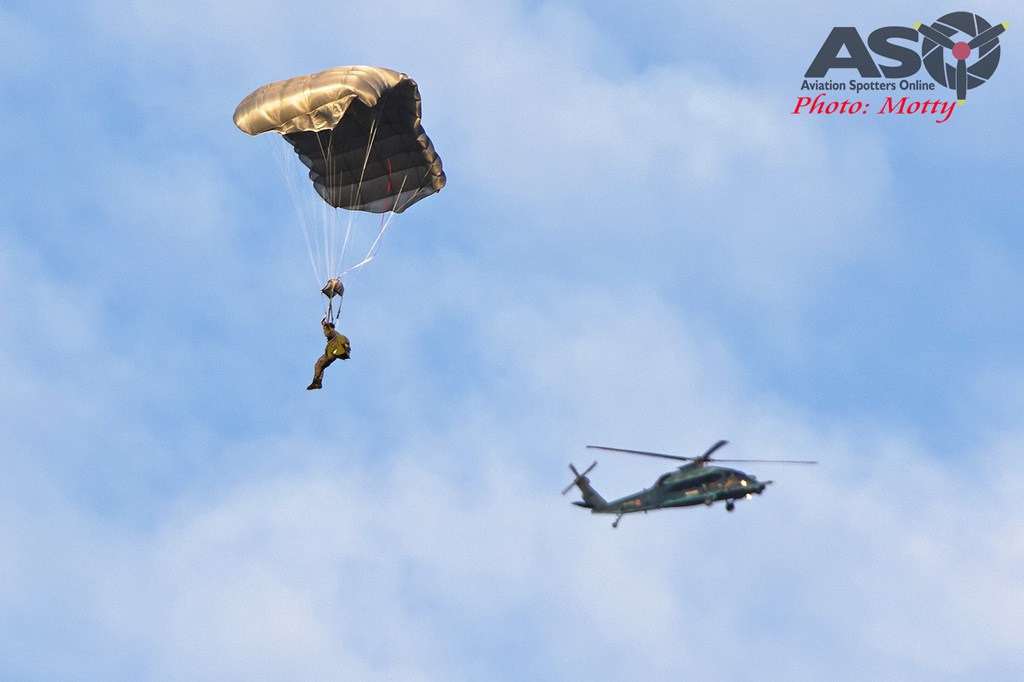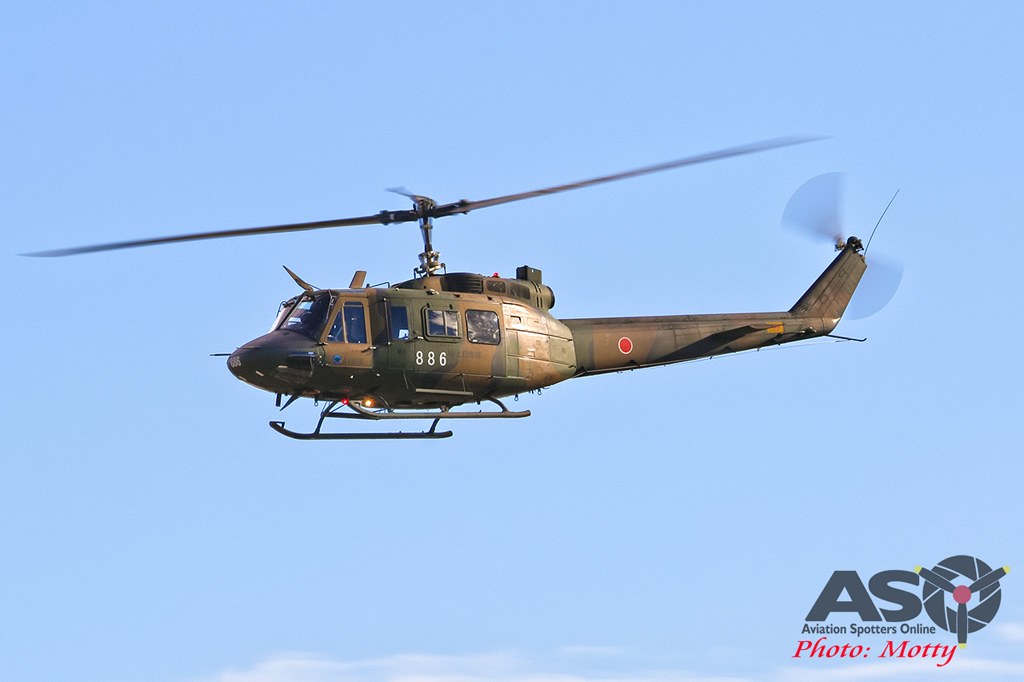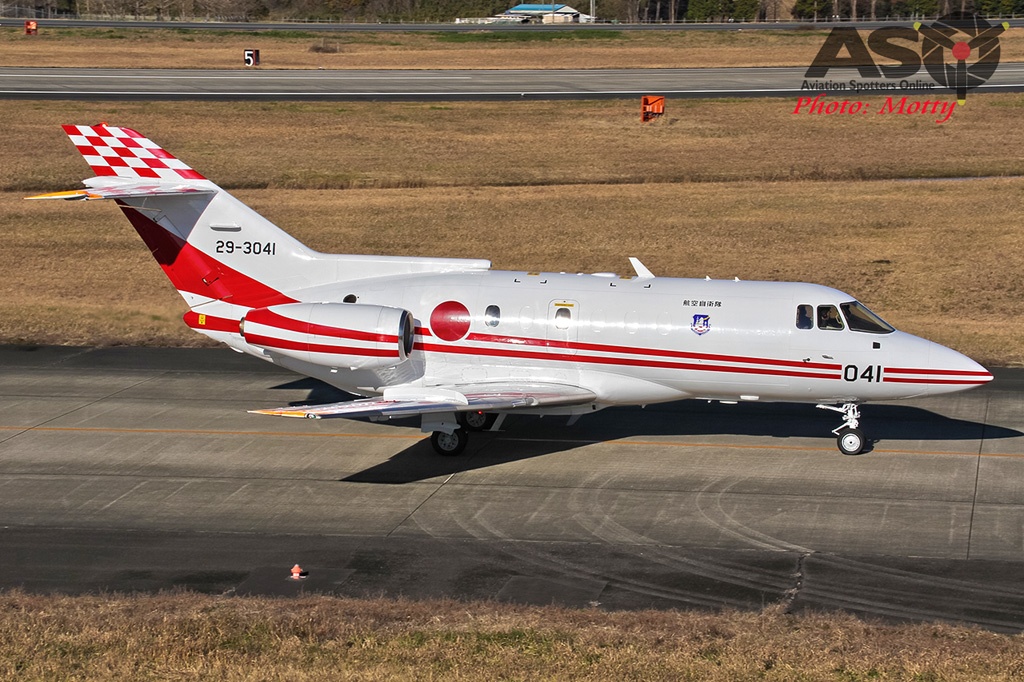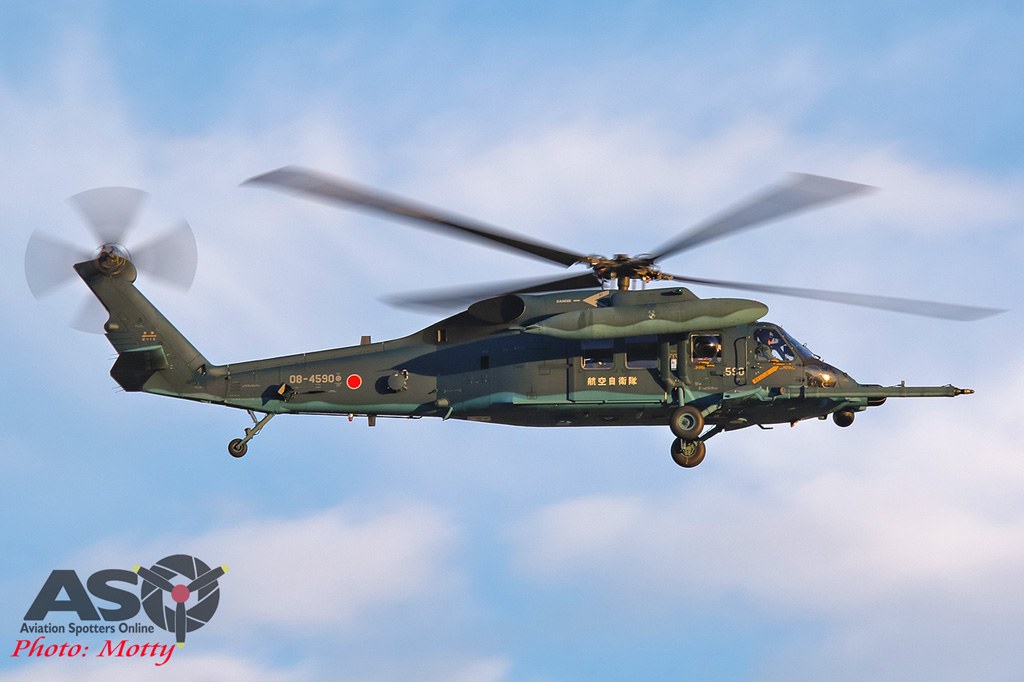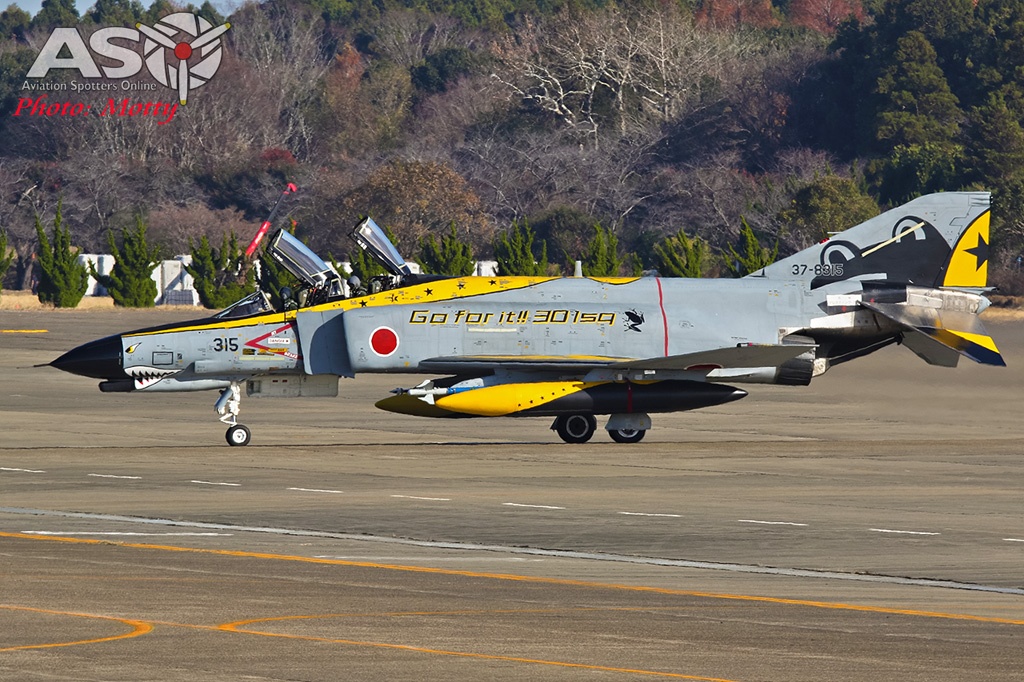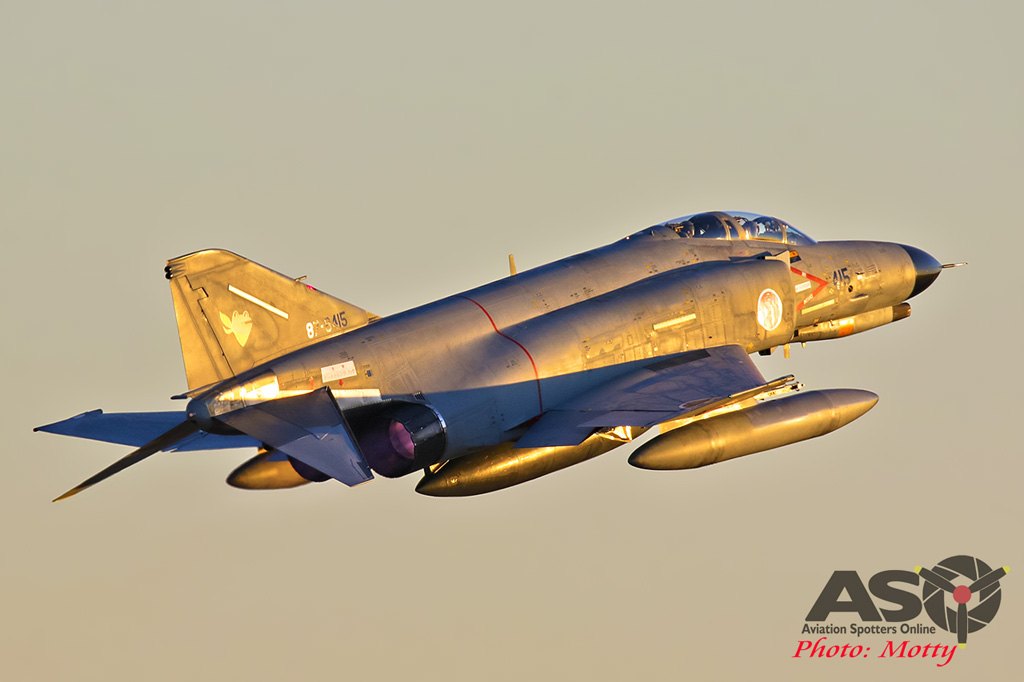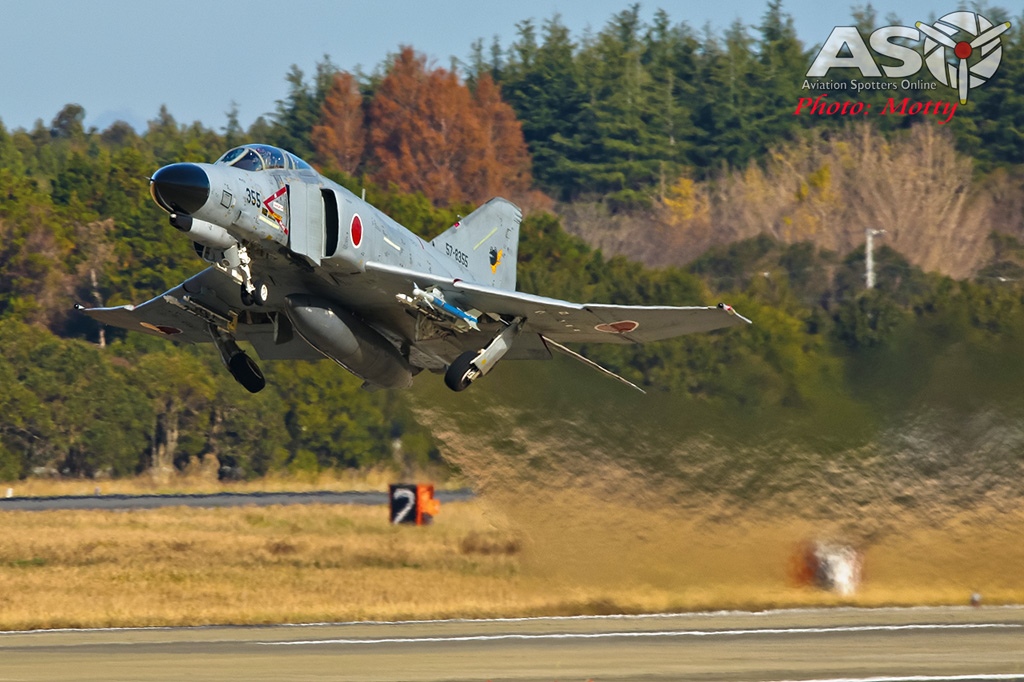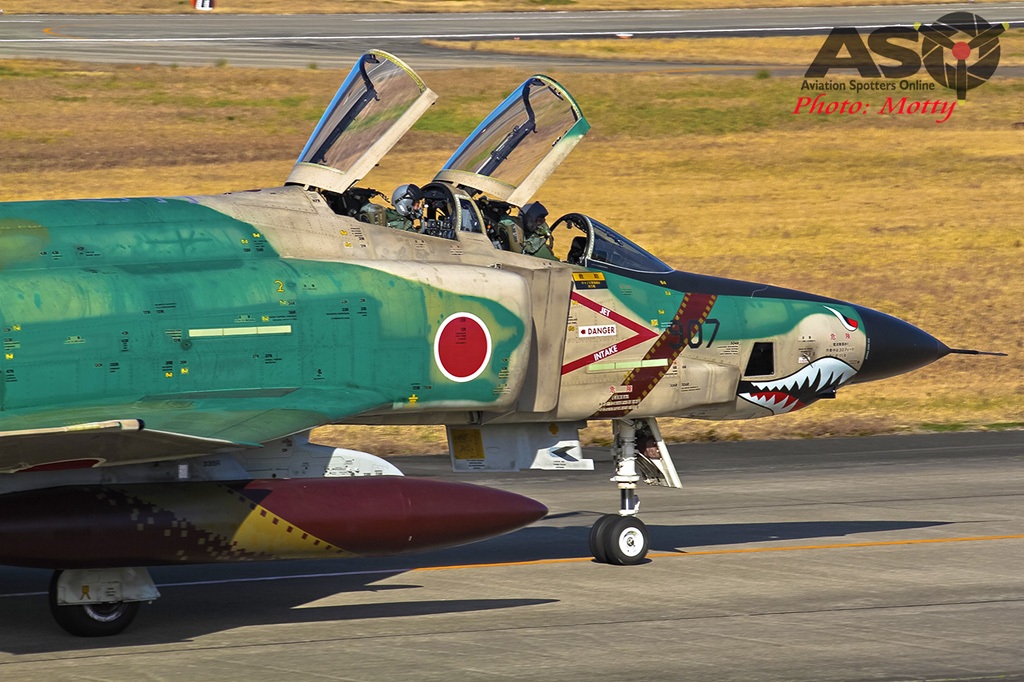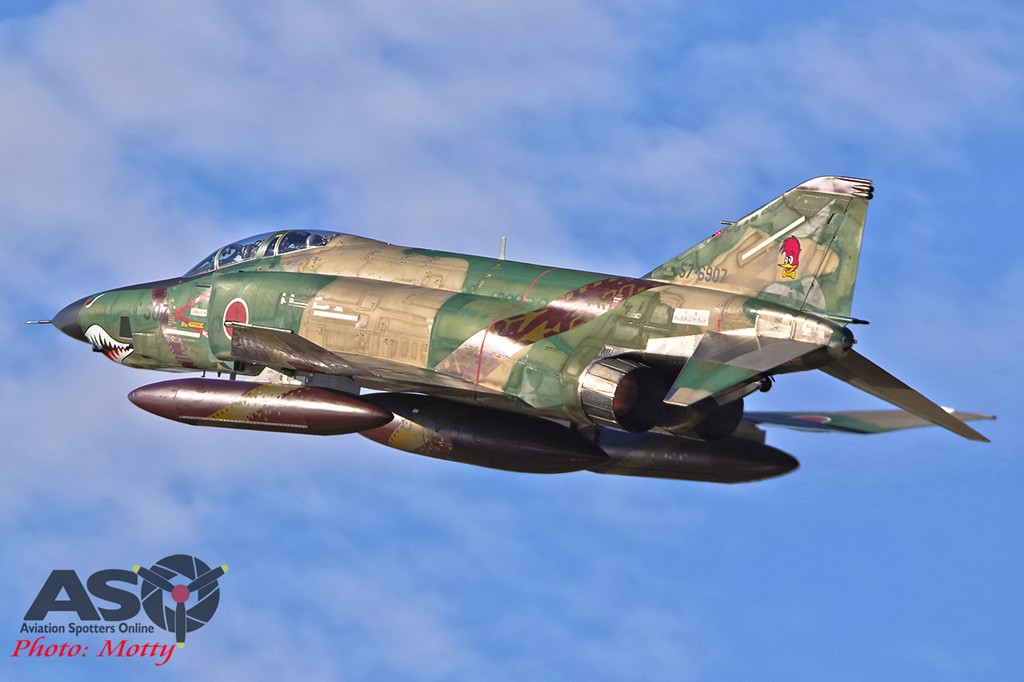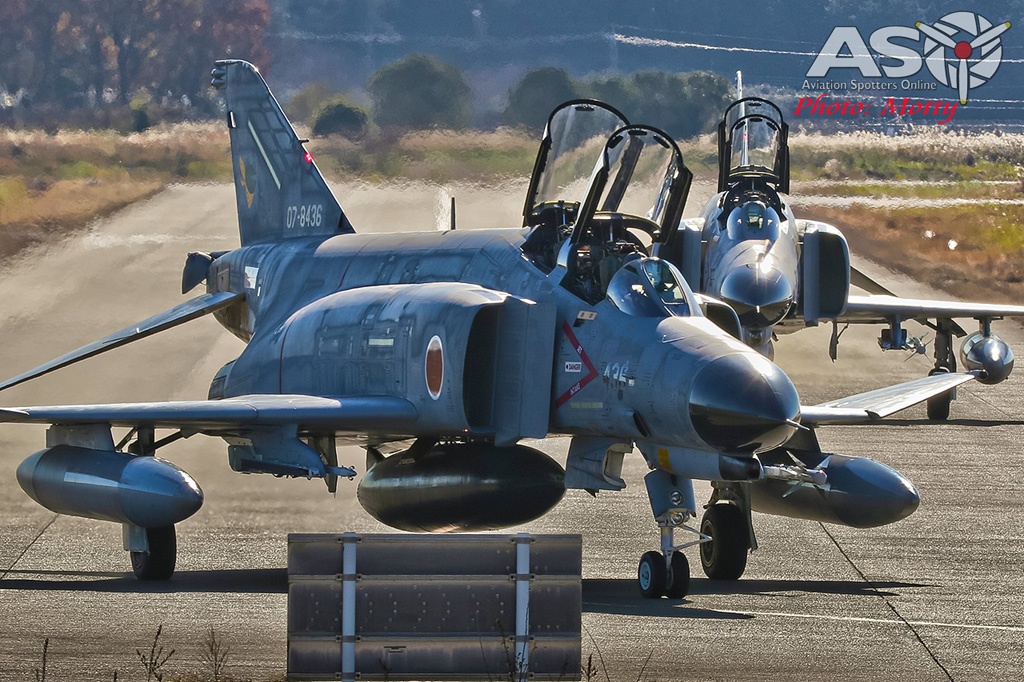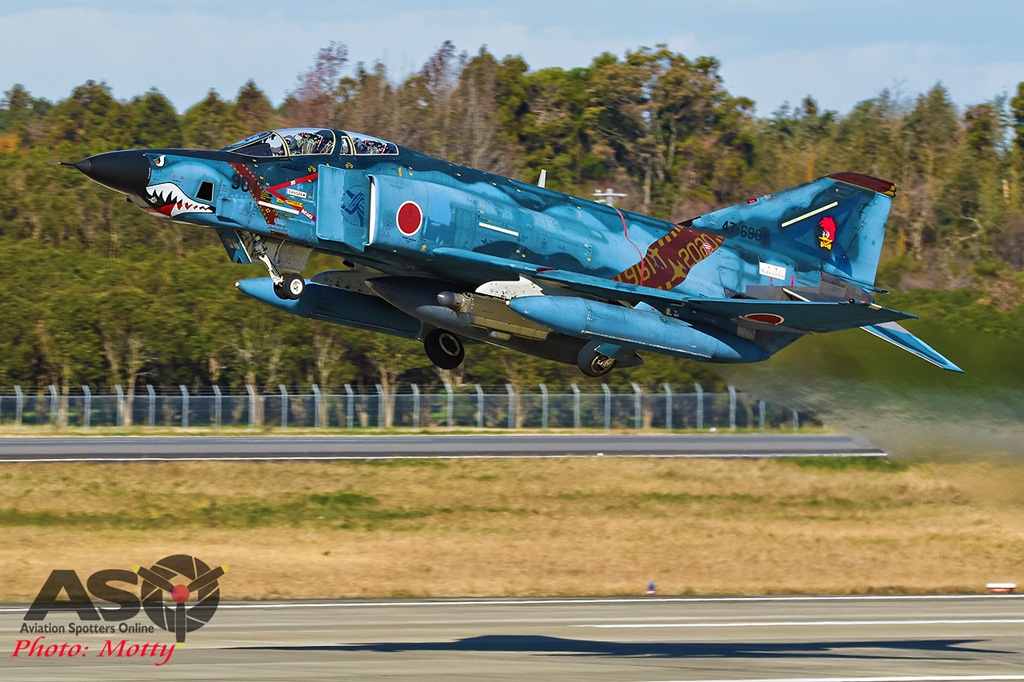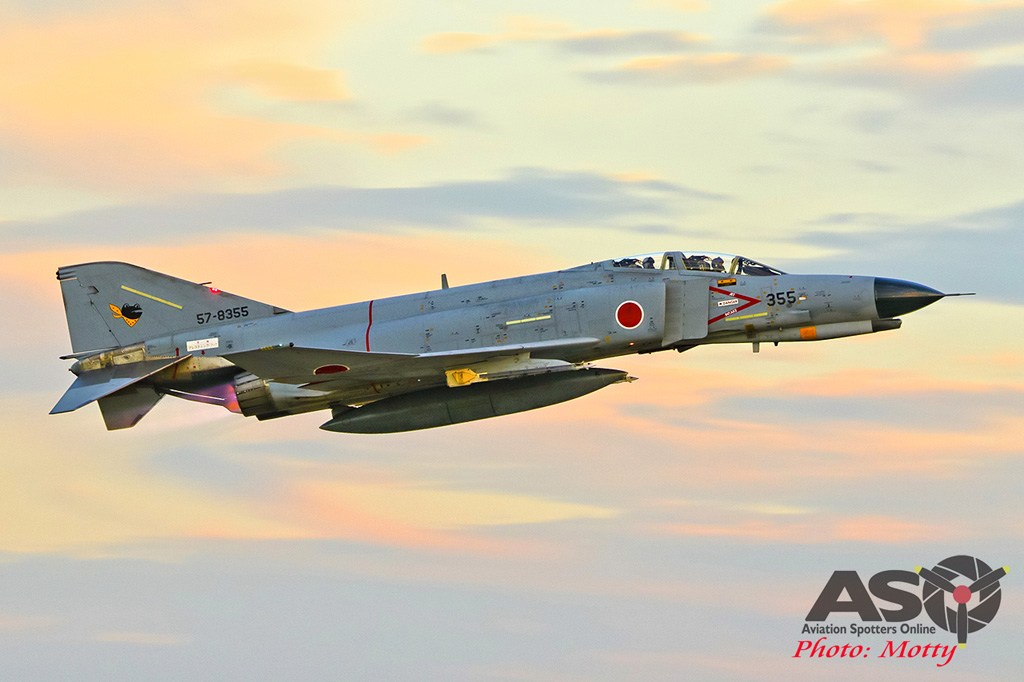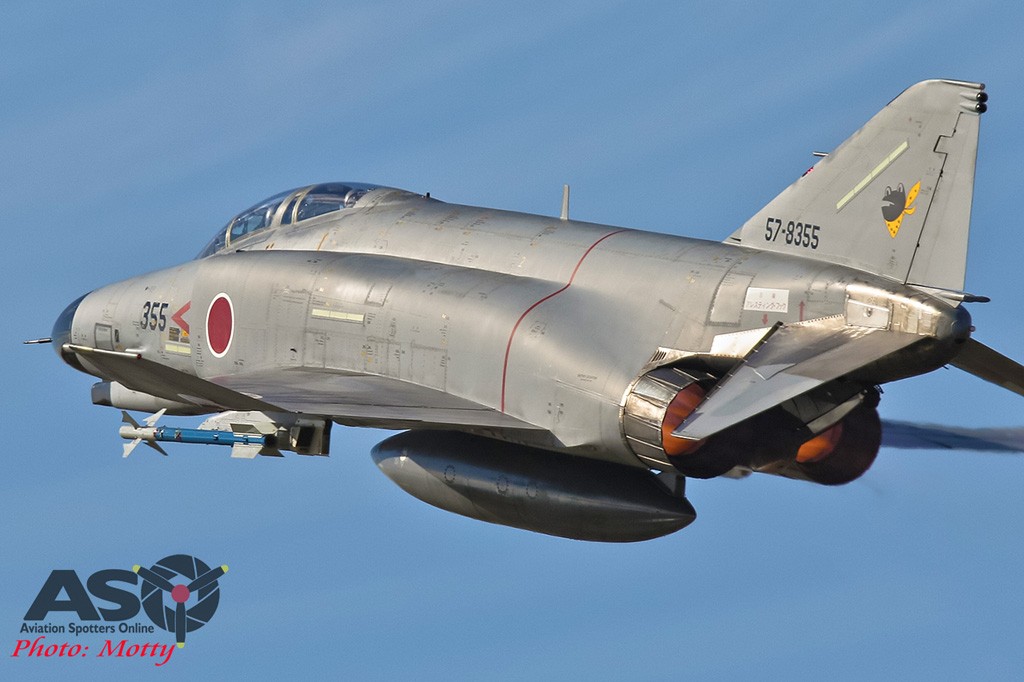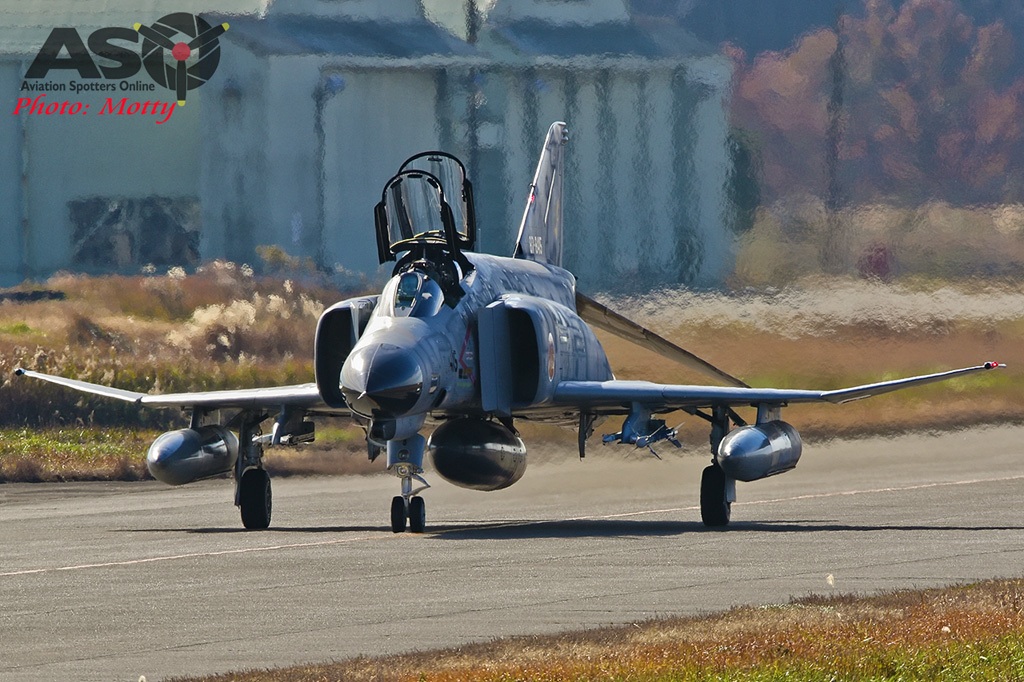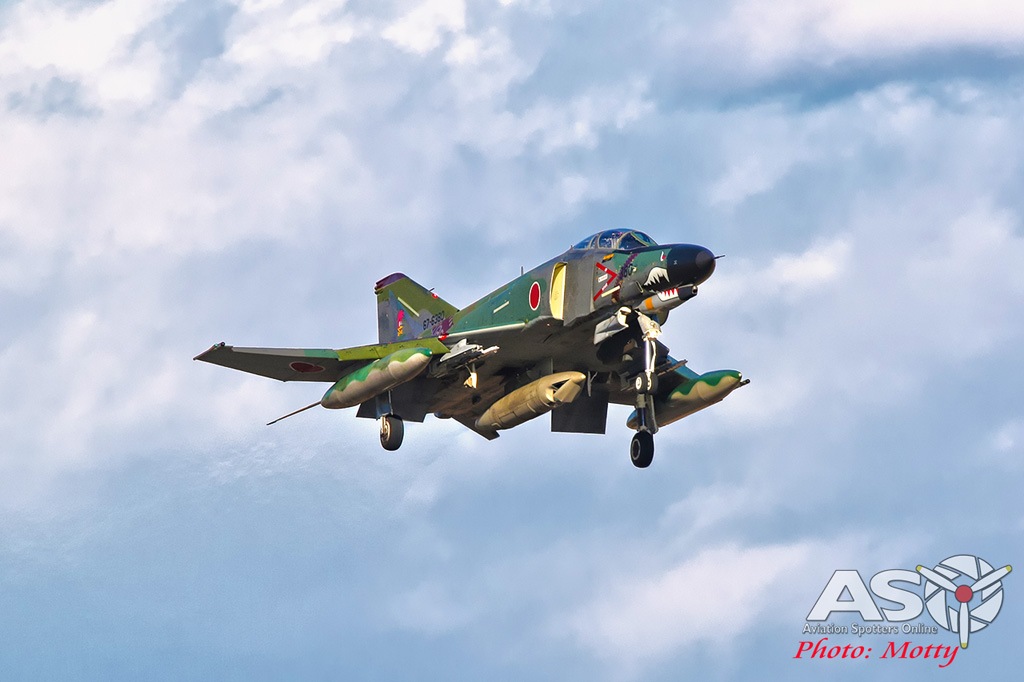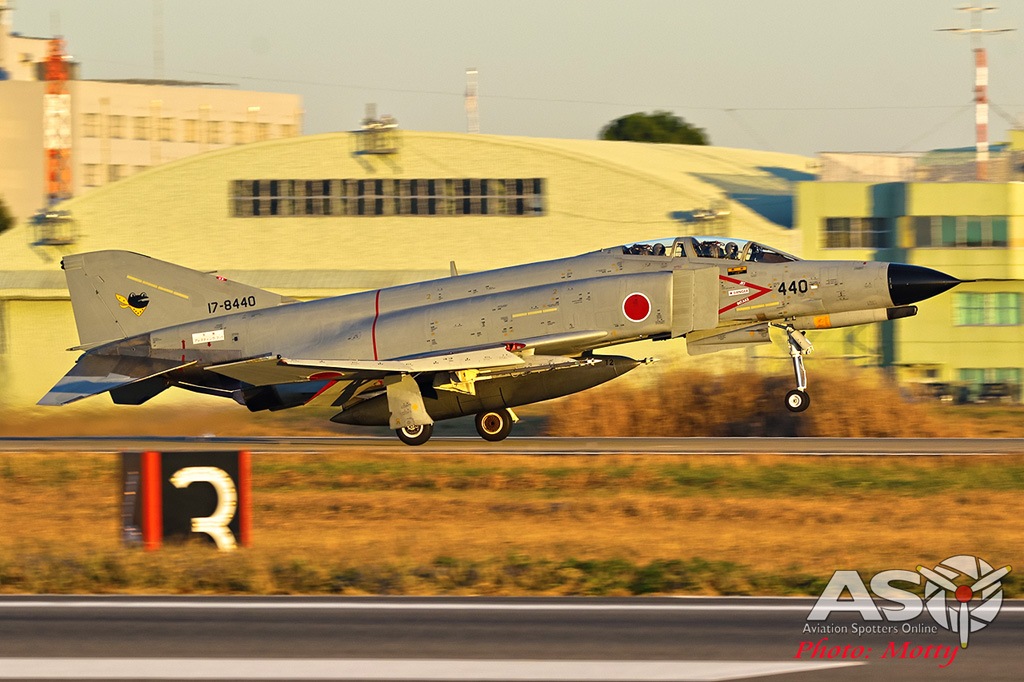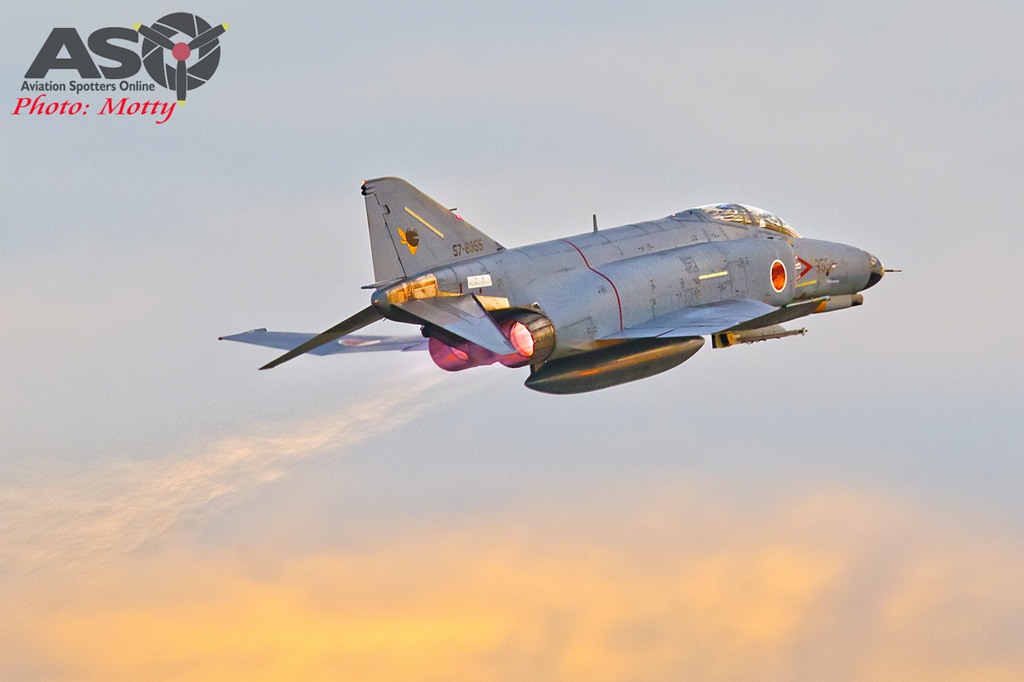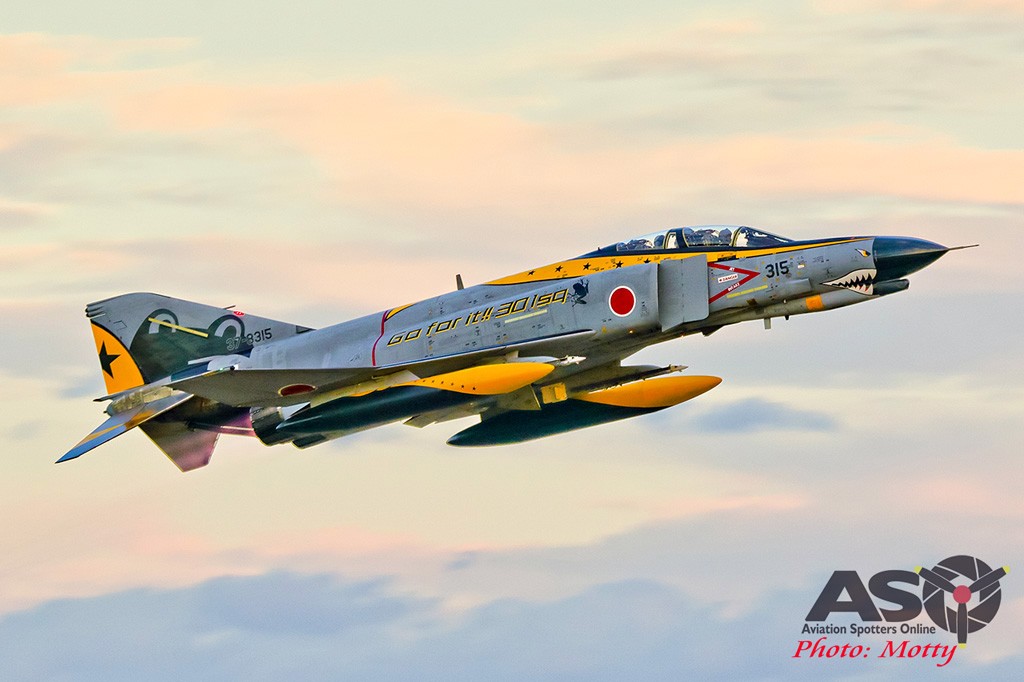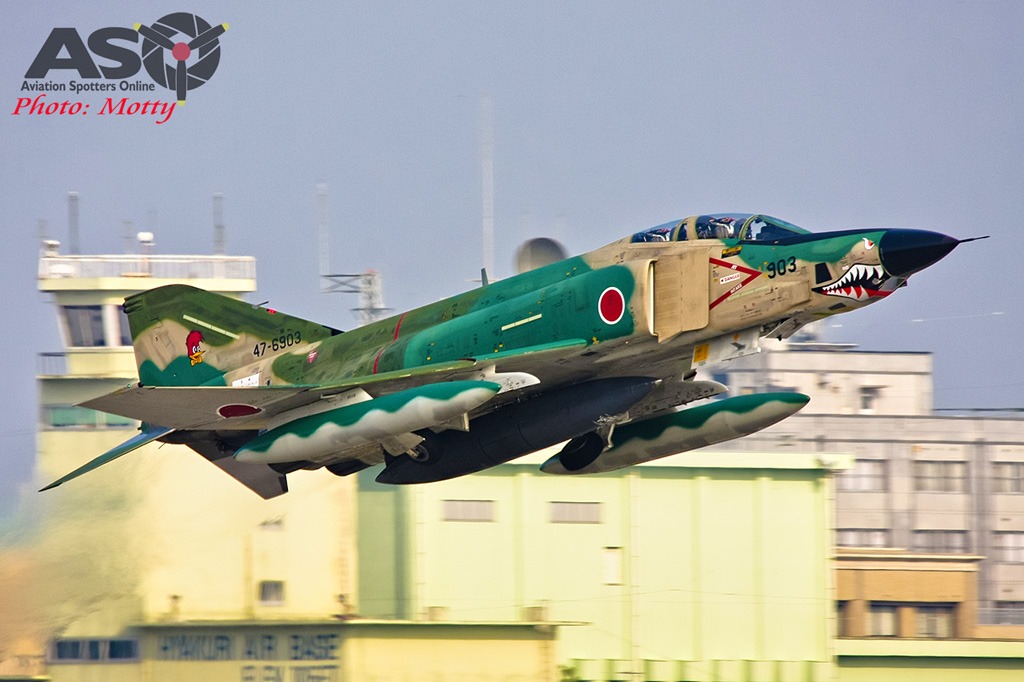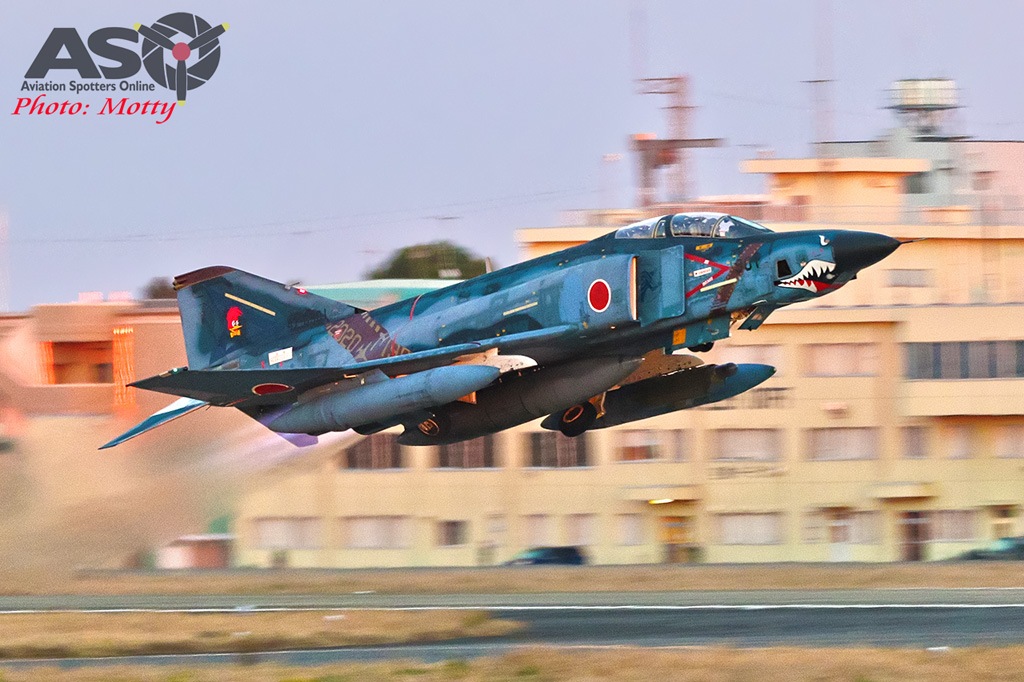Turning and burning, clouds of vapor and that noise! This was the F-4 as I had never seen it before!
With the era of the Phantom drawing to a close in Japan, and circumstances around the world meaning that it’s still likely to be a while before many of us get a real avgeek fix at an airshow, it’s a chance to look back and revisit pleasures-past.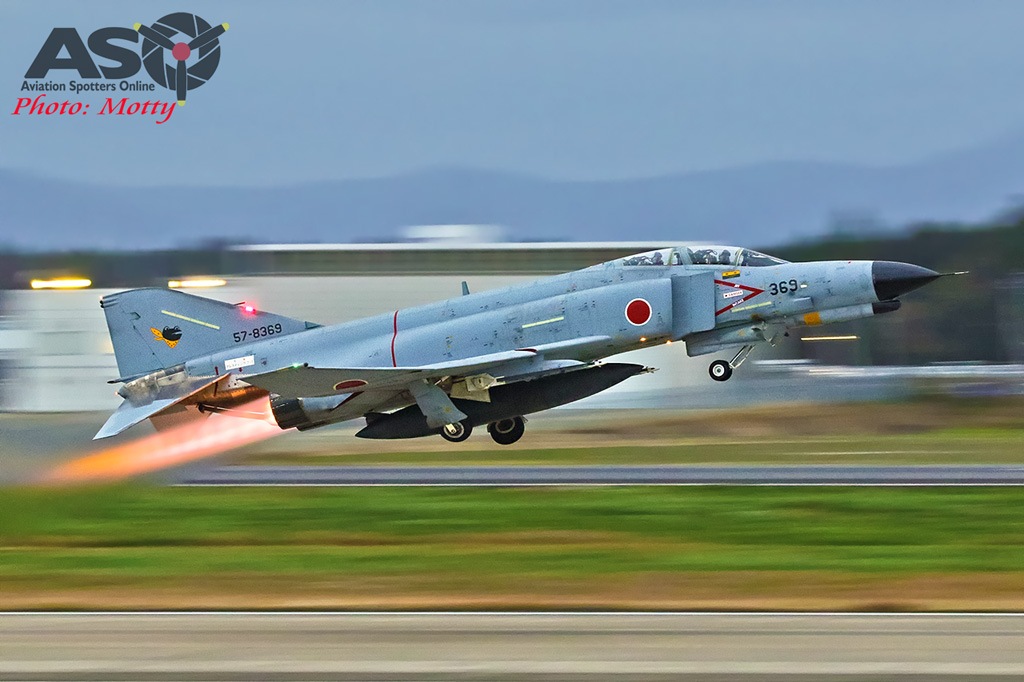
One year ago this week, I had the opportunity to pay another visit to Phantom heaven, JASDF (Japan Air self Defense Force) base Hyakuri in Japan. As the JASDF would be retiring their Phantoms in 2020 (the reconnaissance unit, 501 Hikotai, flew their last missions on the 9th of March this year, and the fighter unit, 301 Hikotai, are winding down their operations now too), this was most likely the last chance I would ever have to see these Phantastic machines in Japan (pretty much certainly now, as things have turned out around the world). To top it off, I made the trip with my good friend, Mark Jessop, who had never seen an F-4 in real life before, so it would be his first time, both in Japan and seeing the mighty Phantom. Also, while I have visited Japan several times over the years and been to a couple of base open days during earlier visits, I have never actually been to one of these shows at Hyakuri either, so it would be my own first time at getting to see some F-4s actually put on a display too. It was to be a trip of firsts for us both.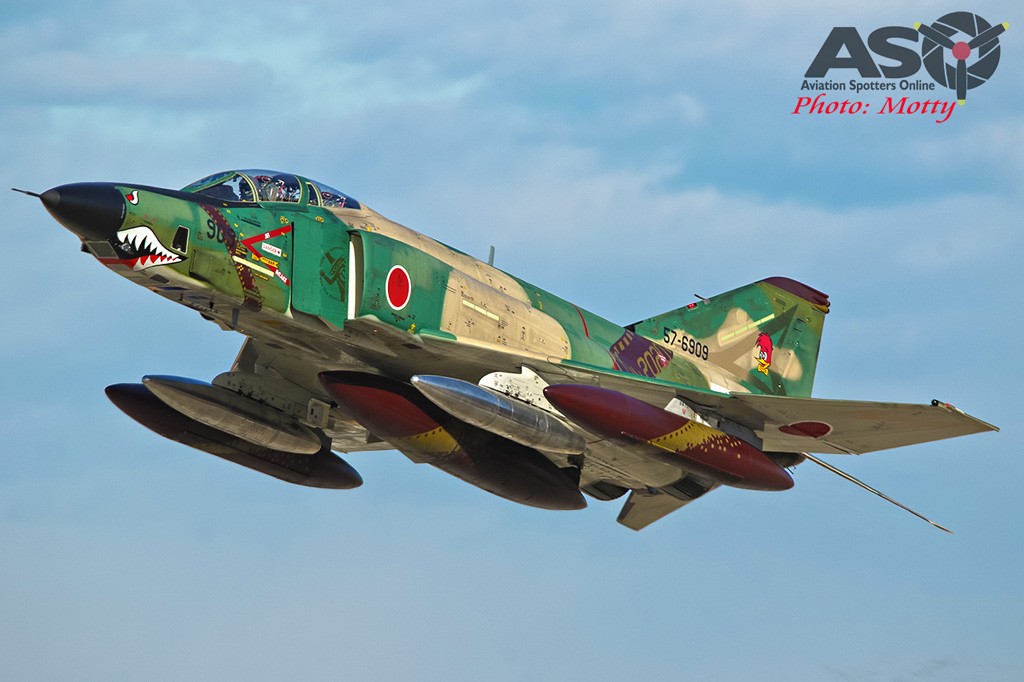
Hyakuri held their Air Festival on the 1st of December so we timed the visit for the weeks either side of that weekend in the hope of catching some display practices before and regular base operations after the show.

On the Monday, we headed for the famous “peace park” with its legendary viewing towers (you can see more about these in my previous article HERE) to await the day’s activities. It looked to be off to a good start as the crews began dragging their aircraft out of the hangars and on to the flight-line, but then a heavy sea-mist rolled in and blanketed the airfield early on which caused the cancellation of the first sorties. The mist was so incredibly thick at times that visibility was down to just a few meters. At one stage we heard a heavy aircraft performing a missed approach from the southern end (Hyakuri also has a civilian terminal for the Ibaraki area on its western side) but only caught the briefest glimpse of it through the clouds as it passed low overhead, to discover that it was actually a JASDF KC-767 tanker (which caused a lot of interest and chatter with some of the European spotters who were there as well). A little later, the area to the north had cleared slightly and we heard, and then saw, the KC-767 making an approach from that direction instead. The visibility was so changeable though that, by the time it had landed, rolled out past us to the southern end of the runway and began backtracking past us again, we could just barely make it out through the mist just a hundred or so meters away!
As the morning progressed the mist began to slowly lift and we were treated to one of the local SAR (Search And Rescue) UH-60 Blackhawks appearing out of the gloom and hover-taxi right past us to conduct training on the airfield just to the south, with streamers of vapor coming of its blade tips in the heavy, moist air. The Air Rescue Wing is Headquartered at Iruma air base and provides detachments for Search and Rescue to most JASDF Bases, with Hyakuri having a pair each of UH-60J helicopters and U-125 fixed-wing aircraft which can often be seen heading out for various missions, even if nothing else does.
Eventually the sun poke through as the sky cleared further and we had our first F-4 movements as an RF-4EJ Kai and RF-4E Kai from the 501st headed out mid-afternoon, giving Mark his first ever experience of the awesome Phantom in action.
Other movements during the afternoon included a visit by one of the JASDF’s new C-2 transports (a first for me) and the departure of the KC-767.
While the Recon jets had made an appearance during the day, the fighters of the 301st Hikotai had been noticeably quiet, but we persevered as, as long as jets are on the tarmac, anything is possible (the JASDF put all the aircraft back into their hangars when flying is finished for the day) and, as dusk approached and the light began to fade (it had become solidly overcast again), there was finally signs of movement. They were going night flying. While conditions were quite poor for photography, it was a chance not to be missed as I have never seen F-4s at night (or close to it) and it made for some great shots as the afterburners lit up in the fading light.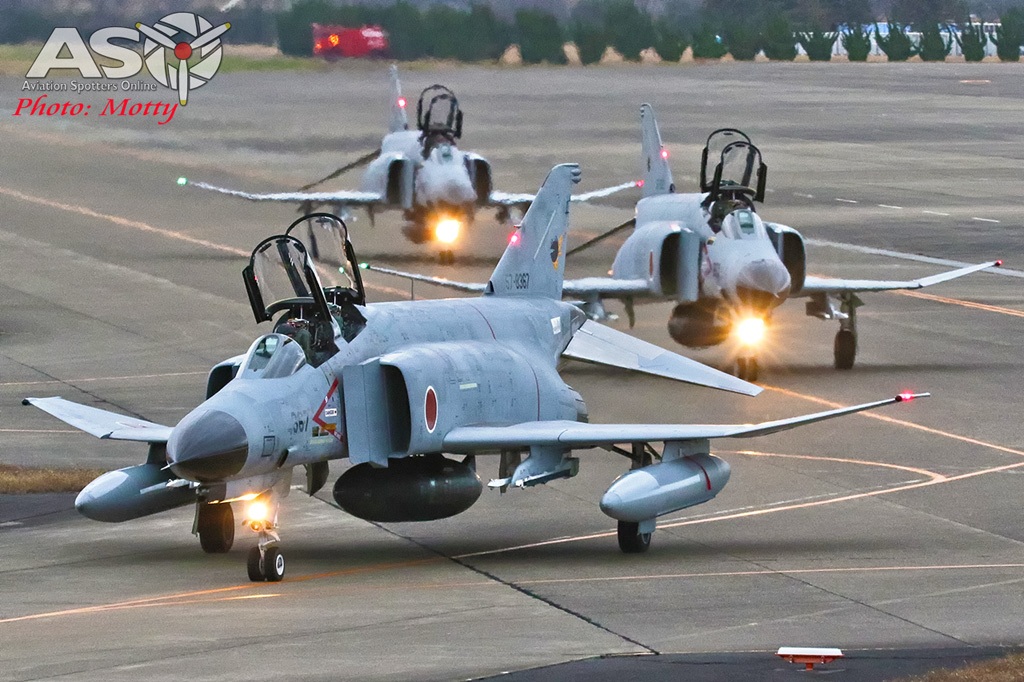
The next morning dawned overcast, cold and wet so we decided to start the day on the western side of the base. The peace park and its towers are on the east and usually the only real spot for morning pics but the cloud cover meant that this wouldn’t be an issue. The local units began practicing for the weekend as we had hoped and being on the western side meant that most of it was directly above us, which was awesome! We were also treated to a visit by an F-15DJ from the 303rd Hikotai at Komatsu which also carried out a practice display before heading home again in the afternoon. The 301st also flew a regular mission in the afternoon which included their specially painted F-4, so that was great chance to get a first look at it in action loaded up with its matching external tanks as well. Wednesday and Thursday followed a similar pattern (and weather, did I mention it was cold?!) which gave us ample opportunities at capturing the different displays.
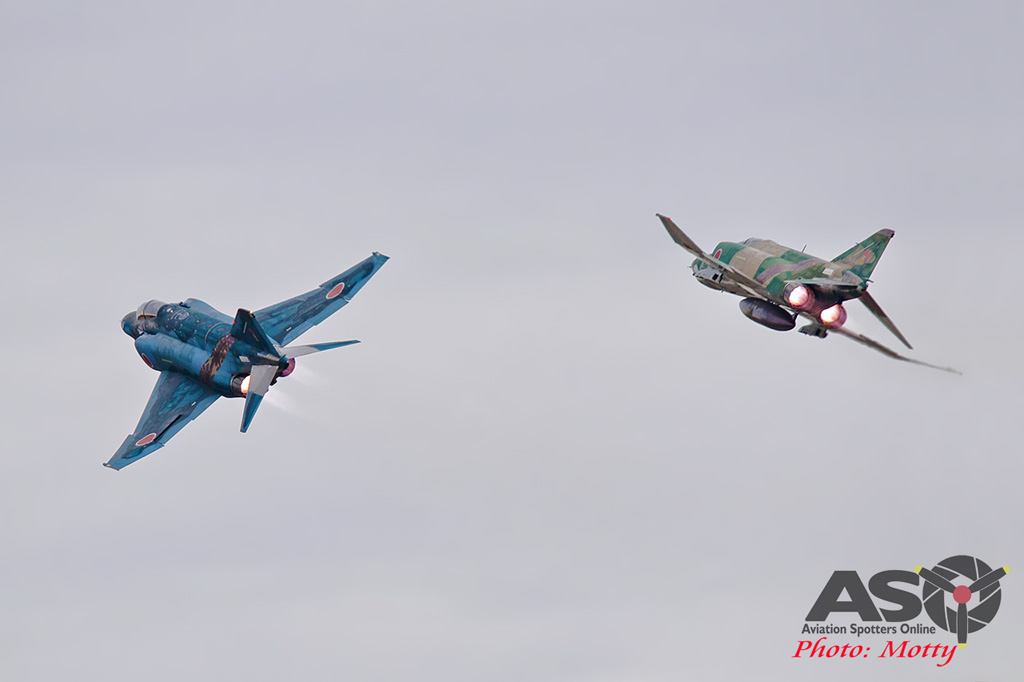
Friday was quiet with the only activity being a few arrivals from other bases for the weekend’s show, including the JASDFs aerobatic team, Blue Impulse, who’s T-4s arrived in ones and twos throughout the afternoon. During some of the quiet times, we took the opportunity to have a look at a couple of local vendors who set up some patch and collectables stalls in the area during the week too.
As their retirement drew near, the 501st had applied some special markings to most of their RF-4s which included a very striking shark mouth design (interestingly, these aircraft wore a similar design when I first saw them back in 2007) and a series of “film strips” on the nose and fuselage with the dates 1961-2020 marking 59 years of operations, first with RF-86 Sabres then the RF-4. Much more subtle was a very low-vis triangular chevron on the tail which was a nod to the original tail markings worn on the units RF-86s and the very early RF-4Es, and the iconic “Spook” cartoon character, which has come to represent the F-4 over the years, poking out of the intakes.
While the public show was scheduled for the Sunday, during our time around the base we were told that there would be a “pre-show” show on the Saturday for the military personnel’s family and friends, and the weather was forecast to be perfect. Certainly an unexpected bonus!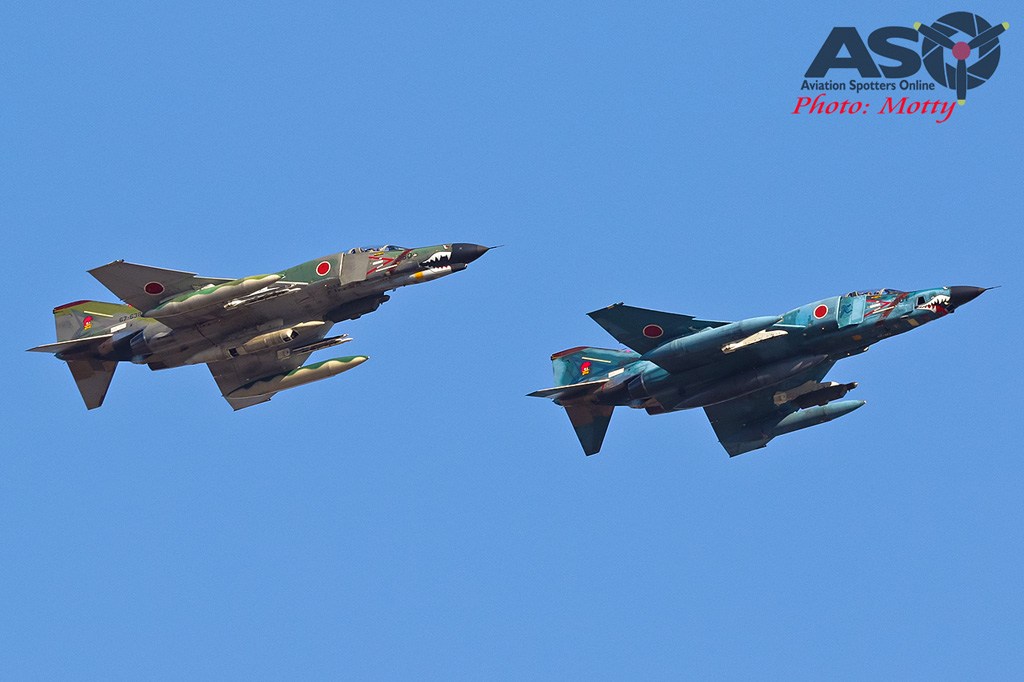
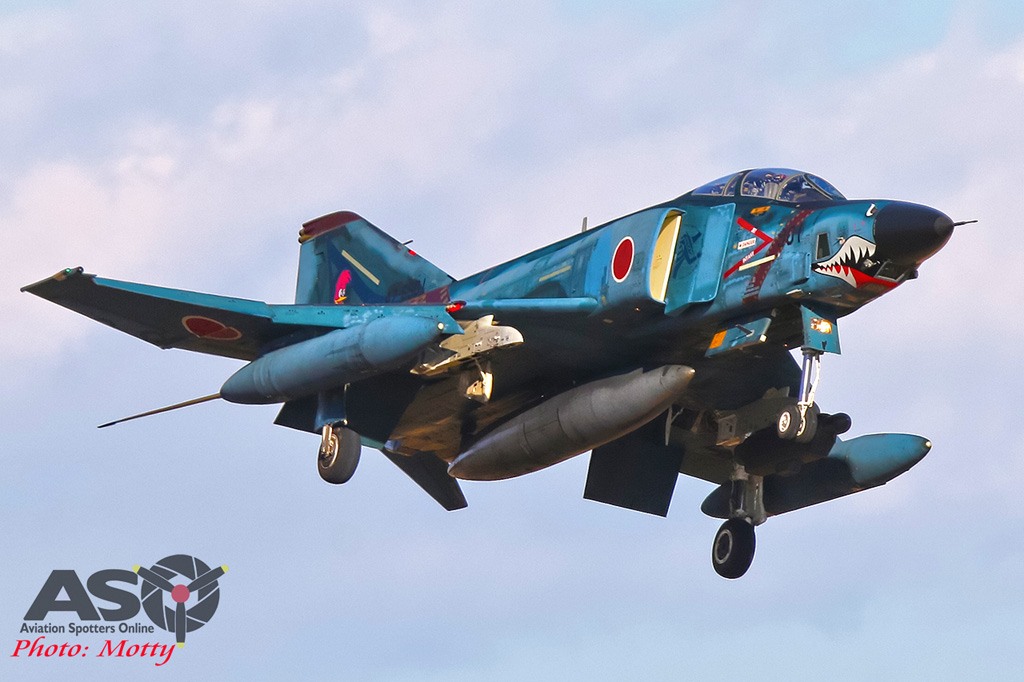
Hyakuri has become an iconic place for spotters over the years as it provides an extraordinary opportunity to get great views of the aircraft based there, particularly the legendary F-4s which have operated with various units at the base over the years. With the JASDFs Phantom operations winding down, this likely to be one of, if not THE, last opportunities to see these machines at a show at their home base so, naturally, spotters from around the world had descended on the area for the chance to see Japan’s Phantoms one Phinal time. The hotel where we were staying seemed to be mostly full of non-Japanese spotters and the numbers only grew as the week progressed and no doubt the situation was the same in other hotels around the area as well. For the weekend shows, some groups even elected to head back out to the base and camp in their vans overnight in order to try and get the best positions in the Peace Park in the mornings.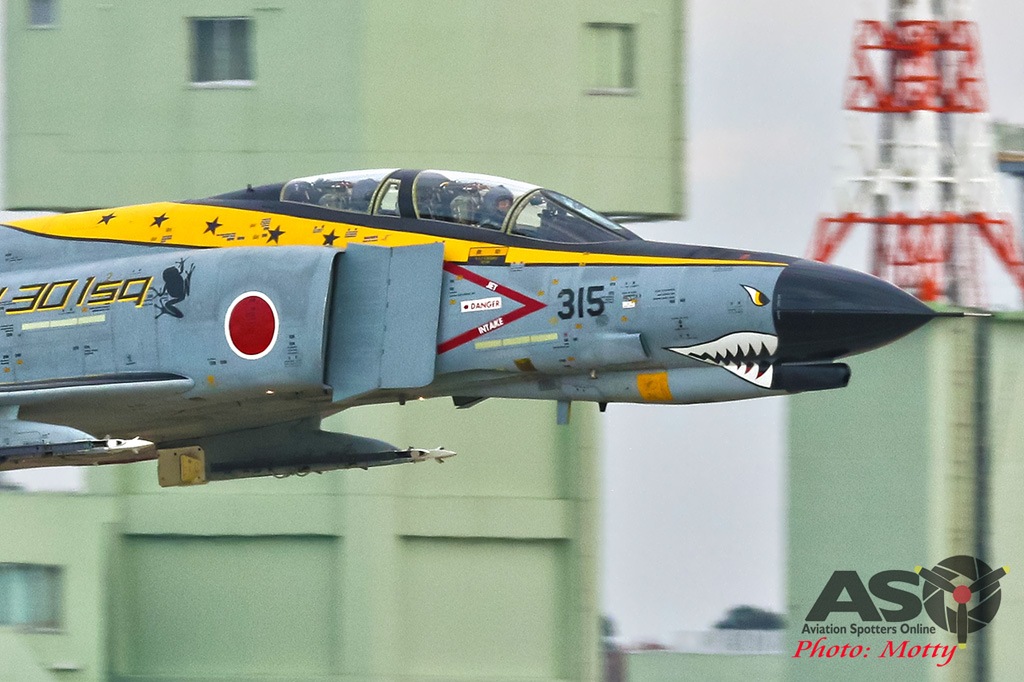
With this in mind, Mark and I decided that, although we’d be shooting into the sun in the morning, most of the Phantom action was scheduled to be in the afternoon, so we would return to our vantage point on the western side of the base in the hope that things might be a little less hectic over there. As it was, we arrived before dawn on Saturday morning to find the small parking area already packed with local spotters who had either camped out overnight or arrived even earlier than us. Nevertheless, we were still able to set up our ladders on the fence line and waited for the day’s activities to begin (while trying to keep warm in the freezing conditions).
The day began with a pair of F-4EJ Kais taking off and returning about half an hour later to perform a few fly-bys before landing.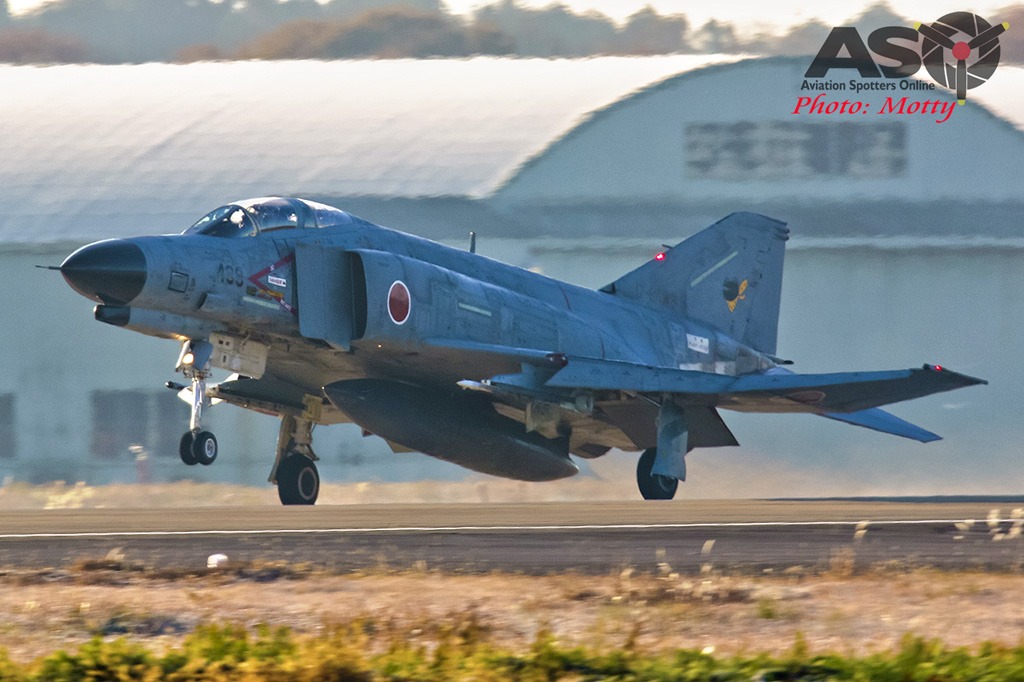
Shortly afterwards a group of six F-4s, three each from 301 and 501 Hikotais, took off with a pair from each unit performing a tactical break after takeoff while the solo jet from 301 stayed low for the length of the runway before pulling up sharply at the end. The group returned after about half an hour in a triangular formation with the three RF-4s leading the three F-4EJs. They made one pass in formation before breaking up to perform some low fly-pasts before landing.
The local SAR detachment then put on a simulation of a rescue mission with the U-125 first on-scene to locate the downed aircrew and dropping a survival package and raft then remaining overhead to provide communications relay and support while the UH-60 arrives to drop rescue specialists and recover the personnel.
Next up was a handling display by an F-15J from the 303rd Hikotai which had visited earlier in the week (they had two machines present for the weekend). The F-15 is always impressive to watch getting thrown about, and the afterburner plumes are incredible, even in full daylight.
After a break for lunch, the Blue Impulse team went up for their show. One of the jets went unserviceable before the Saturday display, so they performed their routine with five jets instead of the usual six.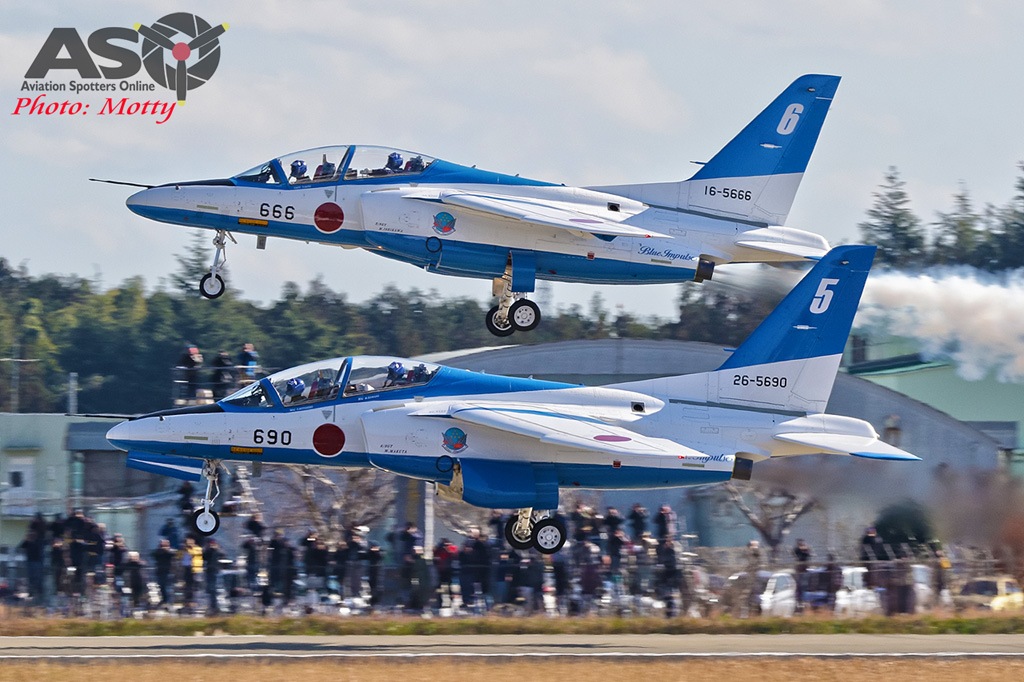
Then, phinally, it was time for what we had all been waiting for, the Phantoms! First up was a trio of F-4EJ Kais from the 301st. Two jets took off as a pair and did a tactical break just after take-off, followed by the solo machine which barely lifted off then stayed very low for the length of the strip before pulling up sharply at the far end. While we had seen all the various display rehearsals during the week, the bonus for the actual displays on the weekend was that the solo element of this display was flown by the specially marked 301st Hikotai jet!
The group carried out a variety of maneuvers with the pair of jets doing various fly-pasts and breaks while the solo jet returned in-between to carry out a range of high energy and slow speed handling displays. All three also carried out a series of mock strafing runs, orbiting above the base and diving down before pulling up and going around again.
The first two jets landed after their display but the solo jet carried out a missed approach and did another, very low pass along the runway before finally landing too.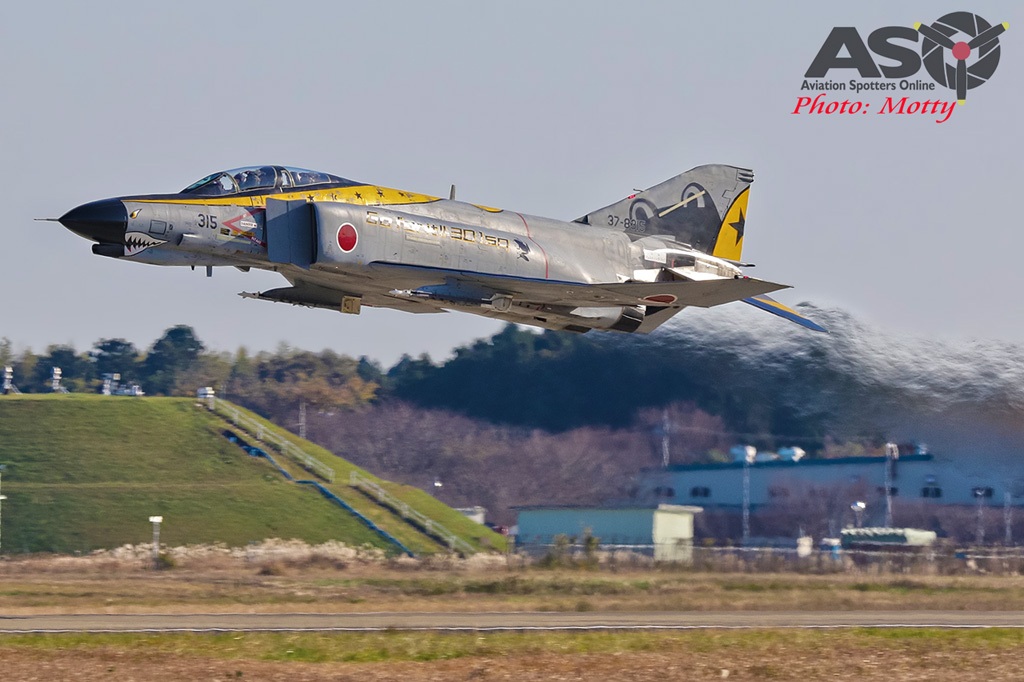
After a little time to get over this awesome show, it was the turn of the 501st, with a pair of RF-4E Kais, one of which was the last airworthy airframe in the two-tone blue maritime camouflage scheme (the other two having been already retired earlier in the year), and fittingly, number 47-6901 , the very first RF-4E delivered to the JASDF back in 1974. The two jets took off in formation and did a break just after take-off before heading into the distance, returning shortly after to do a series of high speed runs and hard turns, one after the other, simulating their low-level tactical reconnaissance mission. Even having seen the practices during the week, it was difficult to know just where to look with one or the other popping out from behind the trees and roaring overhead, ‘burners blazing. These two jets landing at the end of their routine was also the end of the show for the day.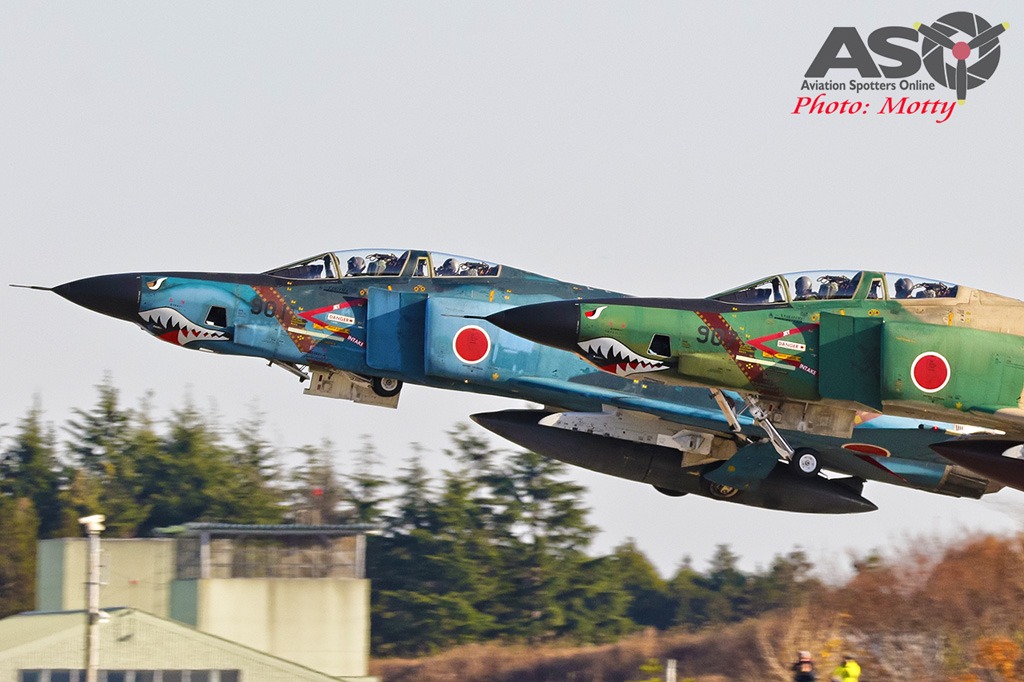
We decided to stick with our off-base vantage point for the public show on Sunday as restrictions on transport to the show (all transport to the show was by train and bus only, no private vehicles) and the sheer numbers that would be present (shows in Japan are usually packed at the best of times, let alone the Phinal Phantom show) meant that we weren’t sure of even getting in and finding a spot on the crowd-line and would not have the flexibility to move locations quickly if we wanted to. Plus, the light would be better for the afternoon displays on that side (depending on the weather). Although we arrived even earlier on the Sunday, the spotting area on the western side turned out to be not as busy as Saturday, presumably as many people had actually gone on base for the public day.
Sunday’s show followed a similar format to the day before, although the clouds had returned unfortunately. The morning flying was a little more subdued with the returning jets a little more sedate in their fly-pasts than on Saturday, possibly due to considerations for the surrounding residents on a Sunday morning.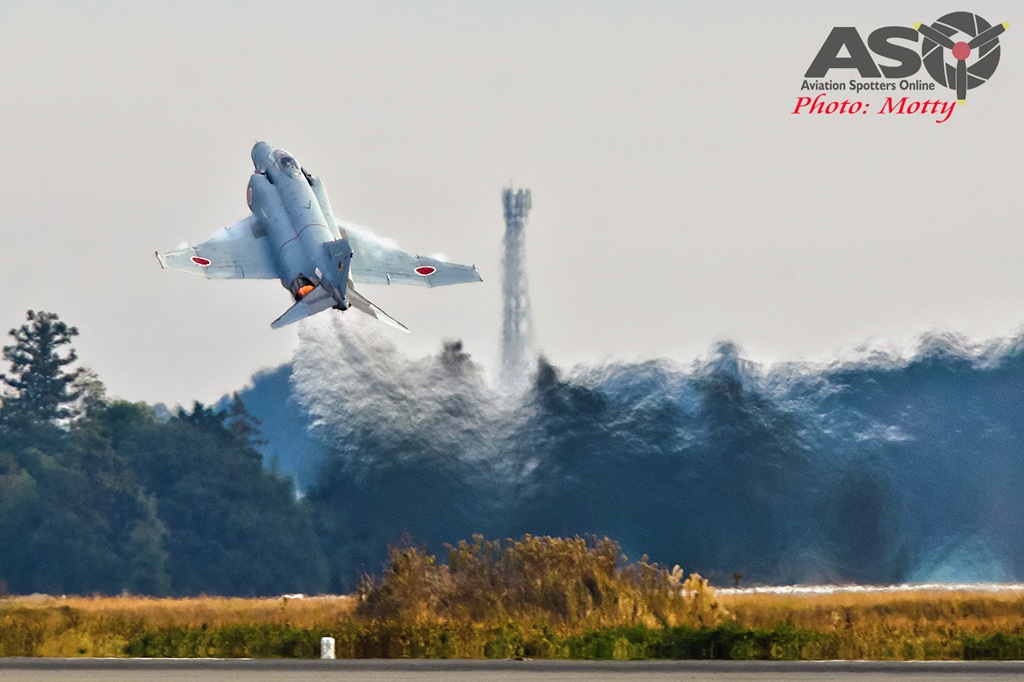
After lunch, as the timeslot for the first F-4 display approached, a change of wind direction meant that the jets would be taking off from the northern end of the strip for the first time during our visit, which was great as it would make for some more interesting angles. It also meant that, while the specially painted F-4 from the 301st started from in front of the crowd, the other, regular jets which had been pre-positioned at a dispersal at the southern end of the runway for the show, had to taxi up to the northern end for takeoff, which they did using the western runway, usually used for civilian flights, which is very close to the fence line where we were. And just to top it off, the two jets used on Sunday were numbers 439 and 440, the last two Phantoms ever built. A real treat for Phantom Phans.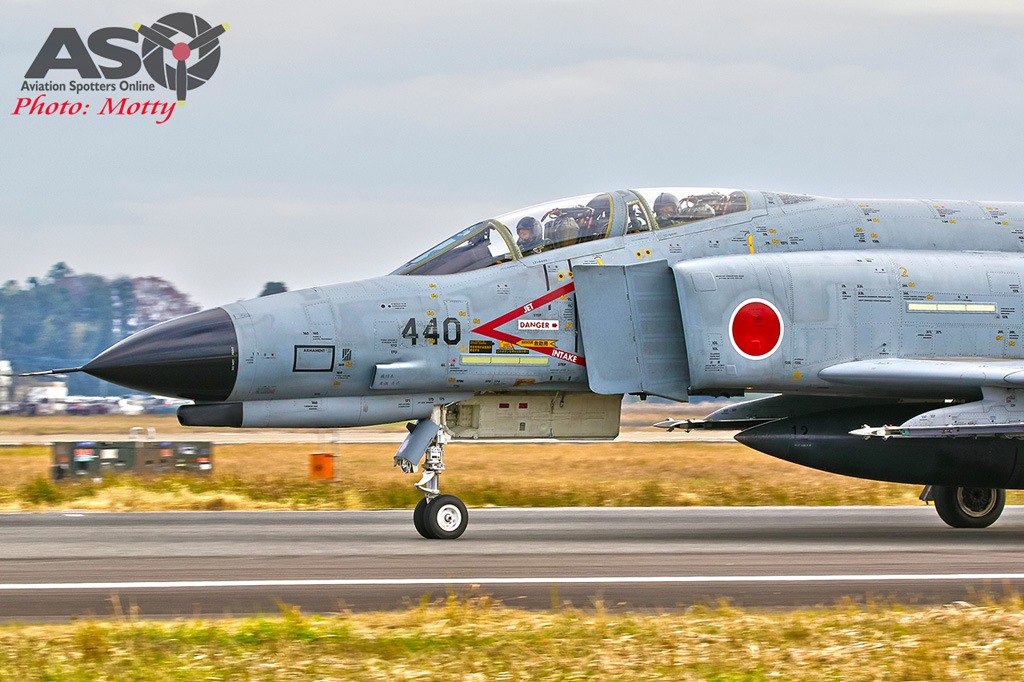
As luck would have it, after the first couple of passes and the F-4s began their mock strafing runs, the sun broke through the clouds and treated us to some great light with the added bonus of the jets now pulling clouds of vapor out of the humid air. Absolutely fantastic!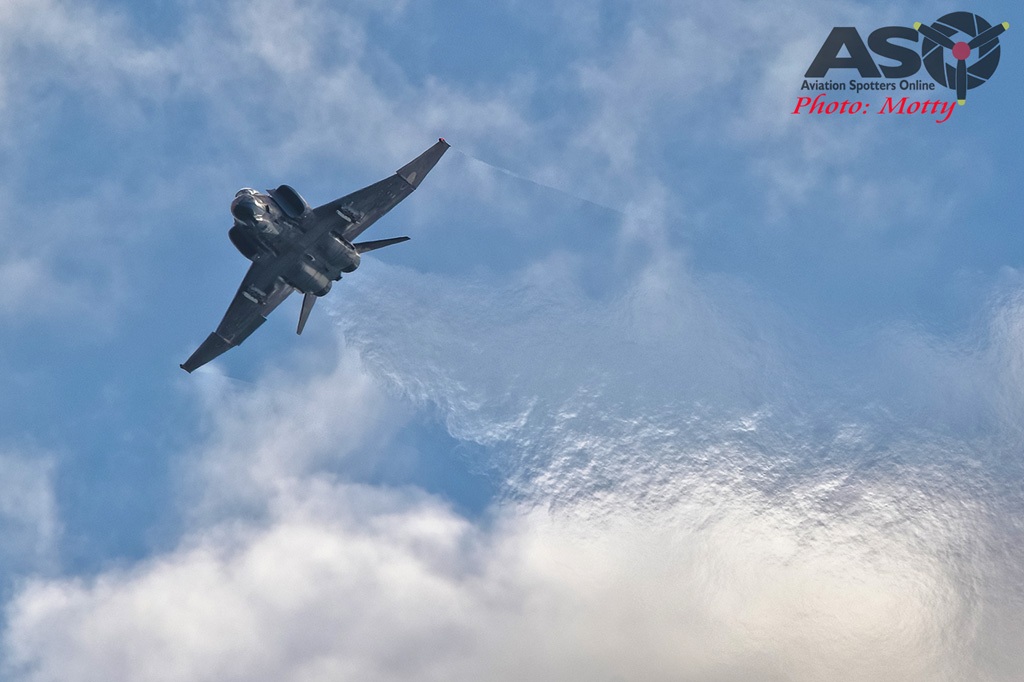
Once the specially painted 301 jet had made its final low pass and landed, it was time for the RFs from 501, with the same two airframes as the day before. More noise. More vapor. And the sun stayed out for them as well.
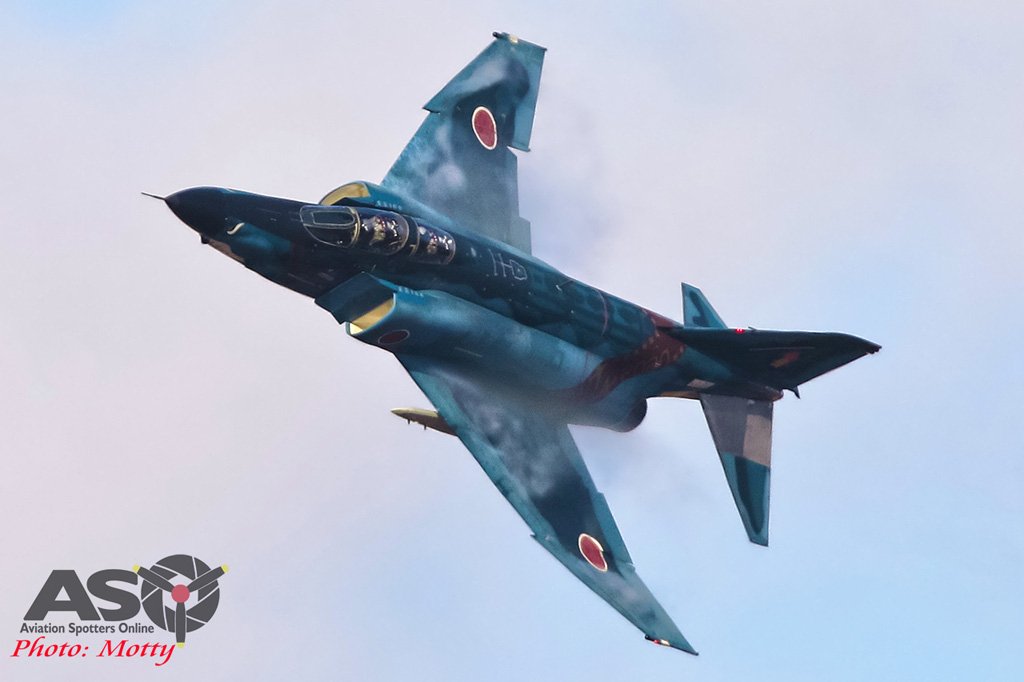
The RFs were the final display in what had been a great weekend’s show and, as they taxied back to the lines to shut down, the huge crowds began to file out and make their way back to homes and hotels. Although there was still a great many dedicated fans who hung around to savor the sight of a Phantom one last time or get those final static shots in the afternoon light, as well as catch some of the visiting aircraft starting up and heading back to their home bases as well, which included the Blue Impulse team and the pair of F-15s.
It was expected that the following day (Monday) would be a day off for the base personnel, in lieu of the weekend, plus the weather was terrible, so we headed into Tokyo to visit the hobby and book stores (another first-time experience for Mark). I headed out on Tuesday morning but, other than some SAR flight movements, the visiting T-7 departing and a few maintenance activities on the flight-line it was another no-fly day too.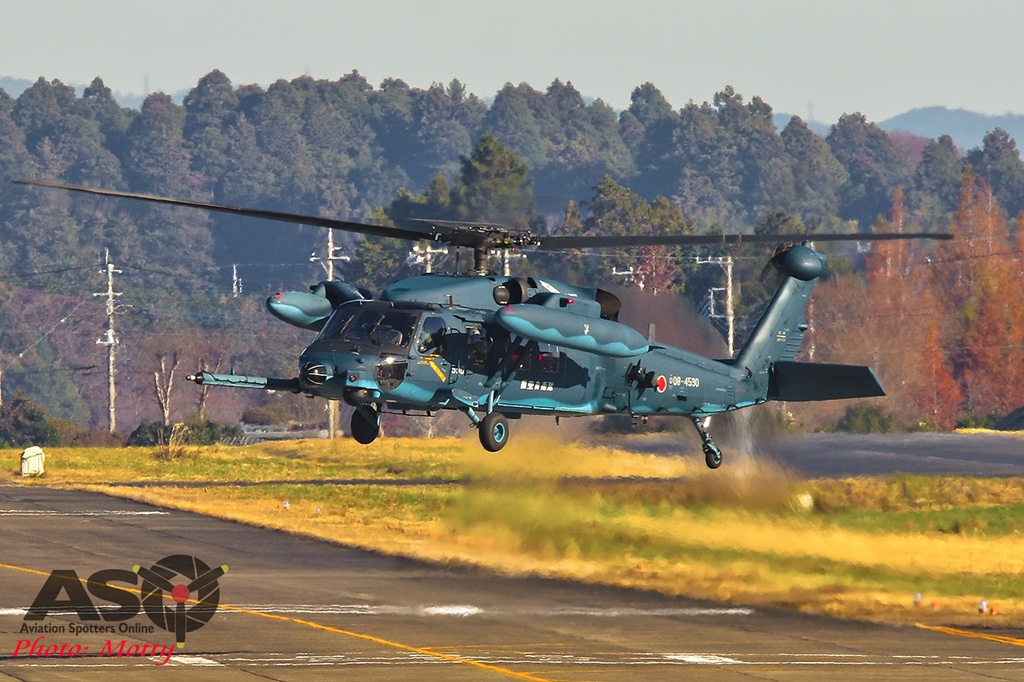
Wednesday and Thursday saw a return to normal flying so we had a great chance to capture regular operations from the towers in the mornings and the western side in the afternoons for another couple of days, in some nice light. In spite of the amazing and dynamic displays we had seen the previous week and over the weekend, there were still a few surprises to be had. When we arrived on Wednesday morning there was some sort of ceremony and official photo opportunity on the 501 Hokotai’s flight-line where they positioned three of their jets as a backdrop to the events, one of which was another of the blue RF-4E Kais which had flown its last sortie just a few weeks before our visit. So that gave us the opportunity to catch another airframe / marking combination that we might otherwise have missed.
A U-125 from the Hiko Tenkentai (Flight Check Squadron) at Iruma, in its attractive red and white colour scheme, came and went throughout Wednesday while an Iroquois and Chinook from the Japan Ground Sef Defense Force (JGSDF) made brief visits or fly-pasts on Thursday and there was the unusual sight of one of the local SAR flight Blackhawks orbiting over the base on Thursday afternoon, dropping parachutists one at a time, as some sort of training exercise.
But the main purpose, obviously, was to catch Phantoms for as long as we could before we had to go, and we weren’t disappointed, with both units putting up several sorties over the two days, including in some very nice afternoon light.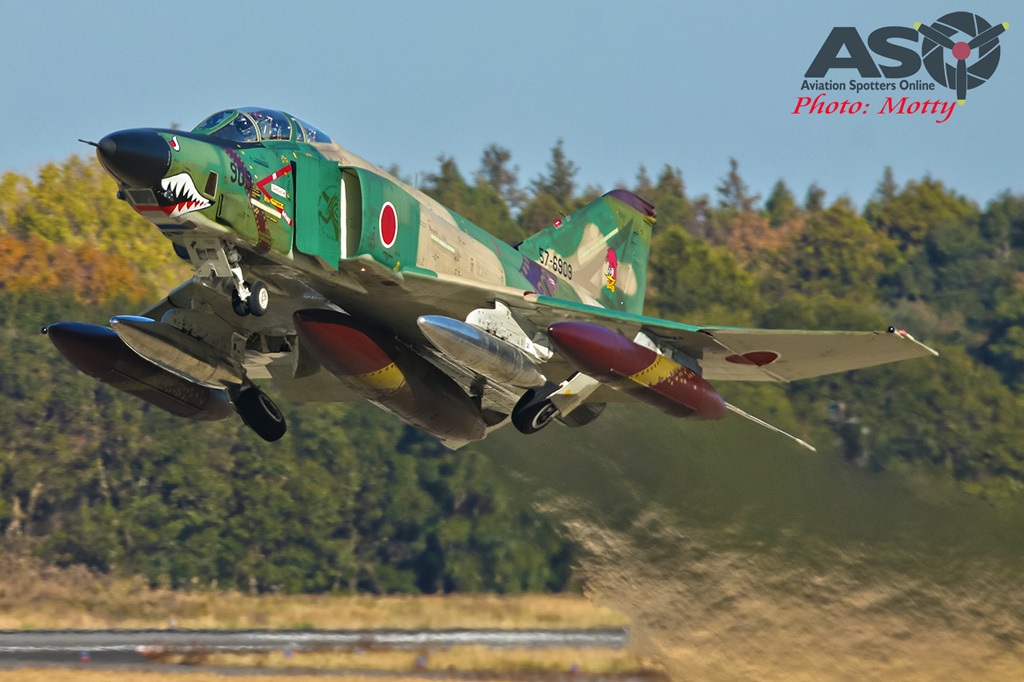
As the last Phantom headed into the fading light on Thursday afternoon (fittingly, the 301st special), it was time to head back to the hotel, indulge in a few local beverages and reflect on what had been an amazing couple of weeks for us both. Catching the iconic Phantom in Japan has been the goal of many spotters around the world for many years and, thanks to the wonderful people and very understanding authorities in Japan, it must surely rate as one of the most enjoyable too.
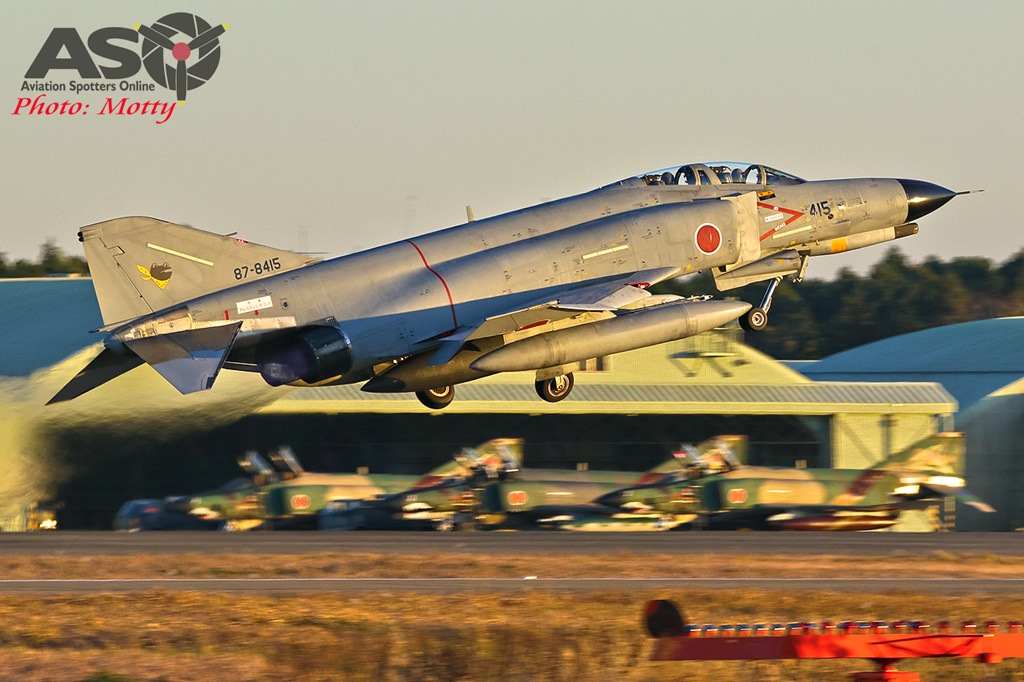
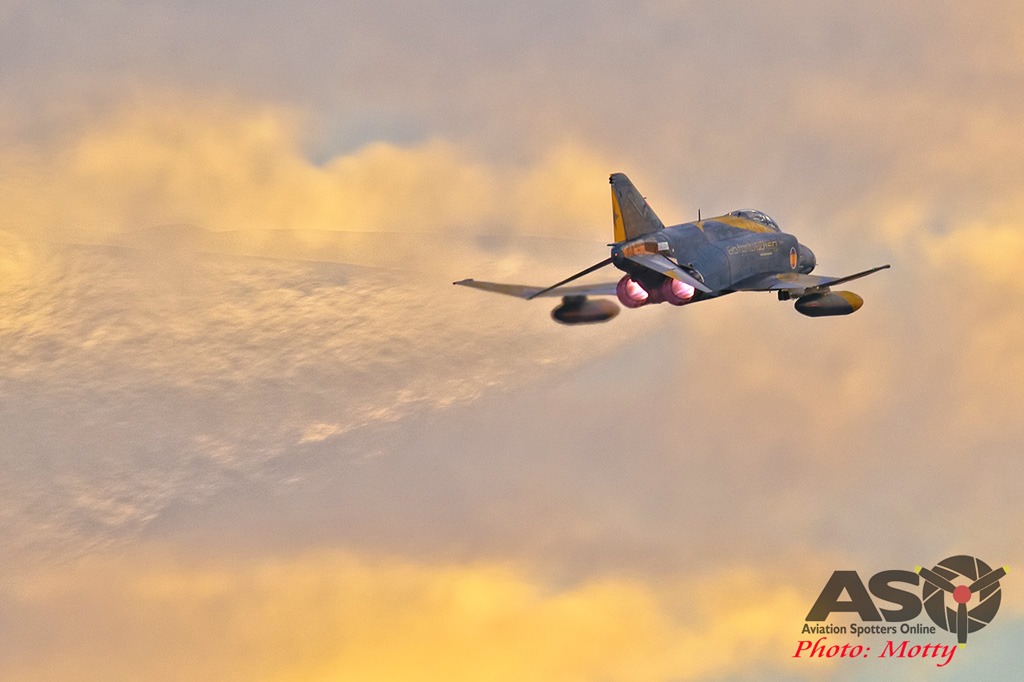
I am very lucky to have been able to make a few trips to Japan in pursuit of the mighty F-4 over the years and, as events around the world have unfortunately developed in the time since our visit, and with the final retirement of the very last JASDF F-4s rapidly approaching as I write this, it is very likely that this was also the last time I will get to see my favorite aircraft in such a wonderful place. I am glad I got to share it with a good friend and his chance to Phinally “catch” a Phantom too.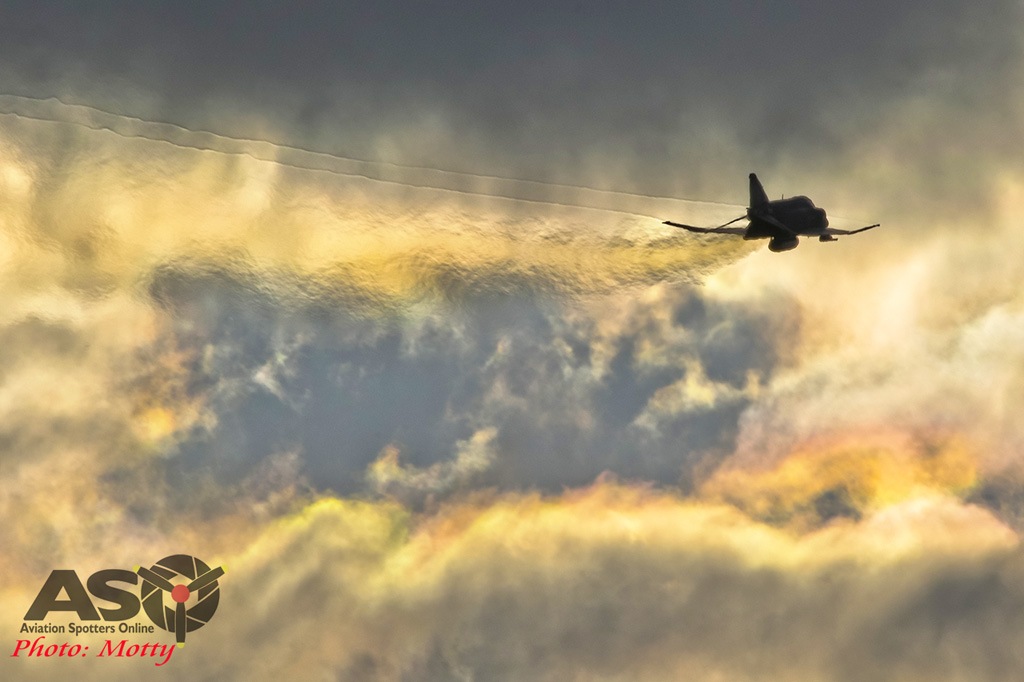
Pharewell old Phriend.



